37,000 financial degrees or certificates awarded annually.
Nearly 40,000 annual STEM graduates. Millions in Fintech education investment.
#1 ranked state for higher education. 380,000+ financial services workers. 285,000+ IT workers.

37,000 financial degrees or certificates awarded annually.
Nearly 40,000 annual STEM graduates. Millions in Fintech education investment.
#1 ranked state for higher education. 380,000+ financial services workers. 285,000+ IT workers.

237,000+ high-tech workers.
4th largest high-tech workforce in U.S. #1 High-tech employment in the southeast. 120 commercial banks with $195 billion in assets. 18 international bank headquarters. 4th best test climate. 0% personal income tax.
FINASTRA Lake Mary, FLA playbook for every CEO and C-Suite leader looking to help their company prosper—or even survive—in the difficult, uncertain days to come. By Ram Charan

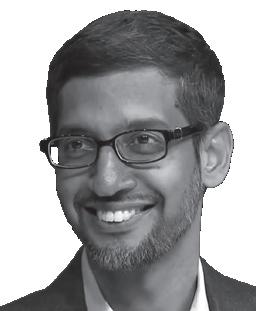


Long derided as ‘flyover country,’ the nation’s industrial core is again taking flight, thanks to EVs, pragmatic politics, seismic shifts in manufacturing and a deep rethink of the global supply chain. China who?
ByChief Executive Staff


With a $50 million wager on electric vehicles, Jim Farley has Ford Motor taking its wildest ride—and boldest bets— since the Model T.
 By
By
Dale Buss
How do the best CEOs approach strategy? A new book by three senior McKinsey partners shares insights based on in-depth interviews with 67 of the most successful business leaders of the 21st century.
ByCarolyn Dewar, Scott Keller and Vikram Malhotra
The employee mental health crisis didn’t start with Covid—and it won’t end with it. A look at how (and why) CEOs are investing in their employees’ peace of mind.
By C.J. Prince
Gathered for Chief Executive’s two-day PE-Backed CEO Summit, PE leadership veterans and experts discussed tactics for addressing the unique tensions of the role. Some takeaways. By Dale Buss
08
‘They’re My People’ CEO Vladimir Gendelman’s employees in Ukraine were shelled and shot at, and witnessed unimaginable horrors. Here’s what he did about it. As told to Dan Bigman
Chief Executive (ISSN 0160-4724 & USPS # 431-710), Number 314, Spring 2022. Established in 1977, Chief Executive is published bimonthly by Chief Executive Group LLC at 105 West Park Drive, Brentwood, TN 37027. Wayne Cooper, Executive Chairman, Marshall Cooper, CEO. © Copyright 2021 by Chief Executive Group LLC. All rights reserved. Published and printed in the United States. Reproduction in whole or in part without permission is strictly prohibited. Basic annual subscription rate is $99. U.S. single-copy price is $33. Back issues are $33 each. Periodicals postage paid at Brentwood, TN and additional mailing offices.
POSTMASTER: Send all UAA to CFS. NON-POSTAL AND MILITARY FACILITIES: send address corrections to Chief Executive Group LLC at 105 West Park Drive, Brentwood, TN 37027.
Subscription Customer Service
Chief Executive Group, LLC 105 West Park Drive Brentwood, TN 37027
EDITOR Dan Bigman
MANAGING EDITOR Jennifer Pellet
DIGITAL EDITOR C.J. Prince
ART DIRECTOR Gayle Erickson
PRODUCTION DIRECTOR Rose Sullivan
CHIEF COPY EDITOR Rebecca M. Cooper
CONTRIBUTING EDITORS Dale Buss, Ram Charan, Daniel Fisher, Marshall Goldsmith, Kelly Goldsmith, Patrick Lencioni, Jeffrey Sonnenfeld
EXECUTIVE EDITOR, STRATEGICCXO360 Emily DeNitto
DIGITAL PRODUCER Alessandra Cooper
VP, PUBLISHER, CHIEF EXECUTIVE Christopher J. Chalk | 847-730-3662 cchalk@chiefexecutive.net
DIRECTOR, BUSINESS DEVELOPMENT Lisa Cooper | 203-889-4983 lcooper@chiefexecutive.net
MANAGER, STRATEGIC PARTNERSHIPS Rachel O’Rourke | 615-592-1198 rorourke@chiefexecutive.net
CHIEF EXECUTIVE GROUP
EXECUTIVE CHAIRMAN Wayne Cooper
CHIEF EXECUTIVE OFFICER Marshall Cooper
CHIEF CONTENT OFFICER Dan Bigman
DIRECTOR OF EVENTS & PUBLISHER, CORPORATE BOARD MEMBER Jamie Tassa
VP, PUBLISHER, STRATEGICCXO360.COM KimMarie Hagerty
DIRECTOR OF MARKETING Simon O’Neill
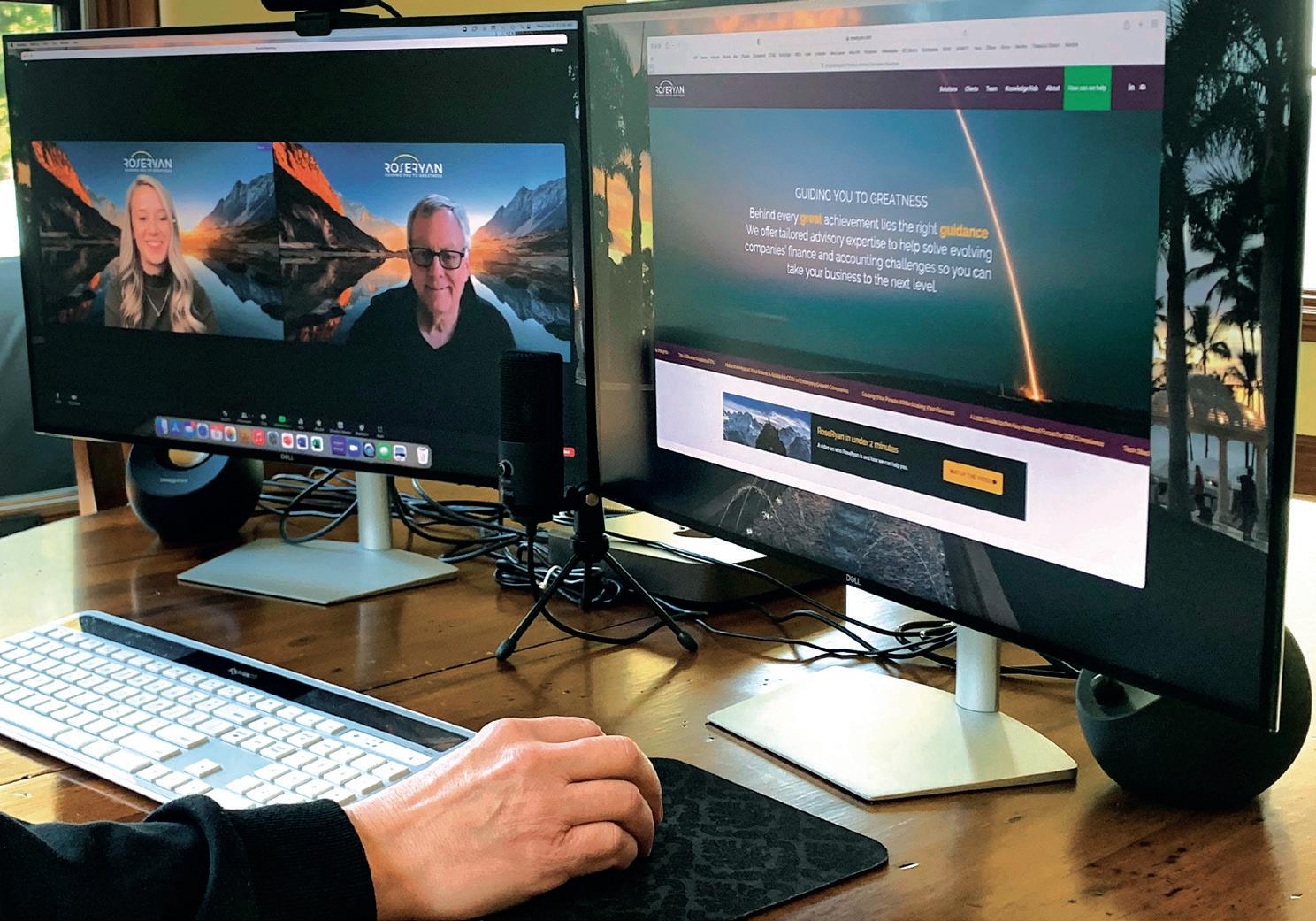
VICE PRESIDENT Kendra Jalbert
HR MANAGER / OFFICE ADMINISTRATOR Patricia Amato
RESEARCH DIRECTOR Melanie Nolen
DATA SERVICES DIRECTOR Jonathan Lee
DIRECTOR, DIGITAL PRODUCTS Leigh Townes
ASSISTANT CONTROLLER Brittney Smith
STAFF ACCOUNTANT Marian Dela Cruz
MARKETING MANAGER Simone Bunsen
EVENTS & MEMBERSHIP MANAGER Rachael Gaffney
EVENTS COORDINATOR KP Wilinson
DATA ANALYST Denise Gilson
CLIENT SUCCESS MANAGER Victoria Campbell
CLIENT SUCCESS COORDINATOR Aftan Walls
STRATEGIC PARTNERSHIPS ASSOCIATE Lara Morrison
RESEARCH ANALYST Isabella Mourgelas
PRESIDENT Rob Grabill
EXECUTIVE DIRECTOR Chuck Smith
DIRECTOR OF OPERATIONS JoEllen Belcher
MARKETING DIRECTOR Janine O’Dowd
DIRECTOR OF MEMBER SERVICES Brandon McGinnis
SALES SUPPORT ASSOCIATE Brittany Hochradel
P: 615-592-1380 E: subscriptions@chiefexecutive.net W: ChiefExecutive.net/magazine

CEOS REACTED (mostly) admirably to the invasion of Ukraine (with the predictable exception of multiple French conglomerates). Some combination of a sense of justice, sanctions and public shaming forced companies to fold their tents and leave Russia at great expense and pain.
In retrospect, the stew of ingredients that went into Russia’s invasion now seem wholly predictive: the all-powerful dictator of a country with a proud history exploiting nationalism through visions of restored imperial glory; the creation of a cult of personality around an isolated and insulated leader; a corrupt political and economic system that rewards absolute loyalty to the leader; direct threats to a smaller neighbor under flimsy claims of reunification and liberation; a demonstrated willingness to suppress ethnic minorities; the brutal elimination of domestic political opposition and criticism; the destruction of an independent press; actual and de facto state control of critical industries and companies; and the freedom to act geopolitically with near impunity under an umbrella of nuclear weapons.
As we look for lessons from the past few months, the most essential one is this: Every one of these same ingredients exists in China today. But when it comes to China, the stakes and the risks are far larger—and so is the complexity. That’s why it is imperative that CEOs and boards start thinking through how you will potentially navigate a post-China environment sooner than later—if you haven’t already. Anything else would be negligent toward your employees, communities, clients and investors.
It is naïve to downplay the importance of the meeting held just 20 days prior to the invasion between strongmen Putin and Xi. Though the specifics were kept secret, it would not be unreasonable to assume that the dictators—united by the threat by democracy to their power—vowed to support one another diplomatically, politically, militarily and economically in their respective regions of influence, beginning with the capture of Ukraine for Russia and Taiwan for China.

Their official public statement following the meeting laid out a new relationship with “no limits” and a strategic shift “that has far-reaching impact on both China and Russia and the world, and will not waiver in the past, present and future.” The communique also said the two leaders would “strongly support each other in safeguarding sovereignty, security and development interests [and] effectively deal with external interference and regional security threats.”
History teaches us, and Ukraine reminds us, that it is worth taking dictators at their word, and that authoritarian regimes, lacking checks and balances, public squares and passionate feuds are inherently weak, unstable and unpredictable, afraid of their people and prone to doing unpredictable, illogical things. Like invading neighbors.
The best you can do in the face of all this growing uncertainty is to let Russia remind you of what could happen in China. And start now.
—Marshall Cooper, CEO, Chief Executive Group
ADAM ARON
President and Chief Executive, AMC
KEN FRAZIER
Executive Chairman Merck & Co. 2021 CEO of the Year
DAN GLASER
President and Chief Executive, Marsh & McLennan
FRED HASSAN
Former Chairman, Bausch & Lomb; Partner, Warburg Pincus
MARILLYN A. HEWSON
Former Chair and Chief Executive, Lockheed Martin 2018 CEO of the Year
TAMARA LUNDGREN
President and Chief Executive, Schnitzer Steel Industries
BRIAN MOYNIHAN
Chairman and Chief Executive, Bank of America 2020 CEO of the Year
ROBERT NARDELLI Chief Executive, XLR-8
THOMAS J. QUINLAN III
Chairman, President and Chief Executive, LSC Communications
JEFFREY SONNENFELD
President and Chief Executive, The Chief Executive Leadership Institute, Yale School of Management
CARMINE DI SIBIO Global Chairman & CEO, EY Exclusive Adviser to the Selection Committee
TED BILILIES, PH.D. Chief Talent Officer, Managing Director, AlixPartners
CONTACT US
Chief Executive Group LLC 105 Westpark Dr., Suite 400 Brentwood, TN
Phone: 203.930.2700 Fax: 203.930.2701 ChiefExecutive.net
LETTERS TO THE EDITOR letters@ChiefExecutive.net
Advertising, Custom Publishing, Events, Roundtables & Conferences
Phone: 847.730.3662 Fax: 847.730.3666 advertising@ChiefExecutive.net
REPRINTS Phone: 203.889.4974


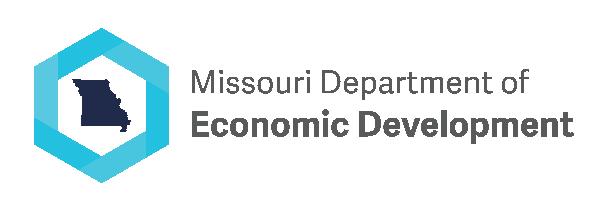

Insights from Chief Executive Group’s CEO Confidence Index, a widely followed monthly poll of CEOs, including members of the Chief Executive Network (CEN), our nationwide membership organization that helps C-Suite executives improve their effectiveness and gain competitive advantages. For more information, visit ChiefExecutiveNetwork.com.
THE RANGE OF CHALLENGES U.S. BUSINESSES HAVE GONE through in the past two years is mind-boggling. But perhaps more impressive is how America’s CEOs have remained focused and determined to pull through. And not just for the sake of their business, but also for the well-being of employees and communities.
From a global pandemic to social unrest, to talent shortages, to supply chain disruptions, to record-high inflation—and now, a war in Europe. Today’s business leaders have gone through difficulties that very few others, if any, have in such a short span. Yet, you’ve remained optimistic.
When the Iraq war began in 2003, our leading indicator showed CEO confidence dropping to 4.97 on our 10-point scale where 1 is poor and 10 is excellent. This time, the war in Ukraine hasn’t deterred you. In the first days of March, less than a week after the invasion of Ukraine by Russia, our CEO Confidence Index registered a rating of 6.71 out of 10 when looking at business conditions 12 months ahead—and a 6.79/10 when assessing the current environment. Both numbers were up month-over-month.
Let’s be clear, though: CEOs are not shrugging the war off, but many point to the resounding unity of the West in its response to condemn Russia and Putin’s actions as a signal for a global recovery. With Covid now nearly in the rear-view mirror and demand remaining strong, CEOs are hopeful, and worries over inflation and the supply chain are outshined by hope that a year down the line, the pandemic and the host of challenges it sparked will be largely controlled.
As one CEO put it: “Consumers have funds and jobs and are spending. Pent-up demand, especially for travel and entertainment, will hit as the world opens up in the new ‘post-pandemic’ world.”
—Melanie Nolen, Research Editor, and Isabella Mourgelas, Research Analyst
ARKANSAS ECONOMIC DEVELOPMENT COMMISSION arkansasedc.com 33
CORPORATE BOARD MEMBER NETWORK boardmember.com/cbmnetwork 61
CEO AND SENIOR EXECUTIVE COMPENSATION REPORT FOR PRIVATE COMPANIES chiefexecutive.net/compreport 71
CEO 100 chiefexecutivenetwork.com/ceo100 51
CHIEF EXECUTIVE NETWORK chiefexecutivenetwork.com 53
COLORADO OFFICE OF ECONOMIC DEVELOPMENT & INTERNATIONAL TRADE choosecolorado.com 17
DELOITTE LOCATION SERVICES www.deloitte.com 18, 19
ENTERPRISE FLORIDA enterpriseflorida.com INSIDE FRONT COVER GREATER FORT LAUDERDALE ALLIANCE lesstaxing.com 3 JOBSOHIO jobsohio.com OUTSIDE BACK COVER
LEADERSHIP CONFERENCE chiefexecutive.net/leadershipconference 49
LOUISIANA Economicopportunitylouisiana.com/ 15
MELMARK melmark.org 34, 35
MICHIGAN ECONOMIC DEVELOPMENT CORPORATION michiganbusiness.org/pure-opportunity 11
MISSOURI ONE START MissouriOneStart.com 5
NICHOLAS AIR NicholasAir.com INSIDE BACK COVER, 74-78
SMART MANUFACTURING SUMMIT chiefexecutive.net/smartmanufacturingsummit 7
SQUEEZE MEDIA squeezemedia.com/ 47
TENNESSEE DEPARTMENT OF ECONOMIC AND COMMUNITY DEVELOPMENT tnecd.com 13
TEXAS ECONOMIC DEVELOPMENT CORPORATION businessintexas.com 31
TOYOTA WAY likerleanadvisors.com/ 45
WINDSTREAM ENTERPRISE windstreamenterprise.com 25

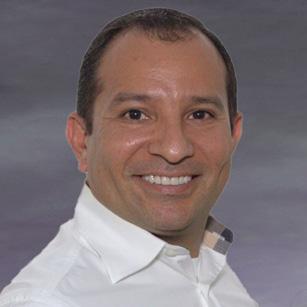
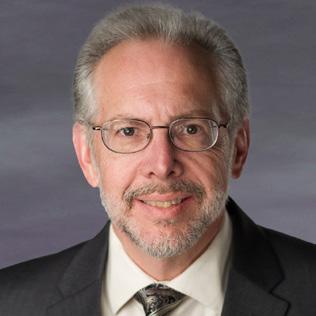


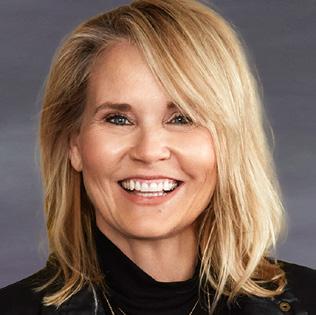
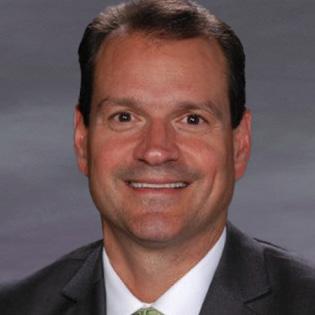
years of leading from wherever they happened to be has some CEOs ready to opt out of being on premises—for good. BY
DAVID ROBERSON SPENT A MONTH running RoseRyan from Hawaii last year, and now the CEO is overseeing the entire accounting and financial services firm from a guesthouse in the backyard of his home in Silicon Valley. The website still cites an address on Bascom Avenue in nearby Campbell, California, but nobody works there anymore, and Roberson toils permanently amid redwoods, olive trees, roses and diffused sunlight a few yards from his patio.
“Historically, as CEO you had to be where the business was,” says Roberson, who was CEO of Hitachi Data Systems before joining RoseRyan as a vice president in 2018 and becoming chief a year later. “But these days, I don’t think anyone cares where you live, to some degree. I just hired a chief of staff, and she’s in Dallas, and she only asked: ‘What hours do you want me to work?’ I said, ‘Same as mine, and we’ll be just fine.’”
Is Roberson right? Company chiefs always have been rovers, routinely traveling to meet with customers, lenders, politicians, suppliers and employees at far-flung operations. Digital communications loosened their ties to the corner office. Then, the pandemic blew the lid off the entire arrangement, forcing a remote management structure for most companies—and proving in most cases that it could work.
Now CEOs and boards are facing the important question of whether top leaders should go back to the physical C-Suite, even as this same group is also grappling with restructuring execution and culture around permanent work from home by many or most of their employees.
DALE BUSS“Culture is becoming increasingly important, and the workplace is where culture is manifested,” says Sanjay Rishi, Americas CEO of JLL Work Dynamics. “But it’s a retention tool for companies to give some level of flexibility, and the tone from the top is extremely important. There’s so much moving around that there’s no one answer to any of this.”
For some, domicile has become a big factor in CEO recruiting. “Physical relocations can still be difficult, and that prospect can deter an attractive candidate,” says Peter Crist, chairman of the Crist/Kolder executive-search firm. “And if that occurs, companies need to be quick to have that as an important early-conversation tactic.”
In broad ways, the issue has arisen before, but usually in terms of potential abuse. For example, in 2007, amid the automaker’s steep financial losses, senior Ford Motor executive Mark Fields gave up the use of a corporate jet for his frequent trips from the company’s Michigan home to Florida. (Fields overcame that controversy to become Ford’s CEO in 2014, only to face ouster in 2017.)
The pandemic fueled speculation about whether a company’s headquarters can simply be where a CEO lives and whether it still matters where some enterprises are formally “based.” Still, having companies and their C-Suite offices in the same place remains the norm. Just ask Kellogg’s. CEO Steven Cahillane’s purchase of a $6 million mansion in Chicago’s Lincoln Park neighborhood, followed by Chief Growth Officer Monica McGurk buying a $2 million home several miles north in Winnetka, Illinois set off rumors that
Two
the cereal maker was moving its headquarters to Chicago from iconic Battle Creek, Michigan. A company spokeswoman declined to comment on the issue to Chief Executive, but Kellogg’s has stated in the past that it’s staying put.
While having leadership on site remains the norm, the past two years of experimentation with remote work have raised the question of whether it’s necessary. For some, the answer is a resounding yes. “I’m opposed to commuter relationships or a distributed-management structure,” Crist says. “That always ends poorly, in my mind. The physical proximity of the top two or three players, maybe five, is really important.”
Hyliion CEO Thomas Healy believes it’s crucial for him to work on premises, where engineers and others are tinkering with the electric-locomotion systems for trucks being made by his Austin-based startup. He’s “primarily in the office,” Healy says, and so are his other top leaders, even as Hyliion allows most of its other 200 employees some work-from-home flexibility. “If I worked from home multiple days a week, or all the
time, that would disconnect me from the organization and create a divide between operations and the rest of the staff,” he says. Others, however, demur. Lizzie Horvitz founded Finch, a digital outfit that scores other companies’ products for ESG performance, during Covid and has never worked side-byside with any of her employees. After running the startup from her bedroom at her parents’ house in New York City and from a condo in Wyoming where she was skiing, she’s now steering it from her home in Denver. Horvitz has no plans to get a formal office.
“Never say never, but I wouldn’t want to have to let people go if they don’t want to move,” Horvitz says. “I don’t think we’ll be in the same place for the foreseeable future.”
Separate locales for leadership and team members is also the plan at Intradiem, a call-center software company headquartered in Alpharetta, Georgia. Halfway through Covid, CEO Matt McConnell sold his house in suburban Atlanta and permanently decamped to Atlantic Beach, Florida. “I’d already traveled a fair amount, so I already could work where I was,” he
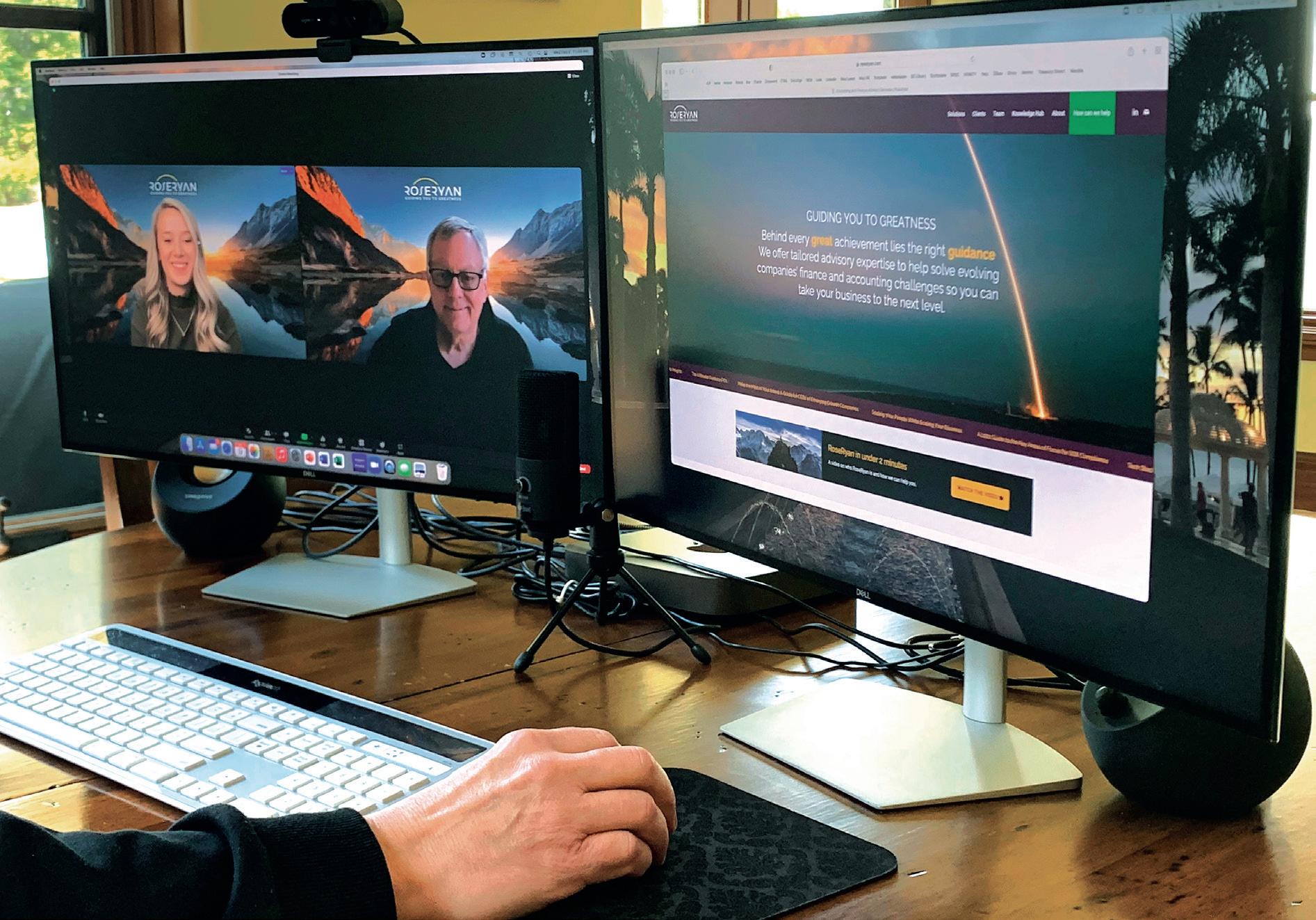
says. “We announced in January that we’re a remote-first company and shifted to a remote-first culture, and we’re still defining it.”
For leaders weighing CEO domicile decisions, here are some factors to consider:
Size and place matter. The smaller the company, of course, the easier for a CEO to chuck the office. “We work with Fortune 500 and Russell 2000 companies, and I haven’t had one CEO suggest he or she is thinking about running the company remotely,” Rishi says.
And if a company is outside big-city corridors or tax-haven states, Crist says, directors now “might get pushback like, ‘My family isn’t going to go there.’ Only a small minority love Omaha or have family there.”
Beware the pitfalls. Every student of the workplace is examining companies’ post-pandemic performance to see whether less physical proximity and interaction translate into less or more productivity, and less or more innovation.
“Creating a culture when you’re a remote company is a real challenge,” says Joel Warady, CEO of Catalina Crunch, a snack company based in Indianapolis, who joined as CEO two years ago and has continued to run the company from his home in Chicago. He hadn’t even met most of his direct reports as of the first quarter of this year. “I don’t think any of us are experts at it. There’s a lot of trial happening.”
There is one big question especially for CEOs and directors: How does succession at the top work in an all-remote environment? “You need eyeball-to-eyeball interaction,” Rishi argues. “How can you do succession planning and mentorship and training when you’re remote? How do you tell how your top people react under pressure?”
Corral the C-Suite. Untethered CEOs must continually coordinate with top lieutenants with whom they used to share offices every day. “We met every week in person; now we meet every week on Zoom,” Roberson says. “Our meetings are just as
effective, and our business is thriving right now in a totally remote environment.”
Overcommunicate. Staying in touch with rank-and-file employees is arguably even more important now than it was during Covid, particularly for chiefs who decided on a permanent distributed-leadership model. McConnell alternates a virtual “town hall” meeting with all employees one week with a video he records the next week and puts out there for employee responses.
Warady is “a big user of text messaging, saying, ‘Do you have a minute?’, sort of like we used to be able to grab a cup of coffee with someone and just run ideas by them.” When he dials up direct reports, he says, “I try to spend the first 10 minutes of one-onones talking about personal things rather than business issues.”
Consider the legalities. Should a chief of a U.S.-based company want to work primarily in, say, Galway, Ireland, foreign tax rules are likely to kick in, and that may affect the entire company’s legal domicile, says William Wright of the Fisher Phillips law firm. “The consequences for a CEO sometimes can be very painful, so it needs to be thought about.”
Even toggling between U.S. locales can be tricky for CEOs. For example, one complication of the increasingly popular departure of company chiefs from New York City to Florida is that New York lodges city taxes against individuals who spend more than 183 days a year there. “You can’t just be saying, ‘I was in Florida,’” says Nishant Mittal, senior vice president and general manager of business travel at Topia, a software company with a program that helps executives track their whereabouts and expenses. “There needs to be clear and convincing evidence.”
As for where all of this is headed: Crist recognizes that the remote CEO model is legitimate. But be believes “there will come a time when proximity will be very important again. I can sense it in the dialogue I have with boards and CEOs. Whenever this stuff goes away, we’ll try to get back to what we would define as normal.” CE
“Creating a culture when you’re a remote company is a real challenge. I don’t think any of us are experts at it. There’s a lot of trial happening.”NINA GROOMS LEE
 Chief Product Officer, May Mobility
Chief Product Officer, May Mobility
Dreaming. Innovating. Growing. It's how Michigan talent is making an impact on the world in key industries. From tech to mobility to advanced manufacturing, there's a different kind of hustle here. Expand your business in Michigan and get access to support, camaraderie and new opportunities.
Make the move at michiganbusiness.org/pure-opportunity
LAW BRIEF \ DANIEL FISHERON A BRIGHT, SUNNY MORNING ON July 29, 1967, the aircraft carrier USS Forrestal was on station off the coast of Vietnam when an underwing rocket accidentally launched from an F-4 fighter-bomber, streaking across the deck toward another jet piloted by future U.S. Senator John McCain. Shrapnel from the exploding rocket ignited the fuel in McCain’s jet as well as another one next to it.
manufacturers and the local airport. It has even prompted litigation squared: Municipal water systems hit with lawsuits over PFAS contamination by their customers are installing expensive filtration equipment and then suing airports and even the U.S. military to recover their costs.
The governmentrequired “forever chemical” spawns an endless wave of litigation.
McCain and the other pilot escaped their planes, but the expanding pool of burning fuel set off a chain reaction of fire and explosions that eventually penetrated the Forrestal’s flight deck, killing 134 sailors and nearly sending the carrier to the bottom. Investigators blamed obsolete WW II–era bombs and water fire extinguishers that washed away more effective foam.
In the wake of the Forrestal disaster, the U.S. Department of Defense adopted MIL-F-24385, requiring the use of “aqueous film-forming foam,” or AFFF, based on fluorocarbon compounds originally developed by 3M in the 1940s. The following year, the Federal Aviation Administration adopted the same military specification for civilian airports, eventually ordering them to conduct live exercises twice a year, including spraying firefighting foam over the runways.
That lifesaving regulation is now responsible for a growing wave of litigation, including a proposed class action on behalf of virtually everyone in the U.S. Unfortunately, the fluorocarbons that transform ordinary water into an oxygen-blocking firefighting blanket also break down into compounds known as PFOS and PFAS, extraordinarily durable molecules that have leached into water systems and persist in human tissue for decades.
All of which raises the question: Can it be a tort to use a chemical that is required by government regulation? A federal judge in South Carolina overseeing thousands of PFAS lawsuits is pondering that question right now, as some defendants press the “government contractor defense,” arguing they can’t be sued for following the rules.
“The defense is basically ‘the government made me do it,’” says Brian Gross, a partner with MG+M in Boston who’s active in toxic-tort defense. “‘I didn’t have a choice. There was no wiggle room.’”
Plaintiff lawyers argue the law doesn’t specify PFAS, only fluorocarbons. But defendants say the exacting specifications in MIL-F-24385 left them no choice but to use the chemicals they are now being sued over. They’re hoping a precedent set in litigation over another Vietnam-era chemical, Agent Orange, will protect them this time. In that case, Dow Chemical and Monsanto won rulings dismissing plaintiff lawsuits because they made the herbicide to exacting government specifications.
One critical difference is that those companies made Agent Orange under contracts that spelled out the chemical formula. 3M has failed to dismiss similar litigation over military earplugs because the military bought a design that 3M developed on its own. Firefighting foam is somewhere in the middle.
Daniel Fisher, a former senior editor at Forbes, has covered legal affairs for two decades.
Advanced technology now allows scientists to detect PFAS down to parts per trillion. Plaintiff lawyers were quick to use that breakthrough to file lawsuits against everyone who touched the stuff, from chemical companies like DuPont and 3M to product
Another factor might help defendants, at least in lawsuits by individual plaintiffs. Because PFAS is everywhere and is only weakly associated with a variety of conditions, it will be hard for them to prove any one company’s products made them sick.
“PFAS is ubiquitous,” Gross says. “It makes specific causation difficult.” CE


COCA-COLA CEO Roberto Goizueta’s motto was “Think Global, Act Local.” Confused by this message, one of his successors, Doug Daft, changed it to “Think Local, Act Local.” Does either apply now?
In 1965, media philosopher Marshall McLuhan coined the term “the global village.” That was 40 years before New York Times columnist Tom Friedman celebrated global interdependency in his 2005 book, The World Is Flat. In fact, in 1996, Friedman even more optimistically proclaimed that no two nations that both had McDonald’s franchises would wage war. Sadly, that wasn’t true in Africa, the Middle East or Central Europe back when he wrote it, and the 110 McDonald’s restaurants in Ukraine and 860 McDonald’s in Russia underscore just how naive the sentiment remains today.

BlackRock CEO Larry Fink recently remarked on the fizzling of the era of globalization in his firm’s annual report. “The Russian invasion of Ukraine has put an end to the globalization we have experienced over the last three decades,” he wrote.
supplies, semiconductors, antibiotics, battery components and other vital materials, business leaders like Fink are calling for a return to more self-reliance. At a Yale CEO Caucus held in March, 73 percent of multinational CEOs agreed with the statement, “I am rethinking my company’s global strategy given geopolitical turbulence.” Seventy-six percent agreed with “I am concerned about my company’s dependence on global supply chains.”
At the same time, the importance of global markets and the dependence upon natural resources outside this nation cannot be denied. Stanley Black & Decker CEO Jim Loree complained this fall that supply chain clogging almost tripled his trapped in-transit inventory.
Thus, the implications are: Regional free-trade pacts: “Engage with your allies,” advises Lance Fritz, CEO of Union Pacific. “Trade supports 41 million jobs in the U.S., a great source of economic might for us and a great counter [to the] global behavior of China and Russia… The Indo-Pacific economic framework is a great starting point.”
Jeffrey Sonnenfeld is senior associate dean, leadership studies, Lester Crown professor in management practice at Yale School of Management, president of the Yale Chief Executive Leadership Institute and author of The Hero’s Farewell. Follow him on Twitter @JeffSonnenfeld.
This sudden shift in sentiment has come as something of a shock to business leaders and CEOs, given that the promotion of business economic interdependence beyond simple mercantile colonization has been a steady drumbeat since economist David Ricardo’s theory of comparative advantage. His 1817 classical treatise formalized the theory of comparative advantage. Ricardo argued that free trade between two or more countries can be mutually beneficial, presuming all bring their most efficiently produced goods and services to global markets—not anticipating predatory tactics, wars, political restrictions and pandemics.
A backlash was most dramatically demonstrated in the mass street protests at the 1999 World Trade Organization’s conference in Seattle, called the Battle of Seattle. That 60,000-person protest was a coalition of labor organizations, media activists and NGOs. Now, in the aftermath of supply-chain disruptions, the loss of access to secure energy
Redundancy: With just-in-time source moving to just-in-case with both duplication and flexibility for rerouting paths, Yale operations expert Sang Kim warns, “Since most supply chains are optimized for efficiency, there is not much room for significant errors, which are magnified in the stretched, globalized supply chains that we have today… Building flexibility, such as rerouting production capacity to certain goods at the expense of others, is a more cost-effective solution.”
Reconceptualizing realities: To generations who did not lead during Cold War times, it may be hard to recognize that global brands may no longer be the bridge to world harmony, as economic globalization advocates once proselytized.
At the 1997 funeral of Coke CEO Goizueta, a fervent globalist, the recessional featured the Grammy-winning song “I’d Like to Teach the World to Sing (In Perfect Harmony),” recalling smiling young people of different nationalities, each holding a Coke. Their chorus chants, “It’s the real thing.” Really?
Accepted for decades, the interdependency of nations is now in question.
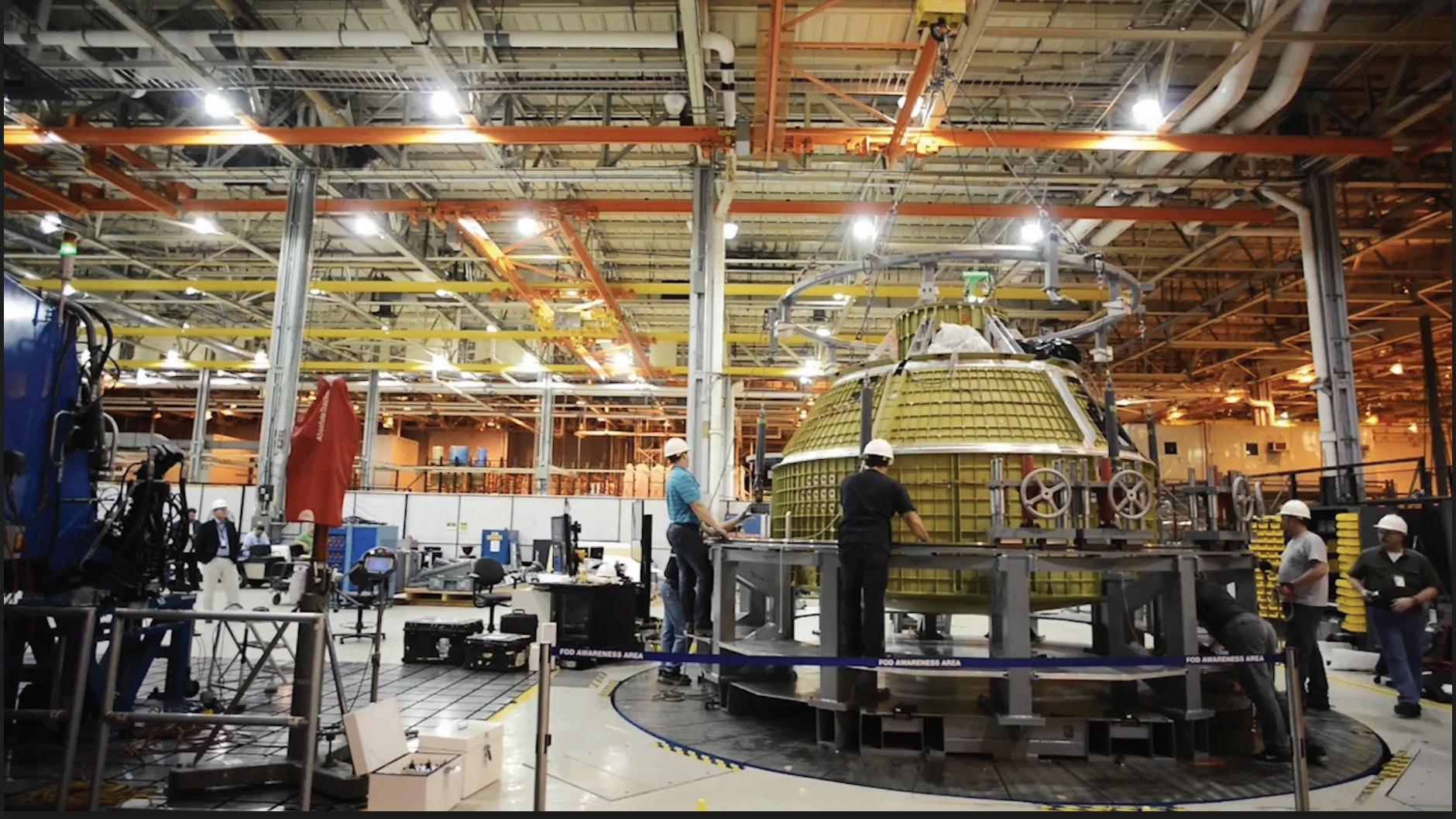

WE ALL STRIVE FOR approval in one way or another.
As human beings, from our time in caves, through our experience with royalty, through our careers in modern organizations, we have learned that our success is directly related to gaining the approval of key stakeholders—often the people in power.
As young people, we seek approval from our parents before we even learn to speak. We strive for approval from our peers. We need approval from our teachers as we take test after test after test.
Yet, when we Google “need for approval,” the results often describe a psychological disorder. They suggest that seeking approval is somehow dysfunctional. When is it normal and useful to prove ourselves to others, and when it a waste of time—or even worse?
Not surprisingly, the renown consultant and author Peter Drucker provides a great answer. Drucker said, “We are here on Earth to make a positive difference, not to prove how smart or right we are.”
it doesn’t.
Yet, after years and years of proving ourselves, it can be hard to stop.
Kelly Goldsmith is a professor of marketing at Vanderbilt University’s Owen Graduate School of Management.
Marshall Goldsmith has been ranked as the world’s #1 leadership thinker and coach. His 44 books include the New York Times bestsellers What Got You Here Won’t Get You There, Triggers and MOJO
My [Marshall’s] book, What Got You Here Won’t Get You There, is primarily focused on the challenges of successful leaders who focus too much on proving themselves (such as “winning too much” or “adding too much value”). They “oversell” themselves.
One former CEO I coached noted, “When I became the CEO, my suggestions became orders”—even when they made no sense. When asked what he learned from coaching, he replied, “Before trying to prove my point, do not just ask, ‘Am I correct?’ Also ask, ‘Is it worth it’?’”

He went on to say, “When I asked myself these questions, I often concluded, am I right? Maybe. Is it worth it? No.”
trying to prove you are right, and ask: “Is my comment going to do more good than harm?” Be ready to let it go.
In our work with coaches, we often find professionals who have the opposite problem. They undersell themselves. They hold back and “hide their light under a bushel.” They may think, “I should not need to prove myself. My good work should speak for itself.” If this were true, no company would need a marketing department!
When we work with people who undersell themselves, we ask: If you were more influential, would the world be a better place? Then we ask: ‘Are you uncomfortable trying to prove yourself and becoming more influential?
After getting two votes for “yes,” we given them a challenge: “Which is more important to you, making the world a better place or your own comfort?” They quickly realize that, in some cases, proving themselves is necessary to help make the world a better place.
Credibility has to be earned twice: 1) being excellent at what we do and 2) being recognized for our excellence. Being excellent at what we do and not being recognized for it is equivalent to writing an amazing book that no one reads.
At the individual level, building credibility requires both doing great work and being recognized for what you do. The same principle applies to your organization. Your company’s credibility requires both doing great work and being recognized for what you do.
As coaches, we have two suggestions for you as a CEO:
1) Coach your people who “oversell.” Help them learn to fight the instinct to prove themselves when it is not making a positive difference for the organization.
As a CEO, learn to take a breath before CE
2) Coach your people who “undersell.” Help them learn that gaining approval for themselves and their work can help them make a positive difference for the organization.
Proving ourselves to others makes us more effective leaders—except when

DEMOGRAPHIC DATA, THE POLITICAL ENVIRONMENT and environmental considerations have long been part of the location selection calculus. However, over the past several years, Environmental, Social and Governance (ESG) criteria have become critical to assessing the sustainability of investment decisions for many corporations.
• Companies are thinking more about the environmental impact of their location decisions—prioritizing access to public transport and bike paths, analyzing how much plane travel will be routinely required, considering the importance of LEED-certified buildings, weighing the impact of their operation on the local environment.
• When selecting locations, companies are now carefully considering how local regulations could impact the company’s reputation and weighing the potential risks associated with geopolitics on the global stage.
• The broader social environment is increasingly considered a critical location factor as companies prioritize where they want to be based on the level of openness and diversity.
The reason for this intensified focus on ESG criteria? The talent companies are looking to hire and retain are increasingly focused on corporations’ policies and accountability. People want to work for companies that prioritize corporate sustainability goals, and they are voting with their feet.
In addition, locations selected using ESG criteria will be more resilient to the adverse impacts of both climate change and the nature crisis, which are key considerations for organizations that will only grow in importance. An approach to incorporating the philosophy of ESG into location selection methodology can be the framework of Transformational Drivers comprising three pillars—Planet, People and Progression. Assessing locations’ performance on the Transformational Drivers in addition to the traditional critical location factors (costs and conditions) studied provides a more nuanced view of a market’s mid- to long-term suitability for investment. Some examples of this combined analysis are:
• Planet (Climate Change Adaptation) + Operating Costs: Locations could see their cost advantage being eroded due to the financial implications of poor mitigation and adaptation to climate risks, for example, increased capital costs, increased utility costs, loss due to business disruptions, damages to property, investments to mitigate the danger to personnel, etc.
• Planet and Progression + Operating Conditions (Risk): It is important to assess a location’s risk of natural disasters and its vulnerability, as well as adaptation to climate change, since the risks are linked. As per the IPCC Sixth Assessment Report, multiple climatic and non-climatic risks can interact, resulting in compounding overall risk and risks.1 For example, climate change can increase the frequency and intensity of floods, while poorly planned urban development can render a location vulnerable to flash floods caused by climate change-induced heavy rainfall.
• People and Operating Conditions (Talent Availability): A location that performs regarding People can, in turn, improve the quality and availability of its labor pool, a key traditional critical location factor, by not only attracting qualified talent but also enhancing the quality and sustainability of its existing workforce.
• People and Progression + Operating Conditions (Risk): Assessing the location’s performance on both the People and Progression drivers, as well as its Risk profile, will allow an organization to gain insights into its potential political and social stability, since increasing discrimination against groups of people could lead to unrest.
Planet: This pillar allows an assessment of the location’s ability to mitigate and adapt to the impact of both climate change and the biodiversity crisis. This is relevant for footprint decisions due to the detrimental impact on human wellbeing, as well as financial costs (both day-to-day and one-time) of the physical risks associated with climate change. For example, a 2021 Swiss Re report predicts that global property catastrophe premiums are set to increase up to 41 percent (USD 183 billion) by 2040 due to climate risk, with USD 110 billion coming from advanced markets.2
Locations that have successfully combined climate resilience and environmental considerations with development will be able to offer a better quality of life, making them attractive relocation destinations for talent. An organization that chooses to invest in such locations will not only likely be able to successfully attract talent for in-office roles but also be able to demonstrate tangible action on an issue important to today’s workforce—sustainability. This could form a key piece of the organization’s employer branding strategy.
When measuring a location’s performance regarding Planet, it will be helpful to answer the following questions:
• What are the acute and chronic risks faced on account of climate change? What measures have been taken to mitigate and adapt to these risks?
• Is there a strategy or roadmap to transition to green infrastructure and renewable energy? What is the stated horizon, and how has the implementation progressed?
• Does the location face a risk of water scarcity? Does the community have access to safe drinking water and sanitation, both of which are crucial to human health and well-being?
• What is the air quality given that it has a documented impact on health and wellbeing? An estimated 7 million people die each year due to air pollution3
• With green cover serving as a carbon sink, as well as being an indicator of social equity, how well is the location conserving its biodiversity and green space?
People: Talent guides real estate decisions. By measuring a location’s performance on key social issues, we can gain insights into long-term attractiveness for talent. The community an organization chooses to invest in not only impacts its ability to meet its diversity, equity and inclusion goals but can also form a part of its employer branding, helping it distinguish itself when competing for talent.
When measuring a location’s performance regarding People, it will be helpful to answer the following questions:
• How inclusive is the community? To what extent are the LGBTQ+ community, ethnic minorities, immigrants accepted? What is the level of religious tolerance?
• What is the level of economic inclusion? How easily are economic opportunities available to social groups?
• How does the location fare on gender equality?
• Since access to education and healthcare are some of the primary non-financial metrics to evaluate social well-being and equality, how does the location fare on these metrics?
A focus on people is essential, not only to be able to attract talent but also from a branding perspective. A women-focused brand, for example, would find it challenging to justify investment in a location that discriminates against them through restrictive healthcare regulations.
On occasion, organizations have sent a clear message regarding their stance on pressing diversity, equity and inclusion issues through their location decisions, such as a large financial services organization choosing not to locate in American states that had passed restrictive gender identification regulations.
Progression: While the metrics measured in the first two pillars provide information at a given point in time, the third pillar, Progression, assesses trends. This provides critical insights into the governance aspect of ESG by measuring the scope and effectiveness of regulations and policy interventions. This, in turn, will help organizations to identify the location’s trajectory, spot fundamental shifts in underlying dynamics and assess whether the location will be able to support their growth and long-term strategy.
When measuring a location’s performance regarding Progression, it will be helpful to answer the following questions:
Sources:
1. https://www.ipcc.ch/report/ar6/wg2/resources/spm-headline-statements/ 2. https://www.swissre.com/risk-knowledge/building-societal-resilience/growing-riskinsurance-industry-crucial-role.html
• How much progress has the location made in building climate resilience and mitigating risk?
• What are the dynamics underpinning attitudes towards various demographics, and how have they been evolving?
• Have levels of social tolerance and trust in institutions varied, and in what way? What are the underlying causes, and will they result in lasting change?
• Are innovations and technologies being adopted to strengthen the location’s performance regarding environmental and social issues?
When assessing progression metrics, it is important to keep in mind that certain locations have made significant progress prior to the time periods being assessed. In such instances, their progress will now only be incremental. To ensure an accurate analysis, such locations must not be unfairly penalized. For example, Singapore has seen only a marginal improvement in its 10-year performance in the area of sanitation and drinking water as compared to Malaysia. However, it is important to note that Singapore had already significantly improved the quality of this metric in prior years, to the extent that now only marginal improvements are possible.4
Locations should be compared at a regional level on account of the difference in the availability, granularity and reliability of data. It is also important to note that given the continuously evolving nature of the ESG landscape, new data and perspectives will soon be available, allowing for an increasingly nuanced analysis.
In order to compete for talent and make informed location decisions, traditional factors alone will not be sufficient. An organization must supplement its ESG policies with an understanding of transformational factors to remain competitive in the evolving global landscape.
Matt Szuhaj (maszuhaj@deloitte.com) is a managing director at Deloitte Consulting LLP in the Real Estate & Location Strategy practice.
Tara Nicholson (tnicholson@deloitte.com) is a senior manager at Deloitte Consulting LLP in the Real Estate & Location Strategy practice.
Malvika Pradhan (mapradhan@deloitte.com) is a senior consultant at Deloitte Consulting LLP in the Real Estate & Location Strategy practice.
3. https://www.who.int/health-topics/air-pollution#tab=tab_1
4. https://epi.yale.edu/epi-results/2020/component/h2o
As used in this document, “Deloitte” means Deloitte Consulting LLP, a subsidiary of Deloitte LLP. Please see www.deloitte.com/us/about for a detailed description of our legal structure. Certain services may not be available to attest clients under the rules and regulations of public accounting. Copyright © 2022 Deloitte Development LLC. All rights reserved.
ALMOST 50 YEARS AGO, as a young professor, I was hired by General Electric to design and teach a unique course to their managers at its fabled Crotonville training center. The subject was one of the most painful, difficult challenges that any business leader can face: operating a profitable, growing concern in a time of strong inflation.
For GE, it was an urgent mission. In the rampant inflation of the early 1970s, the firm’s highly coveted AAA credit rating was in peril as the company bled cash. They were hardly alone. Inflation was crippling nearly every company in the world, while also stalling the ability of the middle class to get ahead economically, let alone stand their ground. It was still nearly a decade before Fed Chair Paul Volcker’s crushing regime of interest-rate hikes would break the inflationary fever in the early 1980s.
Now, inflation is back. Every day, we hear of companies raising prices—from Starbucks and Coca-Cola to Procter & Gamble and Nestle. It isn’t just big consumer brands. A recent survey found that 61 percent of small businesses in the U.S. had raised prices for their goods and services in January—the highest percentage since 1974.
Thanks to a unique confluence of events—including an extended period of near-zero interest rates flooding the world with cheap money, Covid-driven government spending boosting consumer demand, and supply chains strained and broken by disruptions in production, transportation and talent shortages—the U.S., and much of the rest of the
A
for every CEO and C-Suite leader looking to help their company prosper—or even survive—in the difficult, uncertain days to come.
SHERRILL MANUFACTURING CEO Greg Owens is trying to figure out how to price steel tableware being produced at his company’s factory in New York. But his mind is off the coast of California, bobbing on a container in the Pacific Ocean along with rivals’ forks and spoons from China.
“It will be a turbulent first and second quarter as those ships land, and there will be big price discounting in our market,” he says. The company’s premium Liberty Tabletop brand “can’t be three to four times the price of everyone else’s. Consumers’ willingness to buy things on a whim and not care what it costs has sort of gone away.”
Much like the pandemic right before it, inflation has jumped to the forefront of the minds of CEOs such as Owens. Cost increases have become a raging monster, fed by everything from Covid shutdowns to supply-chain dislocations to a mad chase for scarce labor to the war in Ukraine.
Here’s how 10 company leaders are dealing with the quandaries being created by the new era of inflation:
globe, finds itself in an economic situation not seen in a generation or more. Will central banks be able to get a handle on inflation before it gets out of control? Will supply chains unsnarl? Will people costs flatten?
It is too soon to tell, but my gut says no—at least not for a few years. That is why there is no more urgent need for business leaders right now than to get ahead of the inflation bogeyman. Corporate leaders of the past few decades have been spared the tremendous difficulties that come with trying to drive a business in an inflationary period. Few executives likely have any memory of how to do it at all. Now they will be on the front line. It’s one thing to talk about inflation at the macro level and another to keep your business healthy as the world as you know it comes unglued. The key challenge is to grasp the reality, change your organization’s psychology, and act and react quickly to the direct hits to you, your customers, ecosystem partners and the entire value chain. The dire effects of inflation happen quickly, and a recession—which could soon result from Fed action to rein in an overheating economy— compounds its effects.
Inflation consumes cash, eats margins and lulls managers into a false sense of security as inflated revenues rise. A company’s situation can erode very quickly, leading to takeover or bankruptcy. Those who are fast to react and flexible in their approach can not only survive but prosper in this challenging environment as they seize opportunities afforded by less nimble and smart competitors. Those who react slowly or choose the wrong strategy and tactics will be weakened and may even go bankrupt. The ultimate goal is to emerge from a period of inflation and recession stronger.
Stephen
Bittel,CEO Terranova, Miami Beach, Florida

Rental housing prices are skyrocketing. My development colleagues are building multifamily residences as fast as they can, but rents still have risen by 30 percent in our market. That’s gigantic. No one is getting 30 percent pay raises.
The most worrisome feature is construction costs. Material is up and labor is up, spread evenly across the job. Every subcontractor wants more money. All of the publicly available
Preparing a company to battle this sudden rise of inflation is one of the most difficult tasks that will ever confront the CEO and management. Not only must the company be prepared structurally and financially, it must also change its dominant psychology. How management thinks about inflation and the company’s responses to it will determine whether the company thrives and how it gets ahead of the competition.
Chief Executive asked me to revisit my work from 45 years ago and redesign it for the current moment, when customers rule, the world is digitally interconnected and information is viral.
Whether you are a CEO, a member of the board of directors or the CFO or CHRO, this article is about what everyone must do to manage in an era of global inflation and slowing economic growth. It lays out a brief framework for how the entire company must shift its psychology, strategies, tactics and resources to minimize the effects of this corrosive economic environment, while watching for the opportunities that will arise as competitors fail to meet the challenge.
Keep in mind that inflation can retreat as quickly as it pounces. Any aggressive action the Fed takes to tame it is likely to cause another sudden shift, this time to a radical slowdown in the economy. The mechanisms and agility you develop to adapt to high inflation will be equally useful to adjust to the next big shift. With either scenario, make no mistake: The time to act is now.
A successful chief executive’s dominant psychology in good times is aggressive, optimistic and oriented toward one goal: profits, EPS or EBITDA. In my experience, many CEOs do not pay deep attention to the balance sheet—working capital, cash, borrowing, financing and refinancing and Capex. No one will face greater challenges in managing successfully in an inflationary environment than CEOs. They must not only oversee a major shift in the way the company does business but also a major shift in the psychology and focus of every manager.
The priority must now become growth of real volume, real revenue, not inflationary revenue. A balance sheet in this environment may require—because of cash flow needs—giving up cash-inefficient customers or market share. That means focusing on certain segments of your market that are more profitable and letting others go. Even the more profitable segments will generate less cash than before, so you need to think about how this will impact capital allocation. This can be difficult for some CEOs to deal with psychologically. So, a reminder: The goal is not market share gains for the sake of market share gains, but cash-efficient market share gains that are durable.
To start, the CEO should consider taking the top team for an off-site to discuss and learn the lessons of what inflation has done throughout history, especially in the 1970s in America and Brazil. The goal is to help everyone transition their thinking to a world where the cost of capital and the cost of doing business are both going up at the same time. As a result, you will have two choices: to absorb the impacts or rethink your business model. Pricing, receivables, inventories, narrowing the product scope if necessary, selecting your customers far more carefully—all of these possibilities are now on the table.
Be prepared: You may need to deliberately shrink or exit cash-inefficient businesses and become smaller and more focused. The way the company measures performance, like market share gain and pure revenue
Keep your eye on some essential priorities. The most important thing is continued cash flow generation, forecast on a very conservative basis. With that, make your cash outflow forecast on most likely risks. Out of the net cash flow, the company should prioritize efforts in the following way:
1. CONTINUITY OF THE BUSINESS . What is required for the longevity of the business and winning against competition? It could mean advertising money, short-term innovation to justify higher product pricing, certain kinds of marketing expenditures or certain kinds of expenditures for reducing costs and breakeven points. Whatever capital expenditures or operating expenditures—Capex or Opex—are necessary to preserve the future, while not destroying the present. That’s the number one priority.
2. DIGITALIZATION OF THE BUSINESS. This is existential. If you don’t digitize, you die. You must never lose focus here, no matter what happens. Your ability to react quickly depends critically on real-time data and analytics. Pre-Covid, people were slow to do this. During Covid, those who had done the work prospered, and those who did not were hurt. In an inflationary period, connecting your enterprise digitally so you have real data on your customers and their spending is mandatory. You must increase your speed of reaction to change.
3. FIXING BOTTLENECKS. Eliminate friction and bottlenecks everywhere, especially in the supply chain. The drag on the business from slow cycle times and inventory in the pipeline will become more expensive as inflation grows.
4. INNOVATION—BUT MORE FOCUSED INNOVATION. Overall, you must not lose the innovation mindset in the company. Understand what the consumer is willing to pay more for and focus your efforts there. It’s okay to be incremental unless something big comes in your sector that you can’t ignore. The greatest innovation mistake companies made in the 1970s was not to increase the price but rather shortchange the product (remember the shrinking candy bars?). That strategy backfired and hurt many brands for decades. Your products and services must remain fresh and new and show that they are of high value to justify a high price.
5. CAPEX FOR BUILDING CAPACITY IF YOU NEED IT, AND NOT IGNORING MAINTENANCE. Many people postpone maintenance. Don’t. It will come back to haunt you at the wrong time. Think about how inflation will change not just your company—but your industry—and work backward from there.
discussion about inflation has caused them to raise prices.
But we went back to them and said, “Please explain these increases to us.” The result is that they took lower margins, are working harder on labor and trying to buy materials better. They said fixed prices would bankrupt them, so we worked out a middle ground. We don’t want them to be bankrupt, and we want to get our jobs done quickly.
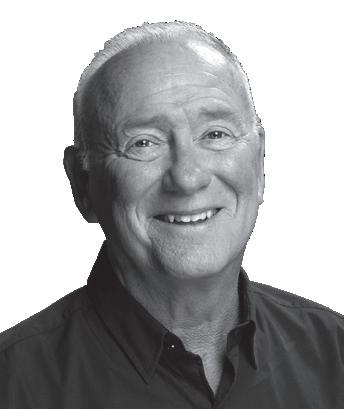
Tire manufacturers couldn’t possibly have projected what was going to happen, so that created a supply shortage. We’ve had four price increases over the last year from all of our vendors, and we have been told to expect three or four more.
But it is what it is, and we’ve got to run our business regardless of what happens or why it happens. We’ve taken part of the pricing hit ourselves because we have a loyal customer base. More than 40 percent of our business comes from previous customers, and it’s climbing every year, approaching 50 percent soon.
They got us where we are, so we’re not going to take the entire cost increase and pass it on. We suck up half of it.
We also put our guys on a different overtime program so we could be more careful and not let people work 50 hours, and not have people turning in 50 hours when they only did 40. Our guys will work seven days a week if you let them, and we were pretty loosey-goosey with that.
growth, may have to be reprioritized and changed. You will have to know the real volume versus the revenue because increases in price disguise and distort that volume. To protect real profitability, you’ll need to revisit key contracts—and change those that lock you into a situation that could lead to a cash shortage. You will need to do all of this and create two or three scenarios right now for 2023. Revisiting long-term contracts for inflation is a very difficult task. It requires courage, logic and excellent relationships with customers. But it must be done.
For public companies, there will be a contraction of multiples in the stock market as inflation comes along. Investors will discount for lower growth and segregate those that have high debt, those that cannot manage their working capital and those that did capital allocation in the context of zero percent interest rates, as interest rates potentially rise beyond 7 percent or 8 percent.
Your market cap will be based increasingly on your real volume, real margins and your real cash flow. If you can top your competition on that basis, you will attract more capital and more investors. So, it is essential that you focus on the market cap and work backwards. What is the right level of debt, of margins, of receivables, of costs—and real prices?
For private companies, which lack the opportunity to be scrutinized by outside analysts and investors, it is even more important to dive into these details.
Not having a working capital/cash goal is perilous now, because the most insidious part of inflation is what it does to working capital, trapping cash in receivables and inventories. Almost all customers will do their very best to extend their terms of payment—from 60 days to 90 days to even 180 days or more—and in an inflationary period, this cash trap is costly. Working capital— and these customer relationships—must be managed closely.
The CFO and CEO need to think through how they will handle this. They should discuss whatever else could be coming in the next eight quarters and how they’ll adapt, including how the company will handle cash generation and capital allocation under various inflationary scenarios—and not just for the first year, but sequentially, cumulatively, for three years.
The CFO can do stress-testing for a variety of scenarios for liquidity purposes. For most companies, this exercise will not be easy, because for most companies, there are too many demands on cash. The board and CEO should create a framework for priorities to determine how cash should be allocated.
Ask your CFO sharp questions, such as: If the inflation rate goes from X to Y, what would that do to our cash position and competitive position? If inflation continues, what are the risks to liquidity, if any?
You may also want to commission an outside study of how inflation will impact the company’s end-to-end value chain. No two companies will be impacted exactly the same way by inflation, but since so many companies are linked to one another, it’s critical to understand how it will impact everyone in your ecosystem.
As part of this, it is essential to understand how pricing increases
and accounts receivables will affect many companies as a backdrop to your company’s own operations. This extends beyond the changes themselves to the architecture of the changes—who is leading, who is lagging—not just in your sector but in the context of many sectors and subsectors.
Cash management is the keystone of managing in inflationary times, and you need to have a clear picture of where the cash is coming from and where it is going. Board members and executive leadership should have input into ways to reduce costs and lower their cash break-even point and their cash consumption. They should share any information they have about B2B customers whose financial position could adversely affect the company’s business.
Pricing policy is second only to cash management as a priority. An understanding of the pricing mechanisms in place and the availability of a dashboard that gives any member of the executive team or board an instant update at any time makes the task easier and allows everyone to keep a closer watch on financial developments. This is especially true for cash-strapped companies in low-margin businesses, particularly those that have high debt with restrictive covenants.
No matter what, you must continue to build the future even as you focus intensely on the day-to-day immediacies. A disciplined approach to people development and innovation will position the business to leap ahead once inflation subsides—which, in my view, could be five years. How would you become a better company with a better ranking in your industry? That’s an essential question to always keep in mind.
The CEO’s first and most important task is to communicate, communicate, communicate. Once is never enough. Repeat the seriousness of the challenge confronting the organization and the urgency with which that challenge must be met with total candor, honesty and credibility, both internally and externally. The CEO is both an educator, ensuring the senior team understands the challenge and consequences of failure, and a social engineer, overseeing the coordination of the various functions so information flows freely and quickly from every silo, acting as a lever for the culture. Management must counter confusion and anxiety created by the media, particularly social media. This is of great importance.
When communicating, there are three essential principles to follow: Did the recipient receive the message the way it was intended? (Measure that.) Did you get the recipient’s reaction to your message? (Be sure.) What new behavior of the recipient did you discover? (Find out.) True communication is not a one-way PowerPoint presentation in which the recipient absorbs less than 20 percent of the message.
The CEO can start by rallying the team. Say, “We’re going to win in this new environment,” and communicate how you’re going to win. Yes, you’re going to take some costs out. Yes, you’re going to change some KPIs. And you’re going to have to have information
R&D, USUALLY FOCUSED ON the lon g term, tends to have a dominant psychology that sees itself apart from the day-to-day problems that besiege the company in an inflationary environment. R&D wants stable employment to prevent the disruption of ongoing projects, and it doesn’t want to be the pawn of finance. But the new circumstances leave no room for complacency anywhere within the company.
Most R&D resources fall into one of three categories: long-term, “blue sky” projects that may yield important breakthroughs, projects aimed at making incremental changes in products or processes, and projects aimed at using new technologies to change product attributes or processes. A fresh look at the allocation of total R&D resources going forward three to five years is the first step in adjusting to the new environment.
The first priority of R&D in this economy is to focus innovation efforts—above all else—on the continuity of the business, on the products and services that will justify the higher prices that you will demand in the market.
In consultation with the CEO and CFO, R&D leaders must decide which resources and projects are to be preserved and which jettisoned. Remaining projects should be rank-ordered in terms of importance to the company in the post-inflation, post-recession world. And a determination should be made about partnering with other companies on some projects in order to free up research talent to concentrate on critical projects.
Work with marketing to determine which projects can be slowed and which need to be sped up to take advantage of market opportunities and competitive changes. Be alert to opportunities to bring in new talent that will enable the company to profitably diversify product offerings or find more efficiencies in operations.
Most of our five verticals—including multifamily dwellings, older beachfront hotels, extended-stay hotels and entire town centers—get to reprice their rents annually, and hotels can do it daily; we have no buildings with 20-year leases. So, we’re not at risk of having our costs go up and not being able to adjust our rents. We adjust our rents to market, and they perform well for us.
There has been some concern that increasing rates and rents will outpace what our tenants can afford. But we’re not at the top of the food chain—we’re not the most expensive properties out there.
That’s especially true for our beachfront hotels: They cater to middle America. They’re on everyone’s beach: Pensacola, Cocoa Beach and Panama City [Florida]. Our customers there are getting squeezed by inflation, but in the end, they’re going to get salary increases.

We’ve put through an average price increase of 25 percent; some products going up by 60 percent, others by 8 percent. Five years ago, we tried to stay 5 percent to 10 percent above the most expensive Chinese-made tableware and 50 percent above the lowest. But even after they recently increased prices by 25 percent, our prices now are double and triple the opening price point for tableware on Amazon.
Consumers aren’t dumb. We have
come to you unfiltered from the ground so that you know what is happening with customers and with your cash position. Make sure this message is clear—no filtering, no hiding bad news. Assure employees that you are not just being defensive and making shoot-from-the-hip decisions on narrowing the focus and cutting costs. You must continue to communicate about innovations, new products and new ideas, too.
Working in conjunction with the CFO and CHRO, the company’s internal communications people should create a website or dashboard accessible to all employees and updated at least fortnightly that presents an analytical picture of the company, its competitive position and the steps it is taking to execute its strategy. It should also include macroeconomic news, such as Federal Reserve policy statements and actions and relevant international news, including price increases in various companies and industries, to educate employees and partners, giving them the context of your company’s moves. It may be appropriate to establish a hotline to respond to employee concerns and queries.
Externally, people in charge of internal and external communications need to adopt an attitude of more transparency to reduce anxiety within the company and build a relationship of trust with media outlets.
Communications staff should be proactive in establishing links to both national and local media, demonstrating that the company is methodical, solid and has a realistic view of the environment in which it is operating. The media is confused about the economy, so the communications people should work with reporters and editors to demystify the company’s situation and how the company sees the current economy and be able to clearly show how the company is working through these challenges.
At public companies, the firm’s IR people must learn in detail from the CFO and others how the company’s performance indicators will be affected by inflation and an economic slowdown and must convey that information accurately and fully to investors. Any misstep that hints at cover up or distortion will be disastrous in the investment community.
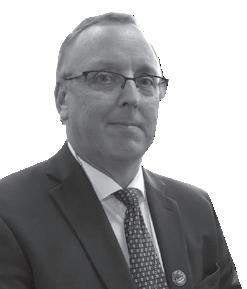
Unfortunately, most IR people’s understanding of what is going on in their industries and more globally is very inadequate right now. That does not allow them to communicate clearly what—or why—the company is doing what it is doing in the context of the larger world.
The IR person must be able to do this, to communicate clearly and unambiguously to the investment community about how the company is positioning itself. They need to build a record of outcomes from the company’s actions, showing, for example, where price increases stuck and where they didn’t, and be able to explain the company’s next moves as a result of that.
IR should be attuned to the investment community and able to seek out big investors who understand the company’s situation and its prospects in the post-inflation world and are willing, as a consequence, to invest in the company.
The trust part of investor relations is very important now. Be
sure your IR people are spending 80 percent of their time with the buy side. Buy-side people need to know that an inflationary period is here and what you’re going to do. Your IR person has to be savvy to extract information from investors about what is really happening in the industry. The subsectors investors are moving toward will tell you how inflation is playing out across the industry and economy.
It is imperative to have your IR person— and perhaps you, as CEO, as well—reach out to critical investors to understand their assumptions about the economy and the industry they operate in. Ask them for their views. Then educate them on yours. Say: “I’d like to give you our worldview of the industry under inflation.” Getting at the reality of what the buy-side people are thinking will be the most important thing an IR person can do to help the company.
Pricing must not be controlled by the sales force. The dominant psychology of the sales and marketing departments in good times is to capture as many customers as possible and make every sale that is possible, often without thinking too hard about whether the sale is profitable or the customer is sound. They have a psychological aversion to raising prices, the result of frequent customer pushback and demands for discounts.
To help manage the situation, two innovations are needed in the structure of your company:
1. A pricing unit, which is forward-looking, gathering data and building models. This should be a cross-functional unit that reports directly to the CFO and marketing leaders.
2. A unit responsible for managing working capital, which reports directly to the CFO. (For more detail, see the next section.)
These two units must work together, collecting information about prices across many different companies in many different sectors to form a context for the company’s pricing strategy.
In an inflationary period, delaying price increases can be a disaster. The company
GENERAL MANAGERS. In an inflationary period, general, regional and country managers share some of the same tasks as the CEO. They must communicate the urgency of the challenge and understand the overall effects of inflation on their operations. Help them develop a point of view on inflation based on an understanding of the causes in your markets. Project inflation assumptions out one, three and five years. Develop contingency plans for worse-than-expected conditions, either in inflation or economic growth. Redesign key performance indicators by which they evaluate their teams—those KPIs must include cash and cash-related items. Target weak competitors who don’t recognize the dangers of inflation or who can’t cope.
LOGISTICS. Plan for the worst. Reexamine the supply chain from vendors to you, and from you to retailers and distributors, with the assumption that energy prices are going higher, perhaps much higher. Does a supply chain designed for $50-a-barrel oil work in an environment of $100-a-barrel oil? What happens if the chip shortage continues for another two years? Factor in deteriorating infrastructure, congestion in freight terminals and other bottlenecks that could slow or disrupt movement of supplies and products. Be sure the people doing your pricing understand how logistics is changing and what impact that will have on operations.
LEGAL. In B2B, legal contracts are very common, which gives the customer the upper hand to hold you to the terms of the contract, which, in many cases, was crafted before inflation was on anyone’s radar. This is why the legal department has to be in lockstep with other departments as they fight to adapt to the new realities. Push to include flexibility in new and existing contracts to reflect the need to renegotiate terms more frequently in conditions that most managers have never experienced before. Work with your best customers and suppliers to streamline the contracting process. Anything your company can do to make it easier for suppliers or customers to do business with you will give you a competitive edge.
MANUFACTURING. Everyone knows manufacturing is suffering in most industries these days. Supply chain issues, lack of available talent in the plants, exaggerated prices in logistics. Wherever there is an assembly line, there is lack of balancing. This volatility is not going to be alleviated soon. Meanwhile, customers are clamoring to receive your output. The job of the manufacturing managers has become more demanding. Often, they have to decide which customer to supply first.
diehards that make up 30 percent of our business who wouldn’t buy something made in China if it was free. But we can’t just drift out into la-la land and be three to four times the price of others.
needs a pricing philosophy and methodology that shows with precision when, where and by how much to raise prices, fully cognizant of the consequences to volume, market share, revenue and margins. This will require close consultation between sales, the CFO and the CEO.
Lucas
Martinez, co-CEO Talent.com, Barcelona, SpainWe index career sites and work with some large and mid-market enterprises, and have all their jobs on our platform, from 79 countries, in 26 languages. We are going to add a U.S. headquarters soon.
People know the salaries out there and know their own worth. But companies are able to hire people in other places. We have people in Colombia, for instance. A lot of our clients in Silicon Valley, Chicago or New York aren’t hiring as many people locally and are going remote, to other countries. There’s a globalization of the service industry. Salaries are so much lower in other locales.
They’re hiring in Colombia and Costa Rica and other places; they haven’t done that in the past. We have 200 people in Colombia, and our clients from the Valley go straight after engineers there. It’s easy to do, because they don’t have to pay these people even 10 percent of what they’re paying in California.
We source from China, Taiwan, Spain and other places, and we’re seeing a lot of inflation in four different ways. The first is the cost of goods: Raw materials are more expensive. Number two is the cost of inbound freight, with the cost of a container going from $3,000 to
Start by making sure the executive vice president for sales and marketing is aboard with leadership’s views and plans. If they can’t understand what you’re after or don’t grasp the urgency, the CEO will have to make a change—fast. Many of them have not lived through this. They will find it very difficult to have the courage they’ll need to make tough changes, like shifting their people’s KPIs to focus on raising prices and gaining cash or being more directly involved in collecting receivables.
The CFO and the CEO can’t expect these departments to change on their own. They must create training sessions to help get the marketing and salespeople prepared to operate in this new environment. For example, one retail company I work with was having a difficult time increasing prices selling to Walmart, one of their biggest customers. So, we got a former Walmart executive to come and role-play with the team, showing them how to increase prices. This is the kind of work you’ll need to do.
With B2C companies, most will announce price increases gradually, not all at once. The key is to get ahead of the curve, not fall behind the curve. Many companies will balk at ramping up prices, taking a wait-and-see approach. They will absorb rising costs and try to grab market share from rivals. This is a mistake. Even if they weather the first year this way, as inflation persists, they will have deeply eroded their cash position, making them vulnerable and unable to catch up with rivals who were faster and bolder at raising prices.

Who will increase prices first, without delay? Those that go first will hurt the whole industry, but even if this feeds the larger inflationary spiral, you have no choice. If you do not move, you will be weakened for the months and years to come.
Companies—B2B or B2C—who have invested properly in digitalization over the past decade will now find they have a huge advantage over less digitally mature organizations. The ability to change prices dynamically at the level of individuals or single transactions has an overwhelming impact on margins and cash flow, while the data generated from these systems allows for continuous adjustments to the company’s projections and product mix, all huge competitive advantages at a time when knowing what the customers can—and are—willing to pay for is more essential than ever before. This is why I say that digitalization of your operations must remain a top priority, no matter what.
Whether you are a B2B or B2C company, your attitude toward customers must change as well. While the customer is still king, not every customer is a customer worth having. The CEO must know what is happening, not only to his company’s direct customers but to their customers as well. The leader has to have the psychology and the mechanisms to delve deeply into the customer’s problems to help find solutions but must also have the fortitude and judgment to decide which customers are worth keeping and
which should be dropped.
You must evaluate each customer, especially in a B2B business. What is this customer’s cash pain point, how are they going to absorb inflation, and how will they change their pricing and modeling? The same goes for understanding your competitors. A competitor who can’t or won’t raise prices, eliminate unprofitable products or evaluate customers may enjoy a temporary market advantage but will invariably weaken over time. The game isn’t won or lost in the first innings. You should map your whole value chain to model how inflation will impact your business model and the business model of every link in the chain. Use this information to show customers why you need a price increase and how they can recoup that in their own business model.
Let’s be clear: Chasing revenue growth and market share without watching cash is a disaster during inflation. Customers who don’t pay in a timely way are customers you can’t afford to have for long. It is essential that you examine the value chain for each set of customers. Start looking right now at which customers—particularly in a business-to-business sales situation—have high debt. They will have a cash shortage. Work with them immediately to prioritize paying you.
Changing products will be at the heart of changing your business. If you had 35 varieties of one product, you’re going to have to narrow that down. But, as I said before, you can’t afford to dilute the brand by letting quality suffer—those who lived through the inflation of the 1970s have vivid memories of shrinking candy bars and soda cans. They left a bitter impression on customers that was hard to shake, even decades later.
The overall point is this: You have to look deeply at your company, product by product, customer by customer, channel by channel, and find out where you actually make the bulk of your money—and eliminate anything where you don’t have high cash profits.
Every decision must take cash into account. You must look at cash profits, not paper profits, not percentages. Hard cash profit— because managing inflation is managing cash.
Finance and the CFO Cash is king in an inflationary environment, and finance is the keeper of cash. The CFO must understand clearly where the cash is going, ride close herd on receivables and take a proactive role in setting terms for customers. Developing online dashboards to monitor key financial metrics, especially cash on a daily basis, is essential.
It is going to get increasingly difficult to collect receivables. In many companies, this function is delegated to small departments in finance, often staffed by low-level, low-paid employees. In an inflationary period, this is a ticking bomb, because, as I said before, collection of receivables in a B2B business is critical—it is the major cash trap for the company. The time is now for the CFO to build a strong department to manage receivables and working capital, led by a talented manager who reports directly to the CFO.
For the CFO, it is also essential that they are communicating
$12,000. Number three, we sell individual parts or two in a package, so we’ve seen some inflation with outbound freight, such as Covid surcharges. And finally, there’s labor inflation.
But we’ve invested in machine learning and AI to give us tools that allow us to react in real time as new data comes in. So, we used to adjust prices two to three times a week; now we’re doing it almost daily.
We also continue to invest in the business. It’s a huge industry, but you need scale; that gives us the advantage in buying. So, we’re buying two times as much with longer lead times, and we’re also buying twice as much as anyone else. That gives us the ability to absorb some inflation.
We also recently completed our sixth U.S. distribution center. By cutting transit time and doing more next-day delivery, it’s cheaper for customers. And we keep looking for efficiencies in the supply chain, tightening processes. Every extra day in the supply chain costs us money, so our team is aligning all the steps, making the timeframe as tight as possible. If you gain two or three days, it has a huge impact on P&L and on the balance sheet.

We make outdoor, single-room studios and guesthouses, and inflation hasn’t proven to be transitory in our view; we just see sustained price increases. We keep getting emails from our suppliers shortening the terms for which they’ll honor pricing.
The two most expensive areas are materials and freight. Freight seems to be easing somewhat; materials are not. One of our strengths is having more redundancy in our supply chain for prefab housing than our competitors, who are design-build construction firms.
But we have a long purchase-consideration period, and our products generally are in the pipeline for a long time, too. That’s a challenge. If we’ve sold something at a fixed price, costs are going to be different six months down the road. So we create different milestones throughout the process where we could make a pricing change. We don’t want to overcharge and we want to provide the best value we can to customers, but we also need to provide a protectable margin for our company.

Our organization has developed the capabilities and mindset to continuously drive cost reduction, even amid this era of inflation. Operational excellence will continue to be central to managing costs, especially in our current environment.
For example, our operations team continues to progress a better balance of our manufacturing network, de-bottlenecking and improving efficiency in order to drive greater capacity at a lower cost.
Recognizing that greater volatility is here to stay, we are assessing pricing more frequently, updating contract terms and embarking on expanded hedging practices to reduce the value at risk. For instance, we are building in more redundancy and business-continuity plans into our supply chain.
Over the last three years, our Cost Smart program enabled us to invest nearly $10 million of savings back into R&D and digital enablement. Now, Cost Competitiveness, which is what we’re calling our updated cost-reduction initiative, embraces thousands of individual activities undertaken by our team members to recognize that costs are deliberate resource choices. And being mindful of these choices can reduce costs.
constantly, taking initiative to show, persuade and get everyone educated on inflation—including the board—especially how different rates of inflation in the sector may change the conditions of the company. This is a time when the CFO cannot communicate enough: What are the facts? What are the numbers? Where are we advancing, where are we stumbling? They should be measuring how well people throughout the organization—and the board—understand all of this.
They’ve got to lead the development of different scenarios, different remedies, what the options might be in different situations. Meanwhile, they also have to have a handle on daily cash inflow, report what’s happening, manage the balance sheet and not incur too much debt. During a period of rising inflation, debt is a killer.
People may tell you, “We have a low-priced debt, let’s keep it.” But ask yourself, “What is my cash generation capacity in the inflationary period?” If it’s very good, keep the debt. Watch the payment schedule. But if your generation capacities are weakened, then you’ve got a problem, and you need to rethink what’s on your books.
Finally, the CFO has got to show how the business model needs to change. A few essentials:
• The CFO must work closely with sales and marketing on pricing policy to understand how pricing will affect the entire value chain.
• The CFO must drill down to evaluate customer balance sheets and financial conditions to determine which ones are most likely to falter.
• The CFO should act as mediator between manufacturing and purchasing and sales and marketing, helping them guard the company against shortages or delays in delivery of supplies while resisting the urge to build inventory, a sinkhole for cash.
• The CFO should help ensure that the entire senior management understands the changing priorities when budgets are being set.
• The CFO must keep the board and CEO informed on a real-time basis of any significant deviations from financial expectations, including such events as customer or supplier defaults.
• It’s important to be clear that the CFO is not the CEO or the chief operating officer. They’re an adviser. They should not have operating people reporting to them.
How do you know if your CFO is the right CFO for this turn in the road? On the boards where I serve, we’re asking the CFO and the CEO to lay out various scenarios for how the business might operate at various levels of inflation. When they do, look deeply at their assumptions, how they see consumer behavior changing. How will the end-to-end value chain need to change based on these changes? What would they recommend the company do? Spend three or four hours with the CFO, asking them to take you through their thinking on these topics. After that, you’ll know if your CFO has the ability to lead in this time or if they don’t.
It will never be more true that “people are our most valuable resource” than in the days, months and years ahead. Now is the time for the CEO and board to bring a laser-sharp focus to the evaluation of senior people to ensure that they fully understand the nature
Fast and flexible network and communications solutions are mission critical to today’s digital businesses. There’s no room for compromise, and good enough isn’t good enough anymore. That’s why businesses trust Windstream Enterprise as their single source for high-performance networks and an award-winning suite of technology solutions.
Get cloud-enabled connectivity, communications and security. Guaranteed.

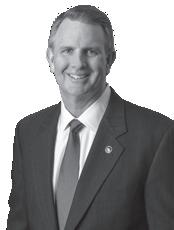 OceanFirst Bank, Red Bank, New Jersey
OceanFirst Bank, Red Bank, New Jersey
The majority of our costs are about labor, and that’s difficult to manage in a vacuum. If you want high-quality people in this kind of labor market, you have to pay for them.
A big thing in our thoughts about labor costs is what part of them can function better by outsourcing? So, we recently shifted facilities management to CBRE. We did it because they are specialists in managing buildings. Before that, doing electrical work or even changing a light bulb was an in-house function. But we’re not electricians or plumbers or carpenters. CBRE are professionals in that world, and they actually picked up a number of our employees for that function.
We’ll save about 10 percent, but avoiding future cost increases is actually more important than the immediate savings.
Theresa Motter,
CEOVan’s Kitchen, Dallas
Sometimes we share margin sacrifice with our suppliers and customers. They give up a little and we do. We’ve been in business for 35 years, and we’ve been selling to Walmart for more than 20 years. They’re notorious for being a hard negotiator. But I’ve asked them: Do you want to continue working with us, or do you want to find another supplier that you can squeeze next year?
And if things start turning and we get better pricing, we have to be interested in having those conversations with them whether things go up or down. This isn’t an opportunity to line our pockets but an opportunity to really take care of people and make sure there are groceries on the shelves in the store. It’s been scary in 2021 to not see food on shelves in the United States. DALE BUSS
of the environment and are willing and able to take the offensive, adopting flexible strategies and tactics and, if necessary, sacrificing resources for the sake of the company’s overall situation. Those who are not prepared to meet the challenge should be replaced.
As I have written before, 2 percent of the people in a company have 98 percent of the impact. Work with your CHRO to make sure management knows who they are, and make sure they’re overcommunicating with them to help them understand how the world is changing—what the goals are, how success will be measured, the centrality of cash—and how they must change with it. Nurture your 2 percent first and have the 2 percent nurture the rest.
This is a period when HR has to demonstrate leadership in a very clear way. A slowing economy amid inflation will result in newspapers, television and blogs filled with reports of layoffs. Aggressive competitors will try to poach talent if they find themselves in a weak position. HR needs to ensure that the dominant psychology of the company is fighting inflation and getting ready for the competitive environment that will emerge post-inflation and post-recession.
The CHRO has to do the right things about employee anxiety, and whatever cost reductions you plan will have to be done properly— because every company will want to reduce the break-even point. Dealing with people with dignity, with honesty, that’s essential.
HR can tilt its own resource allocation toward education about inflation. Training programs that bring home the realities of inflation to every person in the company are needed to create the climate to survive and thrive. Those programs are best taught by senior executives, who will gain insight into their own psychology as a result of teaching. Training in customer relations, pricing and the internal effects of inflation are valuable approaches.
HR must ensure that people have clarity about the company’s goals and how they will be compensated. In a non-inflationary environment, incentives are typically based on one indicator: bottom-line results, usually stated as operating profit. In inflationary times, cash has to be dominant, and compensation formulas would have at a minimum four indicators: cash, operating profit, working capital and customer satisfaction.

Managers may resist or skirt new and different compensation plans that take into account high rates of inflation or slow rates of economic growth. HR needs to get managers to participate in crafting the new compensation plans to achieve buy-in. When that doesn’t happen, HR must defend the plans and be sure they are executed fairly.
Compensation plans need to be revamped to reflect the realities of inflation. The typical senior executive’s three- to five-year compensation plan providing 25 percent fixed and 75 percent variable is a sacred cow that should be killed off in the new environment and replaced with a more realistic plan.
HR needs to work with the CFO to be sure that unit performance is evaluated on real numbers, not inflated numbers. That will ensure that talent will not walk away, especially when there are allocation issues among units.
HR also needs to keep the board apprised of needed changes in the
One of the most impactful business guides published in the 21st Century, The Toyota Way played an outsized role in launching the continuous-improvement movement that continues unabated today.
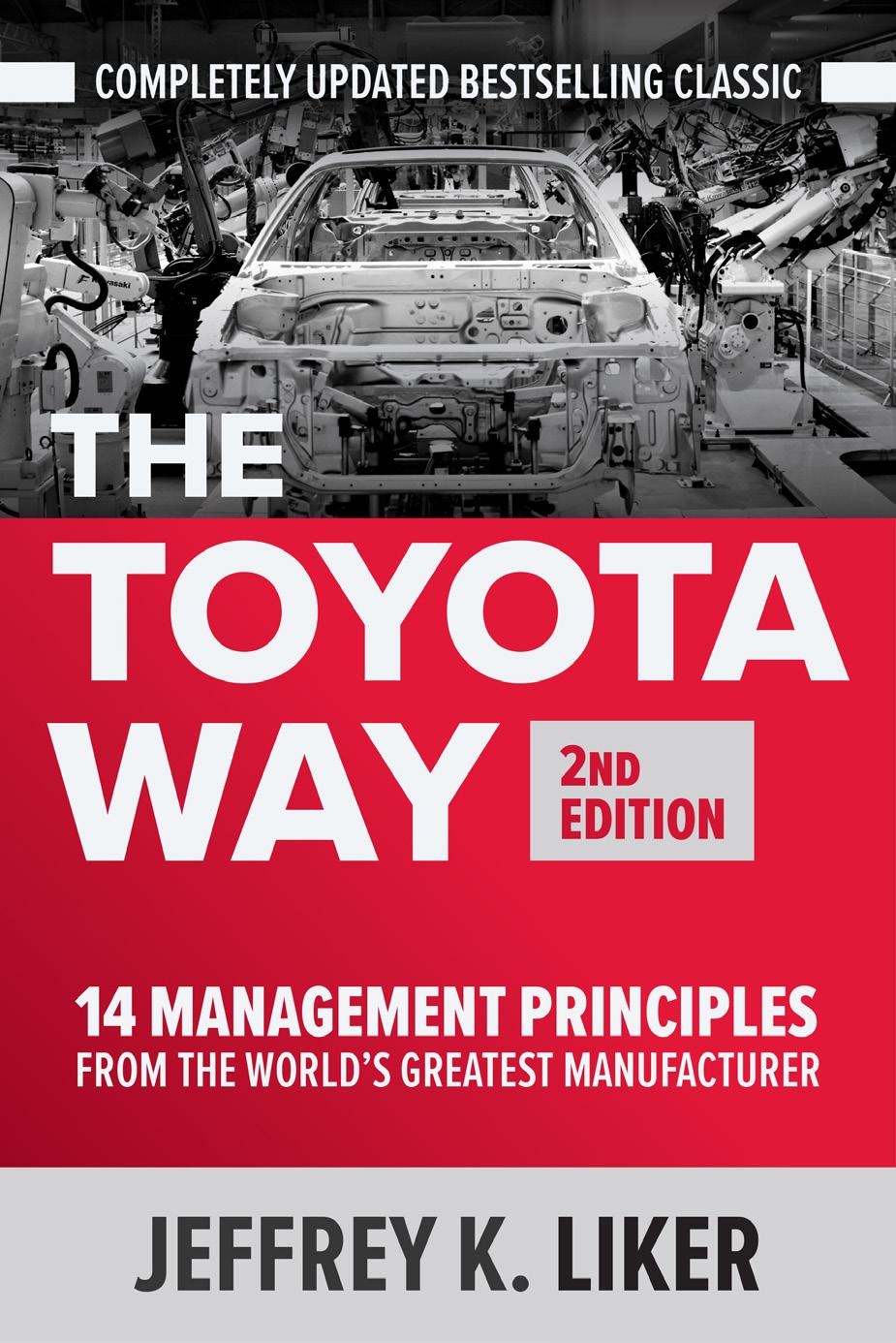
Multiple Shingo Award-winning management and operations expert Jeffrey K. Liker provides a deep dive into Toyota’s worldchanging processes, showing how you can learn from it to develop your own improvement program that fits your conditions. Thanks in large part to this book, managers across the globe are creating workforces and systems that produce the highest-quality products and services, establish, and retain customer loyalty, and drive business profitability and sustainability.
Now, Liker has thoroughly updated his classic guide to go beyond manufacturing to the connection between strategy and operations, applications in service businesses, lean for a digital age, and developing leaders who navigate scientifically to breakthrough goals.
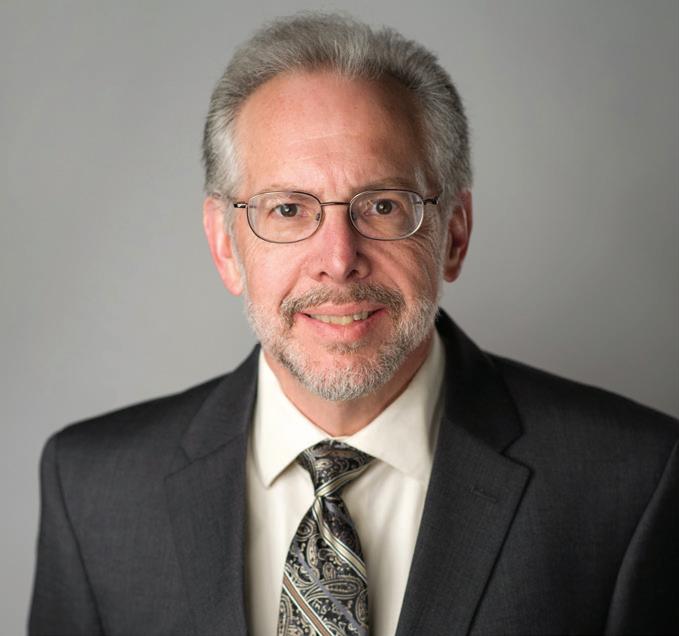
An on-demand version of his recent live session, with additional experts on pricing, cost-cutting and customer relationships is available:
ChiefExecutive.net/ LeadingThroughInflation
skill mix at high levels, suggesting shifts in geographical or business unit leadership that would provide the most or best opportunities to take advantage of the new environment that results post-inflation. They should also be alert to talent that may be lured away and to opportunities to bring in new talent.
Boards should insist the CHRO makes a presentation of their priorities, what the outcomes will be and how they will manage inflation. The CHRO should be able to present their plan for human capital the same way the CFO does for the company’s finances. This is a good way to test whether you have the right CHRO for the days ahead.
Like their CEOs, boards—in both public and private companies—are not practiced at leading through an inflationary period. When the last such era occurred in the U.S., most of today’s CEOs were in their teens or 20s. They have no experience in dealing with the insidious chain reaction of price increases and labor costs. In good times, directors tend to give CEOs a great deal of leeway to do as they see fit, consistent within an overall strategy the board supports. Unless things go seriously awry, the board takes a long-term, above-thefray view of the company’s operations.
In an inflationary environment, the board of directors has an obligation to delve deeper, to ensure that the CEO and CFO are probing how inflation will affect the entirety of the company’s value chain and establishing mechanisms to contend with those impacts.
approve the right short-term goals out one to two years for management to achieve. Most boards have already made a big mistake by not explicitly setting a cash goal for management, instead relying on EPS goals and/or EBITDA goals.
The board’s compensation committee has the important but complex task of deciding how to compensate the CEO and senior management under inflationary conditions. That task becomes even trickier in the face of a recession or markedly slower economic growth. The board should not rely on consultants for this work, since most consultants have not been through a period of inflation in 30 years and may not themselves understand the new behaviors required to survive and thrive in those conditions.
To do this work correctly, the board’s compensation committee must look at the company’s financial statements, not only in nominal dollars—inflated dollars—but also in real dollars. Only by looking at the numbers on a real dollar basis will you be able to determine the actual economic value that management has created or destroyed, and it is on that basis that compensation decisions should be made. It is essential to also understand how these numbers were achieved—what did management sacrifice to get there? What were the cardinal decisions the team made to achieve its goals? And, in so doing, did they undermine the future? A healthy discussion that includes the CEO and CFO on these topics will be useful to everyone.
Ram Charan is a world-renowned business advisor, author and speaker. Based in Dallas, Texas, he has spent the past 40 years working with many top companies, CEOs and boards. His most recent book is Talent, the Market Cap Multiplier.

The board should ask the CEO and CFO to bring that information to the board. A board meeting devoted solely to a discussion of how inflation and recession will affect the company is mandatory. Consider a retreat for the board to have management show you various scenarios of the inflation for your sector—not the whole economy—because there are certain sectors that are going to be affected more negatively than others.
That’s important: The inflation rate will vary sector by sector, subsector by subsector. Don’t get caught up by one single number for the whole U.S. or the whole world. Granularity will make the difference here.
The most critical task for the board is to
Plan to review strategy at least three times annually, not necessarily to change it, but to understand how the landscape is evolving, which components of the portfolio might be vulnerable to significant decline or where sudden opportunities may appear. The long-term focus is always on how to emerge stronger in the post-inflation and post-recessionary environment. It is possible.
Leaders will now be tested differently than they were before Covid or during Covid. This period demands resilience and determination. Being defensive is easy. My advice: Go on offense. Look into the future and gain ground when the economy moves out of inflation. Make this era a period of opportunity. It can be done.

IN AN IDEAL WORLD, YOUR MARKETING and sales teams are just two sides of the same coin, functioning in synchronized unity and reaping the benefits of perfected teamwork. But more often than not, the reality is that the two are barely on speaking terms and blaming each other when goals aren’t reached. Whether you have felt the impact yet or not, there is likely a gap between your marketing and sales teams, and your business is suffering for it.
Your marketing team excels at gathering leads, and your sales team lives for the close. But in between lies the task of prospecting, and this is where things get messy. Marketing understands target personas, lead generation funnels and parts of the customer journey, but some teams fail to translate successful marketing metrics into successful selling metrics. Sales teams, on the other hand, hate prospecting and want to focus on closing, hitting goals and making money.
Tension stirs between the two teams as marketing believes their work is being marginalized as no one follows up on leads. Sales feels that the leads marketing generates aren’t qualified leads to begin with and a waste of time. Frustration grows, time and resources are wasted, and motivation plummets.
As this tension builds, the gap widens. A lack of pertinent data-sharing between marketing and sales causes confusion and loss of productive direction. Often, marketing has reporting which shows why the leads are good and conversely, sales has reporting which makes a case that the leads are suspect. In addition, too many clutter tasks are given to the internal sales team, making them less efficient, less focused and less productive. Research has shown that, on average, sales teams spend a whopping two-thirds of their time on non-revenue-generating tasks. It doesn’t take much to make the connection and understand that this directly translates into a significant, daily stream of lost revenue opportunities for you and your company.
Neither sales nor marketing want to engage and prospect and when they are required to do so, turnover rates skyrocket as job satisfaction takes a nose dive. This toxic cycle creates a negative work environment, frustration with leadership and a company culture that no one wants to be a part of.
No one is happy. No one wins.
If it isn’t profitable for sales or marketing to prospect, the solution is simple: don’t make them. More and more companies are outsourcing specific business processes to companies committed solely to that work. There are three ways in particular that a sales experience (SX) partner serves to bridge the gap between your sales and marketing teams.
Allow each team to focus on what they do best: marketing can focus on marketing and lead generation, and sales can focus on closing. With a dedicated sales experience partner in between, you remove the weight of repetitive, non-value-add tasks completely, leveling the playing field. Everyone has their own specific role and job to perform, and they can now do those jobs well and profitably. This has the added benefit of heightening employee satisfaction and creating a workplace culture that your team is actually excited to be a part of.
After integrating with your team, your sales experience partner re-engages with unmined leads or former clients that have fallen through the cracks and can quickly qualify and move potential revenue streams down your pipeline, increasing the efficiency of both marketing and sales. They take on all of the time-consuming work of cold calling, emailing, relationship building and lead nurturing that would have previously bogged down your teams.
The success of the future depends on how you act on the data you receive today. Marketing needs more to work with than sales numbers. How are sources converting? What is the contact rate on the leads you’ve generated? What are your conversion rates and costs per lead? You want a clear picture of your cost per acquisition, so you can manage and reduce it. Taking this information and backing into the numbers creates a clear roadmap for troubleshooting areas that are lacking and making the most of high-performing opportunities.
By setting your teams up for success and incentivizing and tracking the right metrics, you optimize each team to do their jobs with focused skill. Sales members are free to be tasked with taking on the most productive, revenue-generating business opportunities. Sales cut overhead costs, and profitability increases.
If you’re similar to our clients, you’re likely spending millions per month on advertising and marketing. The marketing dollars are spent to acquire leads for your sales team. The leads generated are yours whether you monetize them or not. In an ideal scenario, the investments you make in getting eyes on your business should convert into qualified sales opportunities for your sales team. The better you engage with your audience, the more that higher contact rate will turn into higher sales conversion and higher ROI on your marketing spend.
The prospects who express interest in your products or services today are “in market” now. It’s up to you to beat your competition to the close.


■ 72% of senior leadership roles held by women.
■ 73% of all management positions led by women.

■ 88.5% of staff across all state divisions reflect diversity in race and gender.
■ 100% commitment to meeting the needs of children and adults with autism spectrum disorder, intellectual and developmental disabilities and their families in New England, Pennsylvania and the Carolinas.
Philanthropic support from individuals, foundations and business communities sustains and enhances Melmark’s ability to care for the people we serve. Charitable donations allow us to develop and invest in new technologies, innovative programs and evidence-based services. For more information or to make a tax-exempt donation in support of Melmark’s mission, please visit www.melmark.org.




Long derided as ‘flyover country,’ the nation’s industrial core is again taking flight, thanks to chips and EVs, pragmatic politics, seismic shifts in manufacturing and a deep rethink of the global supply chain. China who?
BY CHIEF EXECUTIVE STAFFThe U.S. Capitol chamber of the House of Representatives has spotlighted dozens of distinguished guests for applause during presidents’ State of the Union addresses, including war heroes, scientists, civil-rights pioneers, athletes and entrepreneurs. But honoring CEOs has been rare in the 40 years since President Ronald Reagan started the tradition.
That’s why it was significant when Intel CEO Pat Gelsinger rose from his seat in the gallery at the behest of Joe Biden in March, as the president’s speech praised the company’s decision to invest at least $20 billion in a new microchip-making venture in central Ohio. “Just look around and you’ll see an amazing story,” Biden said, about “the revitalization of American manufacturing. Companies are choosing to build new factories here, when just a few years ago, they would have gone overseas.”
And by “here,” he meant the nation’s mid-section. Indeed, even as perennial CEO favorites Texas and Florida once again topped Chief Executive ’s Best & Worst States for Business list this year, the president’s gesture was important recognition of a weighty new reality: The industrial heartland is coming back in a huge way, one that promises to tip the country’s long-term economic balance back toward so-called “flyover country,” with vast new high-tech factories for making everything from electric vehicles and their batteries to microchips.
“These are investments that are unprecedented in history,” says Ryan Maibach, CEO of Barton Malow, the Southfield, Michigan-based construction firm Ford has contracted to build its $5.6-billion BlueOval City EV plant near Stanton, Tennessee. “We’ve been part of some major programs in the past, but nothing comes close to this sort of size and complexity.”
Texas and Florida
Another year, another one-two for these perennial CEO faves, but public fights over controversial pro-life and anti-LGBTQ legislation have put some F500 CEOs in the hot seat, raising caution flags for others.

South Carolina
A well-honed business climate remade the state into a manufacturing monster, pulling in some 500,000 new residents over the past decade. Could tightening labor markets and rising costs endanger the boom?
Wyoming




This fossil-fuel powerhouse seems to be stalling in the race to keep pace with other, more dynamic Mountain-time economies.
High taxes, high regulation and soaring costs of living continue to dent opinions of states at this end of the scale. Big question: Even if they radically change, can they ever escape their reputations?


The Grand Canyon State’s lax pandemic policies grabbed attention—and converts—in the divisive fights over Covid regulation. Will they stay for the long haul?
Mountain Movers Utah, Colorado and Idaho are catnip to top companies—and top talent fleeing the high costs and friction-filled lifestyles of the West Coast.

Our ranking is based on a 2022 survey of more than 650 U.S. CEOs, presidents and business owners, and includes representation from every U.S. state.

The Great Reshuffling has become more like the Slight Rearrangement. Early predictions that scared and frustrated residents of big, Covid-restrictive cities on the coasts would flock elsewhere have instead dissolved into a different reality: Most Americans who moved during the pandemic simply distanced themselves to suburbs and exurbs of the metro areas where they already lived.

With the pandemic receding and most Americans pivoting toward other concerns, the two years basically have seen “people in some of the bigger cities on the East Coast just moving to suburbs or smaller communities a few more train stops away,” says Larry Gigerich, an economic development consultant. “It solves the hassle factor.”
And while “San Francisco did see a big out-migration, it’s very evident from postal-service data that a large share of them stayed in California, and many simply moved to counties further out,” says Mark Muro, a Brookings Institution senior researcher. “But that’s neither a lifeline for the heartland nor the end of Silicon Valley.”
Still, reactions to the coronavirus did heat up a few migratory routes that already were increasingly popular, including New Yorkers to Florida and Californians to Texas, as well as to Utah and other Rocky Mountain states. Also, people “are leaving Illinois” for lots of other places, “and it’s getting hard to get immigrants to move there,” says Alan Beaulieu, head of ITR Economics. “That means a bigger burden for the people who are left behind. There’s no positive spin on that.”
Another clear effect of the dynamics released by the pandemic—besides greater frictions in big-city living and the new era of remote work—is the creation of a number of new hot spots for young workers around the country, including medium-sized enclaves such as Virginia Beach, Virginia; Madison, Wisconsin; and Durham, North Carolina. Meanwhile, traditional tech strongholds, including Boston and San Francisco, have seen job growth slow or reverse.
“There’s new evidence of a group of up-and-coming, rising stars in tech-job growth, such as Dallas, Denver and Atlanta, that really are gaining momentum,” says Muro, who wrote a just-released report on the phenomenon. “I’m not betting against the tech-superstar cities, but there’s a case to be made for a few more echelons of places to grow and for some smaller places to compete by becoming platforms for people to work from home.”
Demographer Richard Florida agrees that “this whole creative-class thing has spread to Midwestern cities and others like Nashville and Tulsa. These cities have become cool. They’re working hard to make themselves interesting.”
Importantly, notes Darin Buelow, the national leader of Deloitte’s location practice, “The new announcements are happening in cutting-edge industries. And they’re not just going to pack up and shift overseas two years later. These are incredibly massive capital investments that require lots of support, so there will be decades and decades of jobs and profits coming out of these locations.”
As stunning as companies’ big new commitments to the heartland may seem, “Industry will go where it’s wanted,” says demographer Joel Kotkin, a fellow at Chapman University. “As we’ve allowed the Northeast and, increasingly, the West Coast to deindustrialize—and, given those states’ climate policies, there’s not anything else they can do on the current trajectory—it makes sense that chip and battery and EV plants are going to the middle of the country.”
Even before the Intel news in February, Ohio had become a regular fixture near the top of the “Best States & Worst States” survey. Ohio ranked No. 7 this year, just like last year, right behind No. 6 Indiana, as the two continued to lead a relentless, yearslong upward push by Midwestern states also including Iowa, Michigan, Wisconsin and Missouri.
Now, the Intel gambit could transform the region. Gelsinger said Intel’s footprint will create the single biggest center of semiconductor manufacturing in the world, what he called a “silicon heartland.” The company itself may eventually sink as much as $100 billion into an array of manufacturing plants there, while suppliers will proliferate as well. “Even the small supplier projects of $1 billion or $500 million each will be the sort of things most communities could never dream of,” says Gregg Wassmansdorf, a chief in Newmark Knight Frank’s global corporate services.
To land one of the biggest economic-development plums in American history, Ohio government and business leaders followed a long-term strategy that started with the creation of innovative and reliable funding mechanisms years ago, leveraged
Facilitated by a still-humming U.S. economy and unprecedented largess from the federal purse, one state after another has been getting religion about the wisdom of tax cuts. The collective effect gives companies and CEOs more financially attractive options for siting and expanding facilities.
The cuts are coming in the form of lower business-income tax rates, sales-tax cuts, flat-tax proposals, new tax credits and more, as states report record budget surpluses. Most significantly, actions are afloat in some blue, traditionally high-tax states as well as historically low taxers, and many in between. Sixteen states implemented tax cuts in 2021, and at least 15 have been seriously considering them this year.
“We are absolutely in a unique period for tax changes,” says Katherine Loughead, senior policy analyst for the Tax Foundation, which studies state tax policies. “Normally in any given year, you’d see a handful of states enact tax changes, but this year if your state isn’t considering tax changes, it’s in the minority.”
Iowa, for instance, cut its corporate income tax rate to 9.8 percent from 12 percent as part of a larger reform package. Georgia adopted a flat tax. Arkansas slashed individual and corporate rates. Louisiana set itself on a path to eliminate its income tax by 2034. Even New York’s governor is calling for tax cuts, including a property-tax rebate.
More states than ever find themselves in a position to afford tax cuts, in part because the onset of Covid created only a V-shaped drop-off in revenues, from which most quicky recovered. Remote work, unhindered spending by luxury consumers and a flood of federal Covid aid have meant even states that projected surpluses recently now have bigger surpluses. The only thing holding back more tax-slashing is that much federal Covid aid prohibits states from using it to cut taxes.
In some ways, other attributes are rising in importance compared with taxes. “States should be doing more of what Virginia did in its bid for Amazon [HQ2] with technical training institutes and big boosts to education infrastructure,” says Brookings Institution’s John Austin.
And CEOs must be wary of some of the new baubles. High-tax states are responding “largely as a defensive move now because of companies and wealthy individuals leaving them,” says economic development consultant Larry Gigerich. “But you can’t cut taxes to prosperity. States need to be competitive in terms of operating costs, too.”
Indeed, some of the most taxing states haven’t been able to stem their predilection even now. New Jersey raised taxes on those earning more than $1 million, for example. Illinois is likely to revert to fiscal muscle memory even after voters rejected attempts to raise taxes on the rich, and even as Governor J.B. Pritzker is proposing a menu of tax cuts, including temporarily suspending sales tax on groceries.

“Businesses have to be more careful in trying to look at what each state is doing and distinguish permanent reforms from temporary relief,” says Loughead.
Concludes Chris Lloyd, president of the Site Selectors Guild, “A few states are trying, but again, it’s the states that always have been perceived as probusiness that are continuing to demonstrate that.”
the state’s inherent advantages and struck decisively at a moment when new dynamics in major industries, potent forces in the broader economy and Black Swan events converged to create a perfect storm of opportunity.
“You never know when you’ll get called into action,” says Kenny McDonald, president of One Columbus, the Ohio capital’s economic-development arm. “We couldn’t have predicted the events of the last two years, but we knew we had the capabilities.”
Those events, of course, included the pandemic and its snarling of supply chains from Asia that were more ruinous to microchip manufacturers—and their customers, such as the auto industry—than anyone else. U.S. manufacturers formed a line for decoupling from Asian sourcing.
“Businesses are seeing they have to be in the United States, so we’re seeing more reshoring and onshoring than ever before, for a long list of reasons,” says Alan Beaulieu, chief of ITR Economics, noting that the United States also is on pace this year for a record amount of direct foreign investment. “Patriotism is way down that list. But it’s all creating taxpayers and jobs and adding economic energy to the country.”
As Intel sought its own way to invest in more domestic chip production, Ohio came into view. “We said to the client, ‘There are obvious locations,’” says Wassmansdorf (who nevertheless declines to confirm Intel was Newmark’s client). “‘But what about pioneering opportunities, new locations where there isn’t a semiconductor presence today?’”
Ohio became an attractive option for several reasons, including ample water resources for the thirsty chip-manufacturing process, geologic stability and its central location in the country, as well as amid industries that are big chip users, ranging
from automobiles to appliances to agricultural equipment.
As Intel narrowed on the Columbus area, local research citadels, including Ohio State University and Battelle Memorial Institute, loomed large. “Ohio has got a background in chemicals and materials science, engineering capabilities and advanced manufacturing in automotive and aerospace,” Wassmansdorf says. “It just had never been mobilized around the semiconductor industry.”
In addition to lots of residents with relevant technology chops, greater Columbus could demonstrate a large pool of labor at various skill levels, staffing diverse existing enterprises ranging from Honda’s U.S. manufacturing complex to the headquarters of Nationwide Insurance and Cardinal Health, the regional office of JPMorgan Chase and major facilities for Google and Facebook.
The Columbus area had some stiff competition as Intel whittled its initial consideration of about 40 sites down to about a half-dozen. Southeastern Wisconsin, for instance, was “very much in the hunt,” says Melissa Hughes, head of the Wisconsin Economic Development Corp. Some experts say upstate New York, boasting an existing GlobalFoundries chip plant and some significant preparation by local economic-development officials over the past 20 years, might have been a finalist.
But in the end, Ohio held a strong trump card: the foresight of governors, economic-development officials, utility executives and other corporate CEOs going back to the 1990s. That’s when the state deposited some of its settlement with tobacco makers into a jobs-creation fund. In 2011, the state permanently siphoned its liquor taxes into JobsOhio, a new agency for economic development.
Seven years ago, a posse from Ohio toured the “Silicon Forest” area near Portland, Oregon, where Intel and several others make chips, “to find out what it takes to compete on a global level in this industry and come back and do our version,” says
“Businesses are seeing they have to be in the United States, so we’re seeing more reshoring and onshoring than ever before, for a long list of reasons.”


McDonald. Observes Chris Lloyd, chair of the Site Selectors Guild, Ohio “has been very methodical in positioning themselves for the long-term game.”
At the same time, Ohio’s foresighted players emphasized literal spadework by preparing potential big-factory sites— including the one in New Albany, in suburban Columbus, that Intel chose—and “stress-testing” them to prove they could handle demand. “It’s like walking into a state and saying, ‘Do you have a power plant or two lying around that you’re not using?’” says Wassmansdorf. “It was on that order of magnitude.”
And then last year, when state officials confidentially learned that Ohio was in the running for the Intel plant, the state legislature expanded its tax incentives, allowing megaprojects with more than $1 billion in investment to benefit from job-creation tax credits for up to 30 years, rather than the previous 15.
“You can’t overstate how transformative this is going to be for Ohio and Columbus,” Buelow says in the wake of Ohio’s win. “It’s an opportunity to leap forward into this value chain that they didn’t have prior to this, putting the state right on the cutting edge of technology and science and STEM careers.”
Meanwhile, other heartland states have been racking up their own major victories in landing portions of the new EV economy, including tens of billions of dollars of commitments by Ford in Kentucky as well as in Tennessee; General Motors in Michigan;Toyota in Indiana and West Virginia; Rivian in Georgia and Nissan in Mississippi. Tesla is already building its first pickup-truck plant near Austin.
Home Life in the Heartland
As in Ohio with Intel, thinking ahead has served these winning states well. Ford’s
BlueOval City site has been ready for years, Buelow says. But making EVs requires about one-third less labor than making traditional vehicles. “That’s why it was more important for Ford to center and grow its high-end R&D, design and engineering in its new hub in Corktown,” where the company is rehabbing a giant old train station in Detroit, than to place another EV factory in the area, says John Austin, a senior fellow with the Brookings Institution.
To extend regional momentum in capturing the jobs of the future, heartland states must be effective in leaning on some of their substantial advantages over the coasts.
Take the fact that 25 percent of the world’s top research universities are within 100 miles of one another in the Midwest, a regional concentration unmatched anywhere, according to Larry Gigerich, head of Ginovus economic-development consultants. They include many of the world’s top engineering schools.
Housing affordability continues to be a major edge for interior state, as home prices rise dramatically nearly everywhere across the country. “Where’s a family to go?” asks demographer Richard Florida, a professor at the University of Toronto. “It’s all about affordability. In Pittsburgh, Cleveland and Detroit, there are nice neighborhoods that are affordable and have good school districts. Where else can normal, average middle-class people live?”
And there’s water. “Compare the Midwest with the mountain states that have seen so much growth over the last 15 years: Denver, Salt Lake City, even Boise,” says Gigerich. “Now they’re seeing water supplies diminish while trying to serve millions more people than they had a decade ago.”
But transformation “won’t apply through the whole industrial heartland,” Clark says. “The revival of the old manufacturing model won’t happen. There’s still a lot of work to do.” CE
Twenty-five percent of the world’s top research universities are within 100 miles of one another in the Midwest, a regional concentration unmatched anywhere.


To learn more about how inspiring businesses are leading the way to a strong economy, visit arkansasedc.com/dillards.












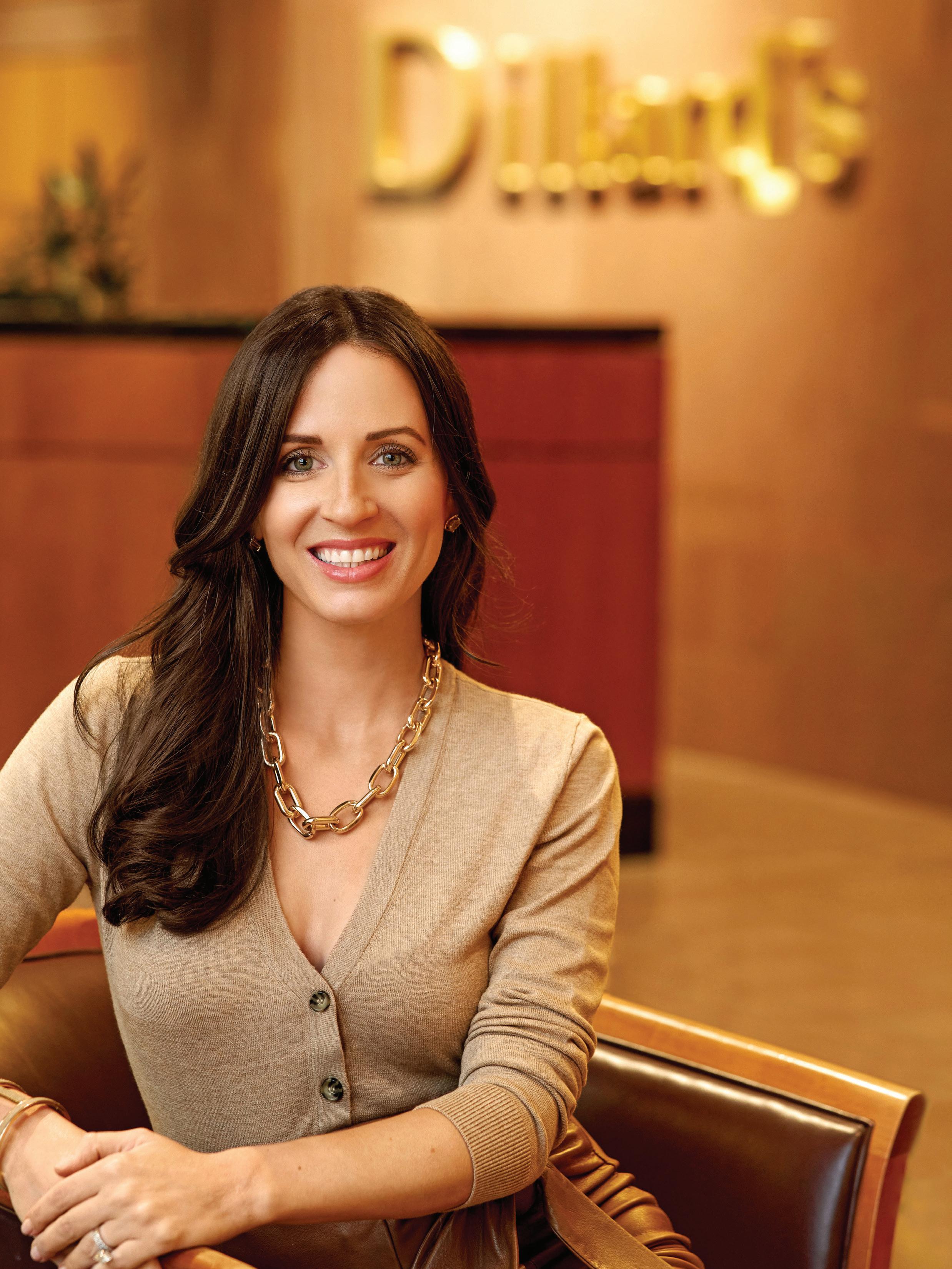 Annemarie Dillard Jazic, Vice President Dillard’s
Annemarie Dillard Jazic, Vice President Dillard’s
“With a dedicated workforce, beautiful outdoors and low cost of living, Arkansas is hard to beat.”
IM FARLEY IS NOT AFRAID to make big decisions, and the one he made about Rivian was consummate. Enamored of the electric-truck startup under former CEO Jim Hackett, Ford Motor invested $500 million in Rivian in 2019 and established a partnership for joint vehicle development. But early this year, Ford under Farley dissolved the development partnership while retaining its minor investment in the company—thereby avoiding association with Rivian’s subsequent problems, including an embarrassing attempt at price gouging and a halving of its expected output this year.
It was the continuation of a Midas touch Farley has applied since becoming Ford’s CEO in October 2020 and promptly reversed course by setting ambitious new coordinates for the company nearly across the board. “He made a really good call on Rivian,” says one admiring high-level executive at a Ford rival.
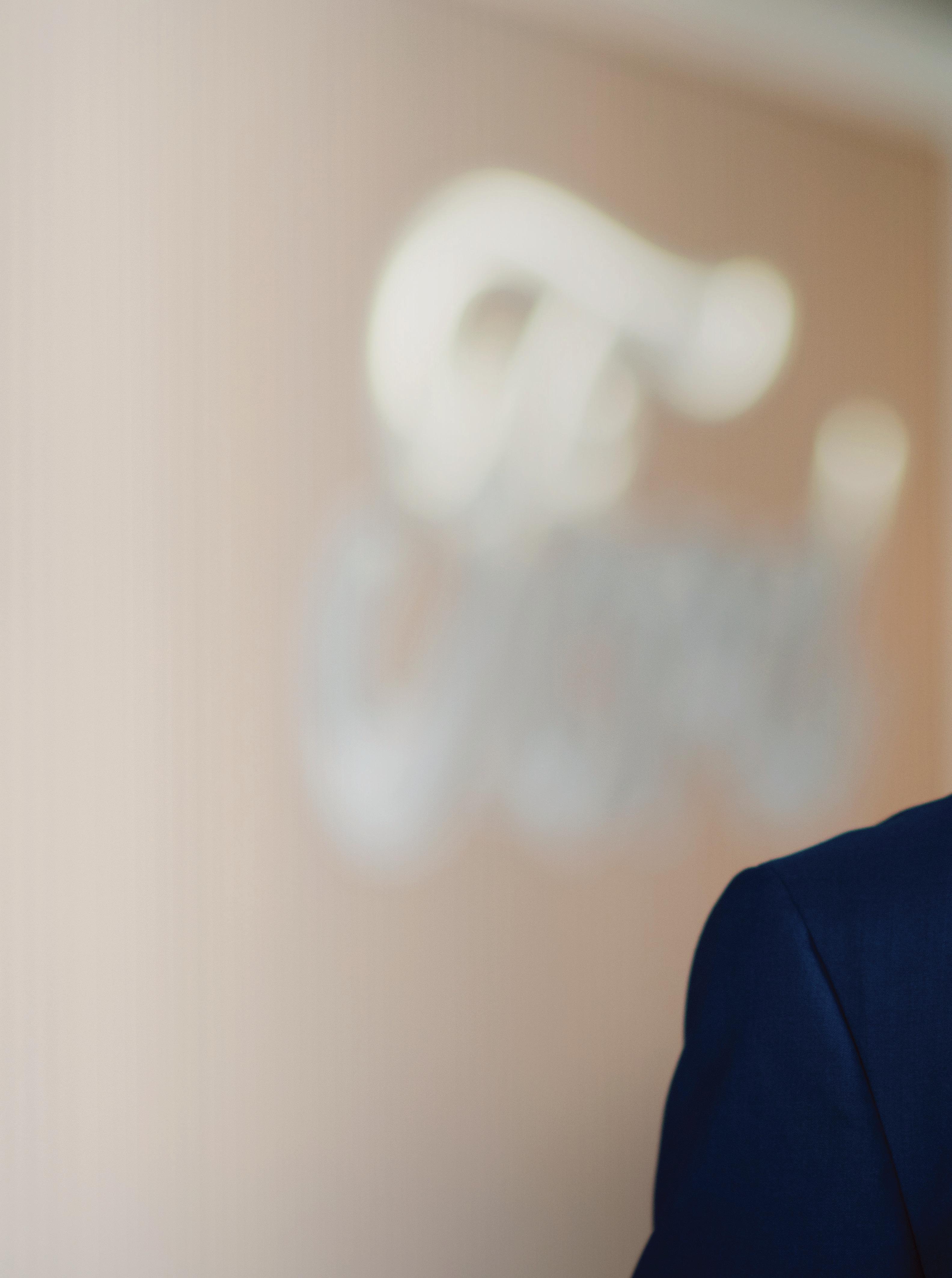
The question now: Will Farley’s winning touch extend to his biggest gambit yet? In a dramatic move early this year, Farley announced that Ford is going whole hog on making all-electric vehicles and the batteries that power them, committing the company to spend more than $50 billion on the tech-
nology over the next five years. The moonshot-type effort will include constructing major manufacturing complexes in Kentucky and Tennessee, restructuring the company into a champion of new technologies and manager of old, accelerating the overhaul of nearly all of Ford’s products, and even reimagining how Ford vehicles are sold through its dealers. The impact will be felt far beyond the company, helping reshape and refocus the entire global automotive supply chain, with knock-on effects for virtually every manufacturer in a host of industries.
“We’re building an ultra-efficient, carbon-neutral automotive manufacturing system unlike anything else in the industry, and hoping to lead a new industry in America as well [in] high-tech battery manufacturing,” Farley tells Chief Executive. His ambitions aren’t just long term but current as well. Farley says his first goal is “to become nothing less than the Number 2 producer of EVs in the U.S. within the next couple of years, and then challenge for Number 1” by going after Tesla.
Everything the 59-yearold Farley has done so far
With a $50 billion wager on electric vehicles, Jim Farley has Ford Motor taking its wildest ride—and boldest bets—since the Model T.

SUMMIT
MAY 17-18, 2022 Detroit, MI and Online Tackling today’s toughest challenges with live case studies from Ford, Carhartt, Webasto, Shinola and many more.
JOIN US: ChiefExecutive.net/ SmartManufacturing Summit
bespeaks a singular seriousness about his short- and long-term aims for all-electric vehicles. In less than two years at the helm of Ford, Farley has already rushed battery-powered versions of both the company’s most iconic nameplates, the F-150 pickup truck and the Mustang, to market. By committing to build a battery plant with SK in “BlueOval SK Battery Park” in central Kentucky, Farley completely flipped Hackett’s decision to rely on outside suppliers for batteries. Simultaneously, he rhetorically side-burnered Ford’s efforts to bring autonomous vehicles to market quickly and to proliferate “mobility” solutions overall, though he once headed those initiatives.
And most recently, Farley announced that Ford is essentially splitting into two complementary enterprises, one devoted to EVs and AVs called Ford Model e, of which he is president, and the other called Ford Blue, which will comprise the company’s efforts in legacy technologies and with its continuing vehicle lines based on internal-combustion engines.

“Ford is starting to push the boundaries of what it means to be an auto manufacturer, rather than let Tesla make all the running,” says Andy Binns, director at Change Logic and an expert on industrial innovation. “This will allow them to move at the pace of a smaller firm and regain some of the initiative they have lost to Tesla. This is the sort of ambidextrous organization that has helped other firms survive disruption.”
Wall Street likes what it sees so far. Ford’s stock price is way up—it jumped to more than $24 a share in January and, more recently, settled back to around $18, above a trough of little more than $4 at the nadir
under Hackett in early 2020 and about $7 a share right before Farley took over the job. “From a leadership standpoint, he has broken through with Ford people and dealers,” says one rival automotive executive. “And I think he’s on the right trajectory.” But, notes David Cole, chairman emeritus of the Center for Automotive Research and a consort to automotive CEOs stretching back decades, “What we’re entering now is a period dramatically less predictable than in the past.”
It’s already part of Detroit lore how legendary Ford CEO Alan Mulally himself spotted the potential in a younger Farley when the latter showed up for an interview. “I was in the outer lobby [of a private hangar at Los Angeles International Airport], and I watched Jim get out of his car,” Mulally told The New York Times in 2008. “I remember his hello, his eye contact, his questions, how articulate and genuine he was. I knew right then this was the person I wanted.”
James D. Farley Jr. didn’t start out at Ford, though his grandfather had worked there. The son of a banker, he earned his undergraduate degree at Georgetown and an MBA at UCLA. He went to Toyota to help launch the Lexus luxury brand and was later put in charge of the new Scion brand aimed at young buyers. It was considered a successful rollout, but Scion could never quite land that market. In any event, Farley rose to the top job at Lexus.
Taken under Mulally’s wing to join Ford as global head of marketing and communications in 2007, Farley rose steadily through the marketing ranks at Ford to the executive vice president level, then rose to COO, and got the nod for the top job after CEO Jim Hackett stepped down and rival Joe Hinrichs, a well-liked Ford lifer and manufacturing maven, retired.
The company’s EV budget, Farley says, “has big money set aside for vertical integration. We’re going deep with our supply chain, focusing on batteries, electronic components and raw materials beyond Tier 1 suppliers into Tiers 2, 3 and 4. We believe that vertically integrating battery manufacturing is going to pay huge dividends
Ford is starting to push the boundaries of what it means to be an auto manufacturer, rather than let Tesla make all the running.”

Take two days to “work on your business” alongside leading mid-market CEOs and senior executive peers at the premier senior leadership conference in the United States.
LIOR ARUSSY
Author, Next is Now: 5 Steps for Embracing Change— Building a Business that Thrives into the Future
HARRY KRAEMER, JR.
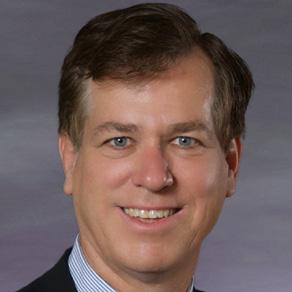
Bestselling Author, Good to Great, Built to Last, How the Mighty Fall, Great by Choice and Turning the Flywheel
Author, From Values to Action: The Four Principles of Values-Based Leadership; Former Chairman & CEO, Baxter International
PETER ZEILHAN
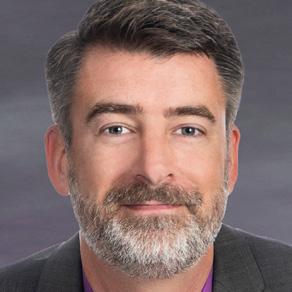
Expert in Geopolitics; Author, The End of the World Is Just the Beginning

Having invested more than a quarter century in rigorous research into what makes great companies tick, Jim Collins will share his most profound discoveries to help you lead with confidence and harness the flywheel effect to build and accelerate momentum. Save $200 when you register online by June 30. Use code: CEOJuneLC Learn more and register: ChiefExecutive.net/LeadershipConference
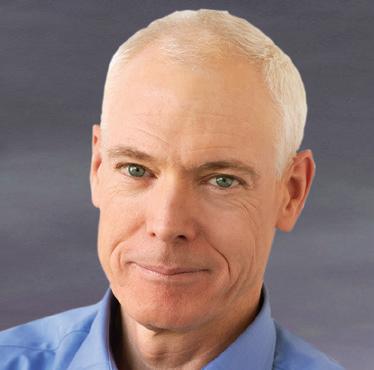
PATRICIA FROST
Chief Human Resources Officer, Seagate Technology; Ret. Major General, U.S. Army

and allow us to control cost and capacity of these critical parts.”
Dividing the company, in essence between the past and the future, is another tectonic change authored by Farley. Wall Street clearly wanted Ford to spin off an “e”-focused enterprise to better accommodate growth and capital formation and recreate the automaker as a services-oriented giant, a la Apple.
Early in his tenure, Farley fed such fantasies, for example by recasting Ford’s robust commercial-vehicle divisions as a brand called Ford Pro and charging its leaders with exploiting data to create long-term relationships with customers—instead of simply selling vehicles to rental companies, corporate fleets and police departments.
But while early this year Farley stepped right up to the spinoff line, he didn’t cross it, opting instead to create two huge entities within Ford—with Ford Blue under Kumar Galhotra as president—that he hopes will synergize one another and, ultimately, build an all-electric leader.
“Ford Blue and Ford Model e are distinct businesses, yes, but they are complementary, and their strategies are intertwined,” Farley says. “They’re going to make each other better. In Ford Blue, we have the secret weapon of industrial know-how and scale that any EV startup would envy. And in Ford Model e, the top talent we’re bringing together will create cutting-edge software and embedded systems for all of Ford’s vehicles—not just EVs. These two focused businesses aren’t just going to coexist— they’re going to cooperate, they’re going to make each other better, and they’re going to be pivotal to each other’s success.”
One top-level strategist at a rival automaker is skeptical. “If you split EVs off into a completely separate company, I would have understood it,” he says. “But doing it just internally—what is the motivation of the ICE [internal combustion engine] people? You’ve given them a death sentence. How do you motivate them to work for the part of the company that’s from the past? Meanwhile, there’s a clear future for the people who work on EVs.”
Farley himself wasn’t always so bullish
about EVs. In an interview a few years ago when he was head of the autonomous vehicle operation, he said, “EVs aren’t the answer.” And indeed, skepticism about Ford’s new direction isn’t as much about Farley’s particular decisions as it is about devotion to the technology in general.
Echoes Cole, “The concern about electrification is that the Biden administration is pushing the daylights out of it, but when it gets down to the average consumer—and voter—they don’t think of EVs as the future at this point.”
Indeed, the market for all-electrics remains severely limited even while sales are beginning to take off. And supply-chain difficulties for EVs could be just as complicated as for ICE vehicles, whose inherent risks are being illustrated by oil prices and hydrocarbon supplies in the wake of the war in Ukraine. “EVs need aluminum and chromium and rare earths and lithium and lead and silver and gold,” says Peter Zeihan, an author and adviser to CEOs on globalization. “You are replacing one problematic supply chain with 13 more.”
Heading into the maw of this new direction, Farley recognized the importance of leading a top team that supports his aims. It includes Galhotra; CFO John Lawler, a longtime Ford exec; and Suzy Deering, the chief marketing officer, who came over at Farley’s invitation from the same job at eBay. Two of Ford’s top five highest-paid executives are newcomers: Mike Amend, chief enterprise technology officer, who joined Ford in September after serving as president of Lowe’s Online, and Doug Field, chief EV and digital systems officer for Model-E, whom Farley lured from Apple’s car project.
Attaching legendary nameplates to new electric vehicles “was a decision that took buy-in from the whole team,” Farley explains. Ford started developing the Mach-E about five years ago, under Hackett, “and made the controversial decision to make it a Mustang about two years in,” or just before he became CEO, Farley says. “It was important that we designed a car that sparked an emotional response, not a generic economy car.”
We believe that vertically integrating battery manufacturing is going to pay huge dividends and allow us to control cost and capacity of these critical parts.
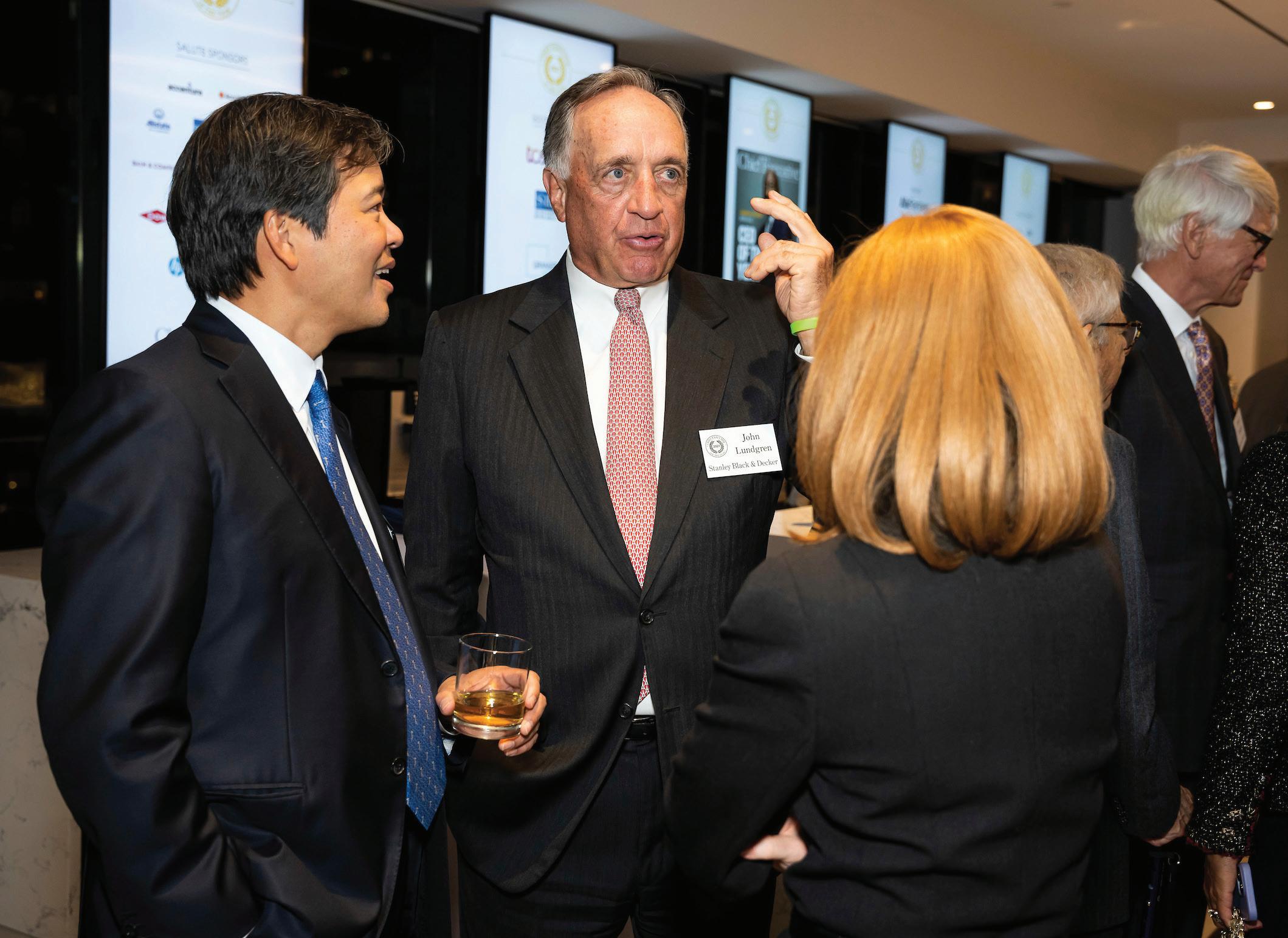
The decision contrasts with those of other automakers, which so far have hesitated to attach all-new battery technology to their consistent sellers. GM, for instance, called its first modern EV the Chevrolet Bolt when it debuted in 2016, and it has turned out to be an ill-fated model hobbled by problems with under-hood fires. Similarly, Volkswagen’s new all-electric SUV is called ID.4, and the new EV line being fielded by Mercedes-Benz this year is called EQS.
But while the Mustang Mach-E has little to do mechanically with the traditional Mustang, it is already outselling Ford’s fabled muscle car. The Lightning is indeed an F-150, being built in The Rouge not a few hundred yards from where the conventional F-150 is still assembled— but with electric propulsion and wild new features such as an onboard generator with enough juice to power a house. It’s “the first electric pickup to hit the market,” Farley notes. “I think we can all agree that the electric revolution hasn’t started until this segment is addressed.”
It won’t be easy. As one critic in the industry points out, “The vast majority of pickup buyers are in the suburbs or are rural, not in cities, and they’re not going to change” from gasoline power. “I don’t see a big move in regard to EVs.” And the only way that Ford is creating the cash flow and profits to fund its electric revolution is through continued strong sales of diesel and gas-powered F-150s, as well as big SUVs such as Explorer, and new hits such as the Ford Bronco compact SUV and the Ford Maverick midsized truck.
Ford is counting on F-150 Lightning sales to take off when the new model becomes available to consumers this year and help bring the company neck-and-neck with Tesla, which has steadily pushed back the expected debut of its pickup truck to 2023.
Tesla is “a strong competitor, and we’re learning a lot from them,” says Farley, whose frenemy repartee with Tesla CEO Elon Musk on social media is being closely followed. “But there isn’t just one path to excellence in EVs, and we have a lot of strengths,” Farley notes, including knowl-
edge of commercial customers.
“We’re focusing on our own strategy: combining 120 years of manufacturing knowhow and scale with dynamic new EVs our customers love, cutting-edge embedded software and dramatic investments in sustainable manufacturing.”
Farley is also resolute on moving from competition for early adopters and other fringe customers to the mainstreaming of EVs, something he’s especially mindful of from his days at Toyota when the company couldn’t get its target market to buy Scions. That requirement is one reason Ford and its dealer council will launch “Electric University,” a multi-day training initiative that will amount to a crash course on all things EV for salespeople, service technicians and parts-department staffers.
“As we enter the second and third innings, we’ll have to do three things to drive EV adoption,” he says. “First, continue making must-have battery-electric vehicles. Second, make them affordable. Third, make owning one easy. Consumers are smart. They know these vehicles offer all sorts of benefits that go beyond their ecological impact—from their superior performance to the way they solve everyday problems and offer unexpected new features.”
Already, Farley has made company chairman and family scion Bill Ford Jr. as comfortable as he has been since Mulally, freeing his boss to work on legacy projects such as Ford’s $950 million reconstruction of the old Michigan Central train station near downtown Detroit into a multipurpose campus that will house the company’s future technology workforce.
“Our team is crystal clear on the opportunity of this moment,” Farley says. “This is Ford’s biggest chance for sustainable growth since Henry Ford scaled the Model T. This will impact us all, and we’ve committed to one another as leaders of this company. We’re going to change how we show up, how we develop ourselves, and raise our expectations of what excellence looks like.” CE
When it gets down to the average consumer—and voter—they don’t think of EVs as the future at this point.
Profit from the experience of your industry-specific CEO peers.
Chief Executive Network (CEN) allows you to profit—personally and professionally—from peer CEOs in your industry who have first-hand experience with the challenges and opportunities you face and are committed to your success.
As the CEO, you are uniquely responsible for synthesizing technology, customer, competitor, societal and economic trends. CEN provides peer and expert perspectives that can help drive your organization’s future.
Maximize your effectiveness in minimal time.
In just a few days a year, you will identify and concentrate on those initiatives that can have the greatest impact.
Each peer group meets in person and online several times per year—and members also have access to world class conferences, a network of over 500 members as well as personal coaches and subject matter experts.
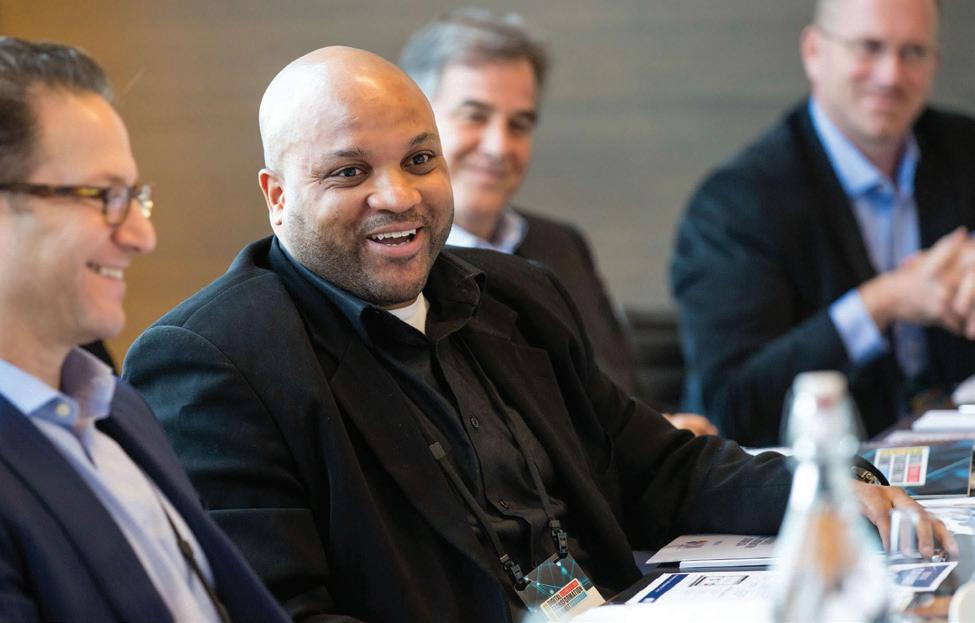

Call Rob Grabill at (201) 323-3716 or visit
ChiefExecutiveNetwork.com
This enables our busy members to tap the collective experiences and knowledge of the network to make better decisions, faster, and to avoid costly mistakes.
Find out more today.
What could your organization accomplish if you could peer into the future?






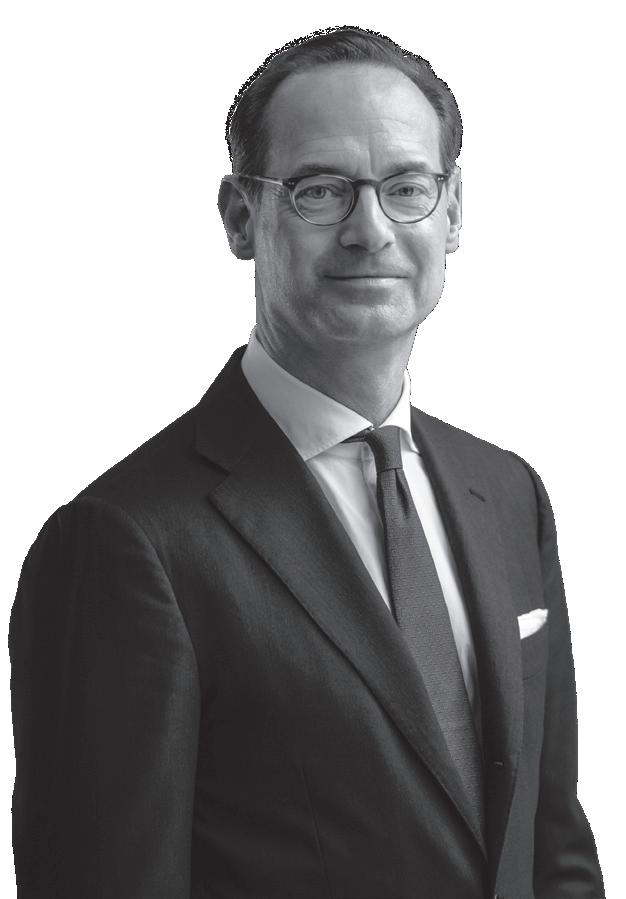

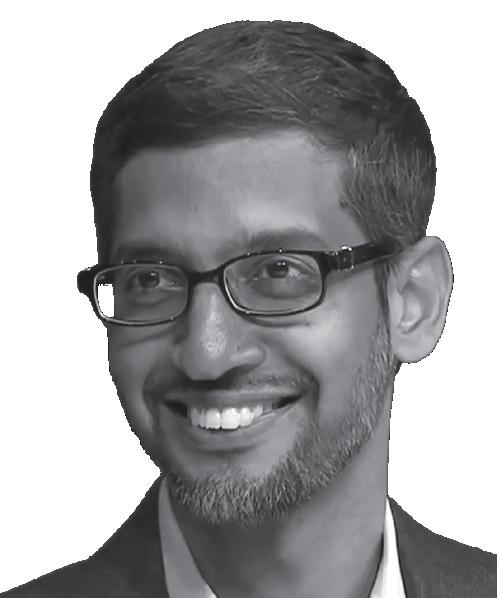

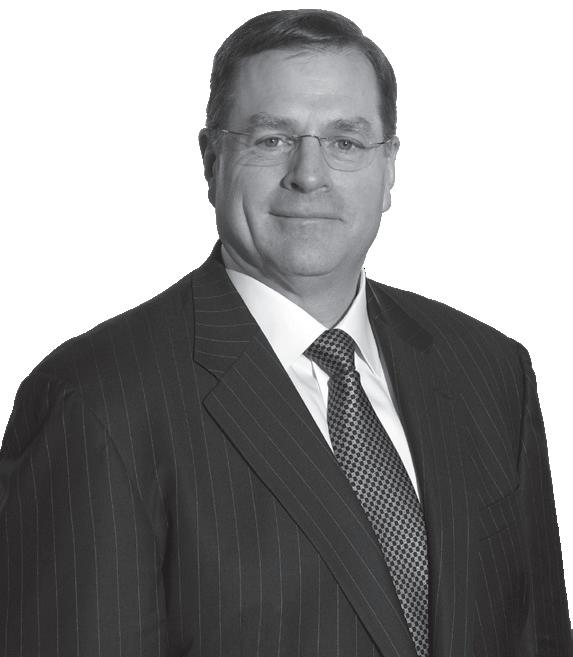

In the new book CEO Excellence: The Six Mindsets That Distinguish the Best Leaders from the Rest, three McKinsey senior partners share insights based on 20 years’ worth of corporate performance data and in-depth interviews with 67 of the most successful chief executives of the 21st century. All aspects of the role are covered, including setting direction, aligning the organization, mobilizing leaders, engaging the board, connecting with stakeholders and managing personal effectiveness. In this excerpt, they explore one aspect of direction setting: how the best CEOs approach strategy.
U.S. President John F. Kennedy clearly stated his vision: “To win the battle that is now going on around the world between freedom and tyranny.” What was his strategy? A series of big moves, one of which has become synonymous with the very idea of taking a giant leap forward: the moonshot. During his speech that day, Kennedy not only asked for funding to put a man on the moon but also for three related big moves: increasing unmanned space exploration, developing a nuclear rocket and advancing satellite technology.
The story shows how a mindset applies not just to vision but also to the strategies employed in pursuit of it. Like Kennedy, the best CEOs make big strategic moves early and often during their tenures, and an analysis of 3,925 of the largest global companies over a 15-year span bears this out. In their book Strategy Beyond the Hockey Stick: People, Probabilities, and Big Moves to Beat the Odds, our McKinsey colleagues ran the numbers to determine which big strategic moves yield the highest probability of a company’s jumping from an average to a top profit generator. Their research identified five strategic moves that matter most, as long as they’re pursued with a “man on the moon” kind of boldness:
Buy and Sell. The best CEOs execute at least one deal per year on average, and over a 10-year period these deals cumulatively amount to more than 30 percent of a company’s market cap. This puts a premium on having a deep capability to identify, negotiate and integrate acquisitions. The top CEOs are as bold about selling as they are about buying. Aon is a poster child for making deals, executing more than 220 acquisitions and 150 divestitures over the past 15 years. “We’re always shaping and improving our portfolio,” says CEO Greg Case.
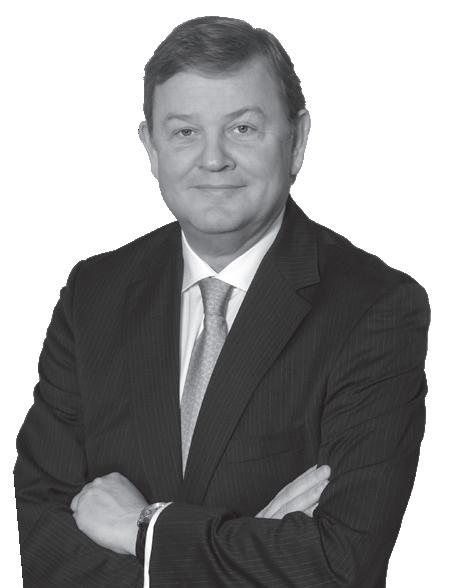
Invest. If you want your company’s investments to be big enough to move the needle, your capital expenditures-to-sales ratio needs to exceed 1.7 times the industry median for 10 years. General Motors CEO Mary Barra exemplified this strategic move when she committed more than half of GM’s product development capital through 2025 to “an all-out pursuit of global electric vehicle leadership.”
Improve Productivity. The most successful companies reduce administrative, sales and labor costs more deeply than others, and in so doing achieve 25 percent more productivity improvement than their industry’s median over a 10-year period. This is exactly what Allianz’s Oliver Bäte did soon after he became CEO. In an industry that had seen flat expense ratios at 30 percent for decades, Bäte drove the ratio below 28 percent while increasing
customer loyalty from 50 to 70 percent and internal growth rates from negative levels to 6 percent between 2015 and 2019.
Differentiate. The best CEOs improve their business models and create pricing advantages in ways that are big enough to change the company’s trajectory. As a result, their companies achieve an average gross margin at least 30 percent higher than those of their respective industries over a decade. Former LEGO CEO Jørgen Vig Knudstorp used this strategic move well in pursuing what he called “a strategy of niche differentiation and excellence” that aimed to refresh at least half the company’s core products every year. He created, for example, digital platforms that strengthened communication among LEGO fans, developed products for girls, licensed collections (e.g., Star Wars) and launched the successful LEGO movie franchise.
Allocate. This move is deemed big when a company shifts more than 60 percent of its capital expenditures among business units over 10 years. Doing so creates 50 percent more value than what companies that reallocate more slowly achieve. Resource reallocation involves more than just capital, however; it also means shifting operating expenditure, talent and management attention to where it does the most good. As such, it’s a vital enabler of the other four big moves.
CEOs who make too few moonshot-size moves—or make them too late in their tenure—fall behind the pack. Furthermore, those who make these moves earlier in their tenure outperform those who move later. The best CEOs don’t only venture into uncharted waters—they are also willing to stay the course on stormy seas. In his strategic push to make his UK spirits company more customer-centric, Diageo CEO Ivan Menezes diverted commercial and marketing efforts away from distributors and toward consumers. As sales declined in the short term, Menezes found himself under fire from investors and faced skepticism inside the company. “The entire organization was watching to see if we’d blink,” says Menezes. “But we stuck with it, explained why, gained credibility and really set the
“Do you sit in your study and yell, ‘Eureka! I have it’?
I don’t think that’s how it works.”
—Feike Sijbesma, Royal DSM
foundation for growth.” Since then, Diageo has achieved top-quartile shareholder returns in its peer group.
The many similar stories we hear from CEO after CEO remind us of the definition of courage offered by Piers Anthony, author of the Xanth fantasy series: “Being terrified but going ahead and doing what needs to be done—that’s courage. The one who feels no fear is a fool, and the one who lets fear rule him is a coward.” Former CEO of Medtronic Bill George puts a fine point on the importance of this aspect of the role. “I’ve seen some otherwise very well-qualified CEOs who lacked courage and their companies managed for a while but atrophied over time,” he says.
Where do the best CEO get this courage? We found that it comes from four sources: being exceptional futurists, keeping an eye on the downside, acting like an owner and regularly applying “heart paddles.”
Virtually every CEO we spoke to emphasized the importance of having a clear point of view on where the world is going. Top CEOs keep careful track of shifts in technology, changes in customer preferences, new competitors and threats on the horizon. Doing so enables them to place bets before these trends become conventional wisdom and to maintain conviction when others inevitably criticize their choices.
Over the course of his 23 years in the CEO role—at General Instrument, Tyco and DuPont—Ed Breen consistently capitalized on trends. In 2017, for example, after studying the economics of the agriculture industry, he concluded that it would consolidate down to just a few players. At the time, agriculture represented two of DuPont’s seven divisions, but it accounted for more than 50 percent of the company’s equity value. Breen worried that restructuring the agriculture business could negatively affect DuPont’s stock in the short term, but it became clear to him that merging with Dow Chemical and spinning off what is now Corteva Agriscience was the way to go. Investors were skeptical, but Breen was convinced that the move made sense for
both companies.
In what some analysts have called the most complex corporate deal ever, Dow and DuPont merged into a single entity, were reconfigured and then split into three separate companies: Dow (commodity chemicals), DuPont (specialty chemicals) and Corteva (agriculture seeds, traits and chemicals), all of which were better equipped to compete in their respective fields. Looking back at his career, Breen reflects, “CEOs make important decisions every day, but some decisions are just so huge that nothing else even comes close. I’ve made approximately 15 really major decisions in my career. Those big ones had better work.” Breen’s have, in large part because he was able to see around corners.
All of the excellent CEOs we spoke to had similarly lucid views of what the future would bring. Where do they get their crystal ball? The answer is more straightforward than many might think. Feike Sijbesma, former CEO of Dutch life and materials sciences powerhouse Royal DSM, whose shift of the company’s focus away from bulk petrochemicals not only benefited shareholders but the planet and society, recalls pondering early in his career how to develop a vision and a strategy: “Do you sit in your study and yell, ‘Eureka! I have it?’ I don’t think that’s how it works.” He started reading broadly, looking for surprising connections, traveling and connecting with

Excerpted from CEO Excellence: The Six Mindsets That Distinguish the Best Leaders from the Rest, Scribner, 2022.
As a special offer to Chief Executive subscribers, we are making complimentary copies available (supplies limited).
Please visit: ChiefExecutive.net/CEOExcellence to claim your copy.
people in business, science and society. “That’s how we got the idea to move out of petrochemicals and use the proceeds to move to nutrition and health,” he says.
The best CEOs hardwire their view of the future into their companies’ strategic planning. As Sundar Pichai, CEO of Alphabet and its subsidiary Google, describes it: “I think about our mission and the fundamental trends we’re seeing, and based on that I write down the five to ten themes that we really want to execute on well.” Pichai next works with his management team and nominees from different levels of the organization to sharpen his themes. With those ideas in mind, each part of the organization develops a set of objectives and key results (OKRs) that are ambitious and shared internally. Pichai then reinforces the themes in all review conversations: “If ‘Asia Pacific–first’ is one of our five themes, I could be in a YouTube review and probe the team: ‘Can you tell me how you’re solving for Asia Pacific first?’”
To be clear, boldness doesn’t mean recklessness. Excellent CEOs fully understand the risk/reward trade-offs of potential big moves, and taking risks only makes sense when those trade-offs are understood. “Most of the time, you’re making strategic decisions with imperfect information,” says former CEO of Ecolab Doug Baker, who became head of the water and hygiene services giant in 2004. “If you wait until you have everything you want to know, then you’re likely to miss the opportunity. The worst mistake I can make is to throttle back—it’s essential to keep growing, keep investing, keep moving, but to do so in a way that increases the company’s odds of success.”
That doesn’t mean Baker only took moderate risks during his time at Ecolab’s helm. After his leadership team identified water technology as a strategic priority, Baker aggressively pursued the acquisition of water treatment company Nalco. One thing that
reduced the risk of the deal for Baker was that he knew his biggest competitor was being acquired, which would give Ecolab some room to move while the competitor was in disarray. He also knew he could spin off parts of Nalco to reduce the overall risk. In July of 2011, Ecolab announced it was buying Nalco in a deal worth $8.1 billion, which at the time was equal to 75 percent of Ecolab’s market cap. This big move and more than 100 smaller acquisitions gave Ecolab an expanded offering of products and services and geographic reach that allowed the company to provide one-stop shopping for its customers. In his 16-year run as CEO, Baker increased Ecolab’s market capitalization eight times over.
Many CEOs spoke to us about how they practically managed the downside risks of big moves. “Most things that bring you down are the unintended consequences,” says Rod O’Neal, former CEO of automotive parts maker Delphi. “One cause of our success was the things we didn’t do.” For example, Delphi opted against making big investments in India, South America or Russia after methodically working through potential unintended consequences. “If you make a given decision, you can’t just consider the first domino you trip, which is probably a good outcome,” O’Neal explains. “What could be the second-, third-, fourth-, fifth-, sixth- and seventh-order consequences? We would go down the decision tree and see what outcomes could occur. If we came across one that, no matter how remote it was, we couldn’t survive it if it showed up, we made another decision.”
Over time, the best CEOs avoid the downside by forming some rules of thumb based on pattern recognition. At Danaher, Larry Culp, who was the company’s CEO from 2001 through 2014 and went on to become the chairman and CEO of GE, applied three hurdles for making an acquisition. “We’ve got to like the space and the company,” he says. “We’ve got to be able to add value. And the math of the deal has to work. But we have to come at it in that sequence, because if you flip it the way most bankers want you to, you’re going to get in trouble.” Culp’s conviction was forged by experience.
“If you wait until you have everything you want to know, then you’re likely to miss the opportunity.”
—Doug Baker, Ecolab
“In the early days, we weren’t at all discriminating as to what we’d buy,” he recalls. When Culp became CEO, his bias was for higher-gross margin, less capital-intensive instrumentation businesses, resulting in a portfolio that had strategic coherence as it grew. And grow it did: Over the course of Culp’s tenure, Danaher’s total shareholders return was 465 percent versus 105 percent for the S&P 500.
When top CEOs face big, bold decisions, they say that the best way to arrive at the right answer is to think like an owner. When Breen was a first-time CEO at General Instrument, he had a couple of tough decisions that were make-or-break for the company. “I remember going to Ted Forstmann, our largest investor and board member, to discuss them, and he said to me, ‘Ed, it’s your company. You know, why don’t you look in the mirror and make the decision?’”
The advice had a profound impact on the new CEO, and from then on, Breen always made decisions as if he owned 100 percent of the company.
Thinking like an owner helps resolve the tension between the short and long term. “As a CEO, you’re responsible for the longterm fate of the company,” says Valeo’s Jacques Aschenbroich. “If I want to improve the results tomorrow, it’s very easy. I control R&D; I control capex. It will be fantastic, but we’ll be dead in a few years’ time.” Ronnie Leten, the former CEO of the industrial giant Atlas Copco, went so far as to tell his board and his team, “Let’s act like a family business. I’m the head of the family. We create value over time for our children and grandchildren. If we do it this way, we’ll continuously create economic value through economic cycles.”
Early in his tenure at Brazil’s Itaú Unibanco, which became the largest financial conglomerate in the Southern Hemisphere and tenth-largest bank in the world by market value, former CEO and now co-chairman Roberto Setúbal found that acting like an owner gave him the conviction to make a very bold move. At one point, when inflation stopped overnight, the bank began to
lose money for the first time since Setúbal started working there. “I was panicking,” he says. “But I knew my role as CEO was to make decisions like an owner, to do whatever it would take—no matter how controversial—to constantly increase the long-term value of the bank.”
At that time, banks didn’t charge fees on accounts, but if Itaú Unibanco didn’t change, it would not survive. The bank made a big announcement on TV and in the newspapers about new fees it would charge. Setúbal’s competitors told him he was crazy and that his customers would close all their accounts. “They were wrong,” says Setúbal. “Our clients accepted the fees because we chose to be very transparent about it. It turned out that people were tired of other banks trying to charge hidden fees.”
What Setúbal describes above is but one of a number of big moves he made throughout his 22-year tenure as CEO that helped differentiate his bank from the competition. “You have to reinvent yourself. The world changes. You have to change,” he says.
In his first act, he turned Itaú from a regional to a nationwide bank by quickly acquiring and integrating four large and troubled stateowned banks. In the second, he invested heavily to move the bank from being retail only to a leader in corporate and investment banking while expanding into the affluent retail segment and into three other Latin American countries. In his third act, he implemented an agile operating model, radically reduced overhead, increased efficiency, overhauled the company’s performance culture and executed a merger with Unibanco. In his final act, he aggressively drove growth in Brazil, pushed further Latin American expansion and prioritized investments to digitize the bank.
Setúbal’s experience illustrates how many of the best CEOs think of making big moves: as a series of “S curves”
“My role as CEO was to make decisions like an owner, to do whatever it would take—no matter how controversial—to constantly increase the long-term value of the bank.” —Roberto Setúbal, Itaú Unibanco
Carolyn Dewar, a senior partner in McKinsey’s San Francisco office, and Scott Keller, a senior partner in the Southern California office, co-lead the firm’s global CEO Excellence practice.
Vikram (Vik) Malhotra is a senior partner in the New York office.
driving change over time. This means they ramp up into a period of intensive activity and radical improvement through a set of big moves, followed by a period of restoration while still improving incrementally, followed by another ramp-up in big-move intensity, and so on. Excellent CEOs are always looking to the next S curve while delivering on the current one. “There are some things where you have to be long-term and patient, and some things where you have to be impatient,” says Microsoft’s Nadella. “You’ve got to balance the future and the present. Only the CEO can do that.”
Like Nadella, the best CEOs think hard about what tempo to set for the big changes they make. Doing this isn’t easy, but it’s necessary. “No one likes change, so you need to create a rhythm of change,” says Dominic Barton, McKinsey & Company’s former global managing partner, who often advised clients on transformations. “Think of it as applying heart paddles to the organization. The average lifetime of an organization in 1935 was 90 years, in 2015 it was 18 years. It’s an existential issue to change enough, regularly enough.”
When Hubert Joly led Best Buy through a significant transformation, he applied heart paddles several times as he moved from one S curve to another. The initial turnaround was called “Renew Blue.” “In the minds of some people, that era was associated with a very conservative environment where we had to focus a lot on cost reduction and couldn’t take as many risks or we’d lose credibility,” he says. When Joly felt Best Buy was ready to move into the growth phase and take more risks, he signaled the next phase of his strategy: “Building the New Blue.” During the turnaround, Joly had already made a series of bold moves such as offering price-match guarantees, exiting international markets and reinventing vendor partnerships. Now, with his eye on growth, he applied the heart paddles again by building a leading position in the smart-home market, expanding into senior care through sensors and AI, and launching a customer technology-support program.
We’re often called on to counsel CEOs who
start strong by making a series of bold moves but a few years into their tenures experience waning motivation and increasingly static performance. These CEOs got the memo on “make big moves early” but not the one that added “and often.” Every big move should have a start and a finish, with the completion of each phase building confidence and creating capacity for further change. When the equivalent of a lunar landing is achieved, victory should be celebrated and lessons should be learned, but then it’s time for the next bold move to take the company even further, faster. Doing so accounts for why the best CEOs achieve above-market performance on a sustained basis.
Johan Thijs, CEO of Belgian-based financial services giant KBC, exemplifies how the best leaders approach S curves. In 2019, the company had consistently posted profits that were among the strongest in the European market. The firm was always highly liquid and well capitalized. For three years running, Thijs had appeared in the Top 10 of Harvard Business Review’s list of Top 100 CEOs in the world. If ever there was a “if it’s not broke, don’t fix it” scenario, Thijs was in it. So what did he do? What all great CEOs do: “We reassessed our strategy,” he says. “We’re continuing down our chosen route but are now shifting up a gear.” The company celebrated and retired its previous S curve, then ramped up the next one, emphasizing artificial intelligence, rapid decision making, and product and process simplicity, all to become the most data- and solution-driven digital-first bank-insurance company in the world.
Big moves bring with them big risks. The best CEOs know that, in the words of hockey hall of famer Wayne Gretzky, “you miss every shot that you don’t take,” and that the bigger risk is to be timid in the face of uncertainty. They get comfortable with acting boldly by having a clear point of view on the future, fully understanding the risk/reward tradeoffs, acting like owners of the businesses and applying “heart paddles” throughout their tenures. While there’s no guarantee of success, the fact remains that without making big moves early and often, there’s little chance for a company to become a top performer. CE
Great CEOs make great use of their board – but how do the best CEOs manage and lead their board of directors? Since 1998, Corporate Board Member has helped inside and outside directors improve their contributions as individuals and as boards, and in turn, strengthen stakeholder trust in the organizations they represent. Our community of exemplary leaders are setting higher oversight standards, distinguishing themselves—and their organizations—from their competitors. Join them as part of the Corporate Board Member Network.
Network with your peers.
Meet other CEOs and board members who have led from inside to get the firsthand insights you need to leverage the full experience of your board of directors.
Challenge the status quo.
Enable your directors to bring constructive debate to the boardroom— challenging business assumptions to make the most informed and impactful decisions.
Effectively lead your board.
Just as boards hold the CEO accountable, you must require the same of your board. Learn how to clearly communicate what you need from your directors and make your board a cohesive team.

Through exclusive peer-to-peer discussions—online and in-person— access to independent research and best-in-class resources and training, CBM Network is raising the bar in board education.
To explore full-board or individual membership options, contact Rachael Gaffney at rgaffney@ChiefExecutiveGroup.com or visit
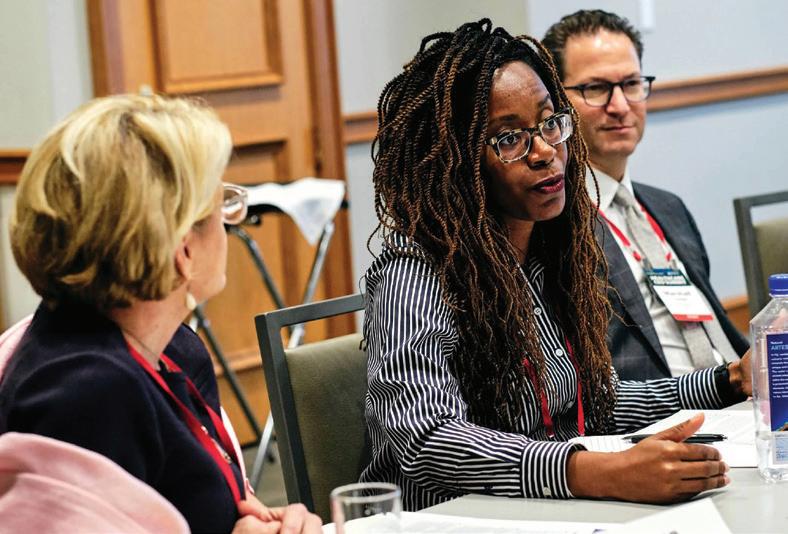
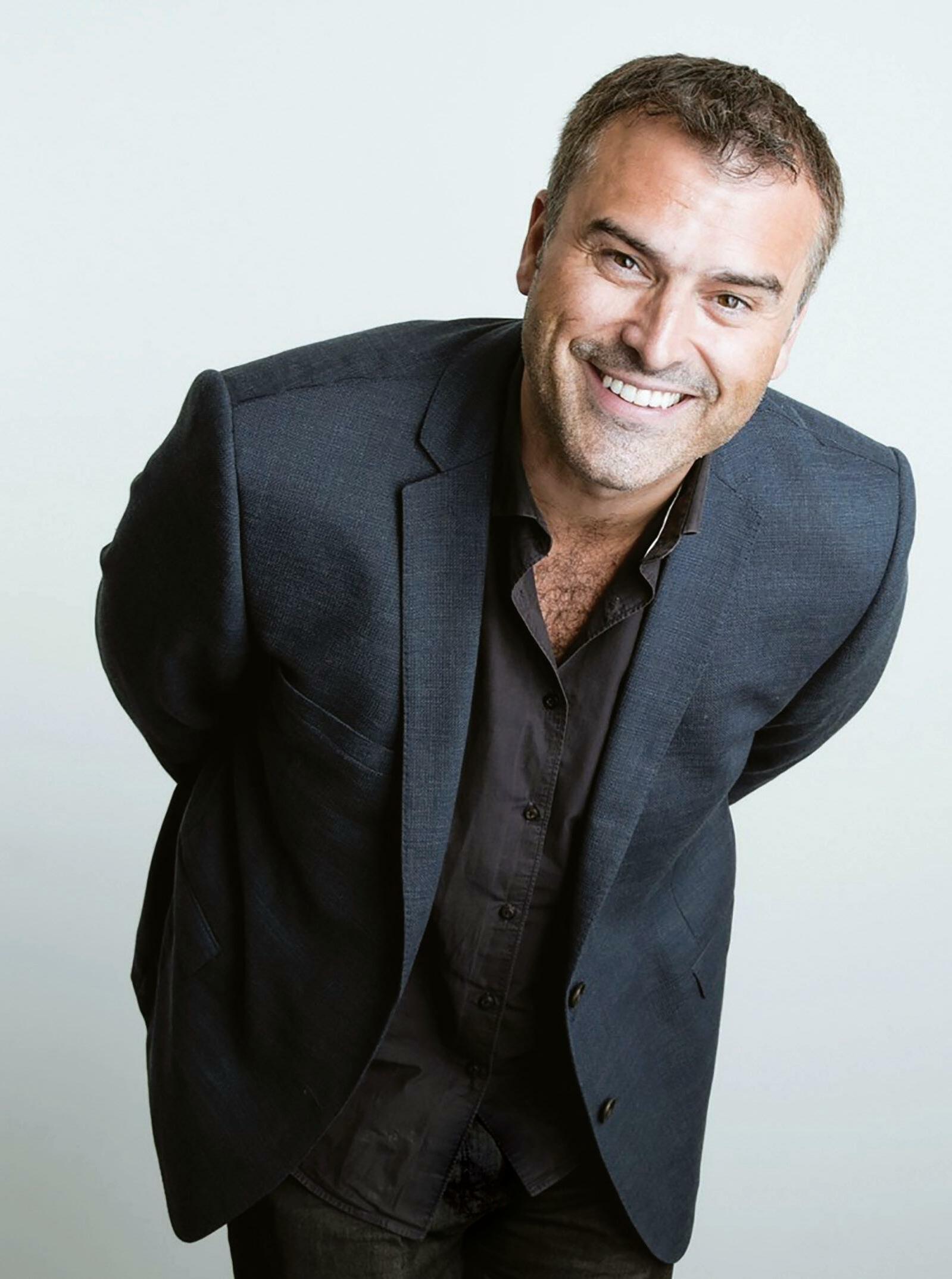
Employees have got to see that these initiatives are being championed, beyond words on a page, by the CEO, the C-Suite, senior management.”
—James Wright, CEO, Red Havas
LONG for Paul Miller to realize that his people were at a breaking point. Once Covid hit, sales at Questex, which earned the lion’s share of its revenues from in-person conferences and trade shows, cratered. By mid-2020, staffers were working long hours as the company pivoted to online events.
“People were bursting into tears on calls with me,” says CEO Miller. And in his daily six a.m. virtual “war-room” meetings with the executive team, Miller learned he wasn’t the only one having that unsettling experience. “It was like, ‘Oh, that happened to you, too?’”
So he started checking in with people, taking advantage of the proximity that online tools afforded. “I could virtually walk the corridors and tap someone on the shoulder, where before Covid, that would have taken flights and traveling around the world,” he says. “It became apparent to me that people were really struggling.”
Miller says the crisis wasn’t so much the cause of a problem as a wake-up call to a more systemic issue: “The pandemic exposed the real cracks in the system, and it became clear that we were not doing some things we should have been doing [for our people].”
To be sure, the isolation, fear and seismic change that Covid ushered in ratcheted up the anxiety and fatigue, “but these mental health needs were around long before the pandemic,” says Melissa Howell, CHRO for Kellogg’s.
So were burnout and workplace malaise. The World Health Organization classified “burnout” as a workplace syndrome in 2019, in the 11th Revision of the International Classification of Diseases. It had already become clear that the technology enabling rapid advances in innovation was also virtually shackling employees to their desks long after they’d left the office. And the kind of rapid transformation that companies across industries have been doggedly pursuing has been hard on the human psyche, says Andrew Shatté, Ph.D., chief knowledge officer and cofounder of meQuilibrium, which offers a tech-based approach to companies seeking to reduce burnout among the ranks. “You can’t put people through this kind of constant change and expect them to come out okay on the other side.”
The data certainly seem to show our collective mental health in some decline, while the expenses to cope with it soar. Spending on mental health treatment and services reached $225 billion in 2019—up 52 percent since 2009, according to an Open Minds Market Intelligence Report. Depression alone is estimated to account for $44 billion in losses to workplace productivity, according to research from Tufts Medical Center and One Mind at Work. Drug and alcohol abuse was already rising steadily, but the Centers for Disease Control and Prevention
The employee mental health crisis didn’t start with Covid—and it won’t end with it. A look at how (and why) CEOs are investing in their employees’ peace of mind.
BY C.J. PRINCE
reported that as of June 2020, 13 percent of Americans said they started or increased substance use as a way to cope with the stress, and overdoses have spiked since the onset of the pandemic. The U.S. suicide rate in 2020 was 30 percent higher than in 2000—and according to the U.S. Bureau of Labor Statistics, 2019 saw 307 workplace fatalities by suicide, the highest level on record.
When the data is segmented by age, it’s clear that younger generations are suffering most. Millennials are worse off than Gen X, and Gen Z is at greatest risk, according to WTW (formerly Willis Towers Watson): 65 percent of that cohort believe they suffer from anxiety and depression. “That’s our future workforce,” says Regina Ihrke, a WTW senior director and health and wellbeing leader. “It’s a whole new world we’re about to walk into with that group of people—and we’re all fighting for them from a talent perspective.”

In fact, it is the two youngest generations driving the recent spike in turnover. Whether one calls it the Great Resignation, the Big Quit, the Great Reshuffle or some other moniker, “the talent war is over—and the talent has won,” says Joe Brady, CEO, Americas for workplace solutions firm The Instant Group.
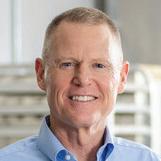
For Miller, the cost of replacing frustrated employees is enough incentive to spend money to keep them happy. “You have to have the KPIs in place on that,” he says. “What does it cost to lose an employee?
What if five people leave a department— what is the cost of that? You quickly start to realize this might be worth the investment.”
Quantifying ROI in the area of wellness spend can seem, on its face, a bit squishy. And the notion that companies should be responsible for employees’ mental health is relatively new; most CEOs today—the vast majority either Boomers or Gen X—grew up in a corporate culture rife with stigmas around depression, addiction and other mental health challenges, and one that encouraged people to leave their personal problems at home.
But as times and expectations have changed, more and more leaders are seeing a direct link from promoting mental health and wellness to profitability.
“It’s crystal clear to me that if we’re not investing in our people and helping and supporting them, it’s going to hurt our overall bottom line,” says Dan Dye, CEO of flour milling and ingredient company Ardent Mills. “There’s just no question in my mind about that.”
But even companies that have gotten religion are still playing catch-up. According to a recent WTW survey, while 86 percent of employers said that mental health, stress and burnout are a top priority, nearly half (49 percent) had not yet formally articulated a wellbeing strategy for their workforce, and only a quarter had already adopted a wellbeing strategy.
Those that don’t get something in place may miss an opportunity to contain smaller bumps that, left to fester, become big, costly problems. “It’s the day-to-day stress that piles up and then turns into sleep problems, which fuel even more problems, like burnout, which will very often turn into depression,” says Patti van Eys, Ph.D., a licensed clinical psychologist with Pathways at Work, which helps companies address mental health and wellness. “So, now we’ve got clinical depression, which changes the neurochemistry of the brain dramatically, and now it’s a very real and serious illness that needs aggressive treatment.”
Fortunately, there is a lot companies can do right now to release the pressure valve and create a culture that is more inviting to talent and enables them to work more productively.
It’s crystal clear to me that if we’re not investing in our people and helping and supporting them, it’s going to hurt our overall bottom line.”
—Dan Dye, CEO, Ardent Mills
“These mental health needs were around long before the pandemic.”
—Melissa Howell, CHRO, Kellogg’s
‘Squash the Stigma’
In describing how our culture views mental health issues, Shatté, who played rugby in his native Australia, offers an analogy to sports. “If I broke my arm [in a game], that would be seen as a badge of honor,” he says. “But if I went to the coach and said, ‘I’m clinically depressed,’ that wouldn’t be seen in the same light. We’re still very much in that place.”
CEOs can change that, says Accenture North America CEO Jimmy Etheredge. “Mental health issues remain shrouded in stigma, so it’s not enough to merely offer programs— the onus is on leaders to lead by example and show people it’s okay to be their authentic selves. Leaders need to demonstrate they are real people, and that means underscoring that, sometimes, it’s simply okay to not be okay.”
For some CEOs, getting that personal with staff will be challenging, but Etheredge notes that “authentic, effective leadership requires a certain level of vulnerability.”
Dye, who shared his personal struggle during the pandemic with employees in a weekly email, has made “squashing the stigma” a corporate goal. “[That means] taking away the idea that there’s something bad about getting help or support and helping people to just kind of normalize it, because we are all having challenges.” His company added a new category to their safety training, which already had rigorous components around food safety and physical safety. “We added the dimension of emotional and psychological safety, meaning Ardent Mills is a safe place to talk about your challenges, and our safety value was there to help and protect our people,” says Dye.
Companies that don’t work on removing the stigma may find their well-intentioned wellness offerings underutilized. “People are worried about confidentiality. They’re worried about the impact on their careers,” says Shatté. “One of the best ways to present it is a universal primary prevention kind of thing—that we recognize that every single employee can benefit from becoming mentally stronger, more resilient. Every team can benefit from developing the skills of agility and the capacity to pivot, and every organization can develop a culture that’s more conducive to resilience.”
A look at how some early adopters are attempting to shore up employee sanity.
• Howard’s, a Southern California independent retailer of luxury appliance, began offering access to guided meditation during the workday—morning and afternoon, and for the warehouse group, evening sessions. Last year, they added yoga sessions during work hours as well.
• Ardent Mills recently brought in a licensed therapist to speak to the company, virtually, about mental health in the workplace. More than 300 of the company’s 2,500 employees tuned in voluntarily. “That showed us this is top of mind for people,” says CEO Dan Dye.
• At Kellogg’s, in addition to increasing mental health visits from five consultations to 12 per life event per year, the company also recently introduced its own Mental Health First Aid certification, known as Lean on Me, which teaches employees how to identify, understand and respond to signs of mental illness and substance use disorders. “To date, we have certified over 100 employees,” says CHRO Melissa Howell.
• Safeguard Global is restoring sanity by empowering employees to make their own schedules. “We call that ‘Work in any way,’” says CEO Bjorn Reynolds, who has changed the model to an outcomes-based approach. The company found that employees will happily work three 12-hour days if it means they get two days off, and so long as the employee achieves the agreed-upon outcomes, it works. “As a business, you have to say, ‘How do I evolve?’—even if it may cost me some bottom line to start with.”
From relaxation and meditation apps like Headspace to in-office yoga classes and “quiet spaces” to virtual counseling and treatment, offerings run the gamut. Those companies with a large, diverse workforce typically offer a variety of options because, as Accenture’s Etheredge says, “tackling the issue of employee mental health can’t be a one-size-fits-all approach.” The consulting firm teamed up with Talkspace to offer confidential virtual therapy to its 65,000 U.S. employees and provides subscriptions to the Calm app for daily mindfulness practices, sleep improvement and anxiety reduction, and Wysa, a 24-7 chatbot “that’s like a mindfulness coach and therapist in your pocket to help manage stress anytime, anywhere,” says Etheredge, who says he is “on a mission” at his firm “to make it okay to not be okay.”
Providing access to treatment, even a handful of sessions a year, can help productivity. “We know from a research standpoint that therapy and emphasis on mental health can increase performance expectations by as much as 41 percent,” says Rachel O’Neill, Ph.D., a licensed Talkspace therapist.

“We also know that individuals who have access to mental health resources are less likely to utilize sick time and days off, and more likely to be productive employees. Also, about 60 percent of employees believe that an atmosphere that prioritizes mental health is a reason to stay in the workplace.” (See sidebar for examples of resources) Offerings don’t have to be expensive. Media agency Red Havas began offering a “rejuvenation hour” once each week, dedicated to mental health, and employees can use it any way they like. (Rather than HR, the idea came out of a SharkTank-style pitching session, called The Red Retreat, where employees can propose programs they’d like to see at the company.) To emphasize his support of the program, CEO James Wright sent out an email for the first six weeks talking about what he had done with his own hour. “Whether it was going running in Central Park, or ‘Hey, I listened to this podcast today,’” he says. “Employees have got to see that these initiatives are being championed, beyond words on a page, by the CEO, the C-Suite, senior management.”
The most important thing, says Miller, is to do something, so employees see you’re taking it seriously. “Focus on the things you can do quickly that are meaningful and package them up to employees so they know you’re listening—they can be low or no cost in terms of raw dollars—and then use those as a platform to listen and survey employees and figure out what they’re missing or really want,” he says, adding
that CEOs should solicit employee feedback constantly. “There’s no bad news that comes out of employees telling you the truth. When you’re in the meetings and they’re all nodding their heads and saying, ‘This is the best thing since sliced bread,’ and then they leave and say, ‘What’s this guy smoking?’—I’d rather know it than not.”
Brady agrees. “You have to be a good listener and not be too fearful. It means saying, ‘Hey let’s test something,’ and if it doesn’t work, we’re going to course-correct. But in the meantime, let’s make a good, honest attempt.”
Sometimes, you’ll have to disappoint them. Miller’s veteran employees wanted him to reinstate a 401(k) match that his predecessor had discontinued—but the company was not in a sound enough financial position to do it. “That was a big complaint they had,” he recalls. “I had to say, ‘That’s a five-headcount decision for me. I don’t want to lose five people.’ And they said, ‘Oh, no, don’t do that.’”
But the fact that he was listening made a difference—and last December, when the balance sheet had improved and stabilized, he did bring the match back, which went a long way toward building trust with employees. A recent report from Talkspace and Harris Poll confirms that follow-through matters: Two out of every three U.S. employees considering leaving their jobs agreed that their employer had not come through on their early pandemic promises to focus on mental health.
If you’re not sure what your employees want, don’t be afraid to experiment, says Wright. “I’d rather fail fast with an initiative and then come up with a new one and try it out. I think, as a CEO, it’s been okay over the last couple of years to say, ‘I don’t have all the answers,’” he says. “You’re hardwired as a CEO to have all of the answers, to just have that brilliant kind of response every time someone asks you a question. But I think it’s actually built trust to say, ‘You know what? I don’t know right now.’”
Miller also suggests looking at what your partners are doing and what healthcare providers are offering. “Some of these things are no cost to you, but they have enormous value to your people.” One of those low-cost
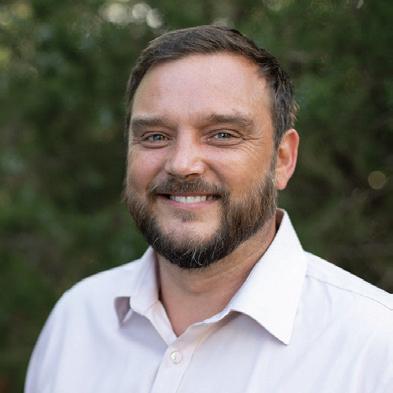
At every leadership call, every town hall, we have the same message reminding people that it’s okay not to be okay.”
—Bjorn Reynolds, CEO, Safeguard
“In this market, you really have to be values-based because people can go somewhere else. It’s really not just about the money.”
—Tecla Palli-Sandler, CHRO, CapGemini
offerings is simply a sense of purpose around the work they’re doing, says van Eys. “That’s something I’m hearing a lot—people are looking for the companies where they can feel like they’re making a difference, that their voice is heard, that their company cares about them as a person, not just as a cog in the wheel.”
Dye says connecting purpose to the work stemmed some of the burnout at his flour mills, where turnover has been the highest. He instituted a “Donuts with Dan” program, where he meets with new plant hires. “It’s a chance for me to welcome them to the company and just tell them a little bit about our vision and our values, and the importance of the work they do to produce these critically important food ingredients that help to feed people every day,” says Dye. “Because when people really start to understand our values and the vision and mission of the organization, the why of the work that we do, that tends to get a little bit greater stickiness.”
Like any initiative you want to stick, it can’t be a one-and-done exercise or a program that the whole organization isn’t on board with. At Safeguard, a provider of global payroll and employer of record services, managers are now given specific training on how to connect with remote employees and, if needed, recognize the signs of distress and burnout virtually. They’re also trained “to have some of that emotional intelligence that’s needed to be able to support their teams through,” says CEO Bjorn Reynolds. “At every leadership call, every town hall, we have the same message reminding people that it’s okay not to be okay.”
Miller notes that his company has bumped EQ high on the list of criteria for hiring. “All our hires in the past three years have been culturally relevant first, competent second. You can teach people the job, but not the culture.”
CapGemini walks the talk by including “compassion, integrity, empathy and inclusion” as leadership competencies that impact executive pay. “Our CEO, Aiman Ezzat, has put talent front and center on everyone’s agenda, so it’s not squishy for us,” says CHRO Tecla Palli-Sandler. “In this market, you really
have to be values-based, because people can go somewhere else. It’s really not just about the money.”
CEOs also need to make sure middle managers are on board; if not, then regardless of what the chief says, the initiative likely won’t take off. When Riddle, for example, measured participation rates at Howard’s yoga and meditation sessions, he noticed that after an initial bump at the beginning, attendance fell off significantly. He asked HR to solicit employee feedback and learned that while employees appreciated the offering, “they didn’t feel like their department manager or local leader really endorsed it,” says Riddle. “So we discovered we had to start urging and teaching our department heads or store managers, ‘Hey, you need to participate. This may not be your cup of tea, but why don’t you show up—you may like it. And sometimes, as a leader, you have to help people embrace things.’”
Given that most companies are still working out their offerings, those ahead of the benchmark will have a competitive edge in a cutthroat talent market and good return on the investment. “Expectation [from employees] has lifted to a new level we haven’t seen before,” says Reynolds, noting that retention will require an investment in wellness. “If that means it shaves a point or two off of your profitability, then so be it. All I can say is, last year was a very successful year for us from a commercial perspective.”
For those worried about the focus on mental health and wellness dissipating once the pandemic recedes, Etheredge says that it’s not going anywhere. “The one silver lining of the pandemic is that mental health is finally moving out of the shadows and into public discourse,” he says. “Companies have realized that neglecting mental health is simply not an option anymore, and that the attention and resources given to address it are here to stay.”
Depression alone is estimated to account for $44 billion in losses to workplace productivityCEO PE SUMMIT
Portfolio company CEOs must master every leadership hurdle their public company peers face—all at breakneck speed while under intense investor scrutiny. Gathered for Chief Executive’s two-day PE-Backed CEO Summit, PE leadership veterans and experts discussed tactics for addressing the unique tensions of the role. Some takeaways .
THE PRIVATE-EQUITY MARKET has been white hot, with an unprecedented volume of deals and stratospheric valuations that have transformed PE-run companies into a powerful collective force driving the U.S. economy—about 6.5 percent of GDP in 2020, according to EY. What investors and the CEOs working for them want to do now is extend this phenomenon—and not get burned.
“In many ways, private equity has become an alternate channel to older, publicly held companies and has grown and grown over the years,” said Fred Hassan, a director of Warburg Pincus, former chairman and CEO of Schering-Plough, and a master of the practice of PE. “There’s even a debate whether PE produces better returns, but clearly it strives to be a high performer now with a much greater degree of accountability.”
For example, Kiley Wright-Ford turned the Reputation Institute around over the last three years under PE firm Catalyst Investors, transforming the business model, launching multiple patents, doubling the growth rate, adding many clients and rebranding the company as RepTrack.
Hassan and Wright-Ford recently addressed CEOs from across private equity at Chief Executive’s PEBacked CEO Summit in New York City, joining other speakers in sharing insights and answering questions about how chiefs can improve the art and science of running a company owned by PE investors.
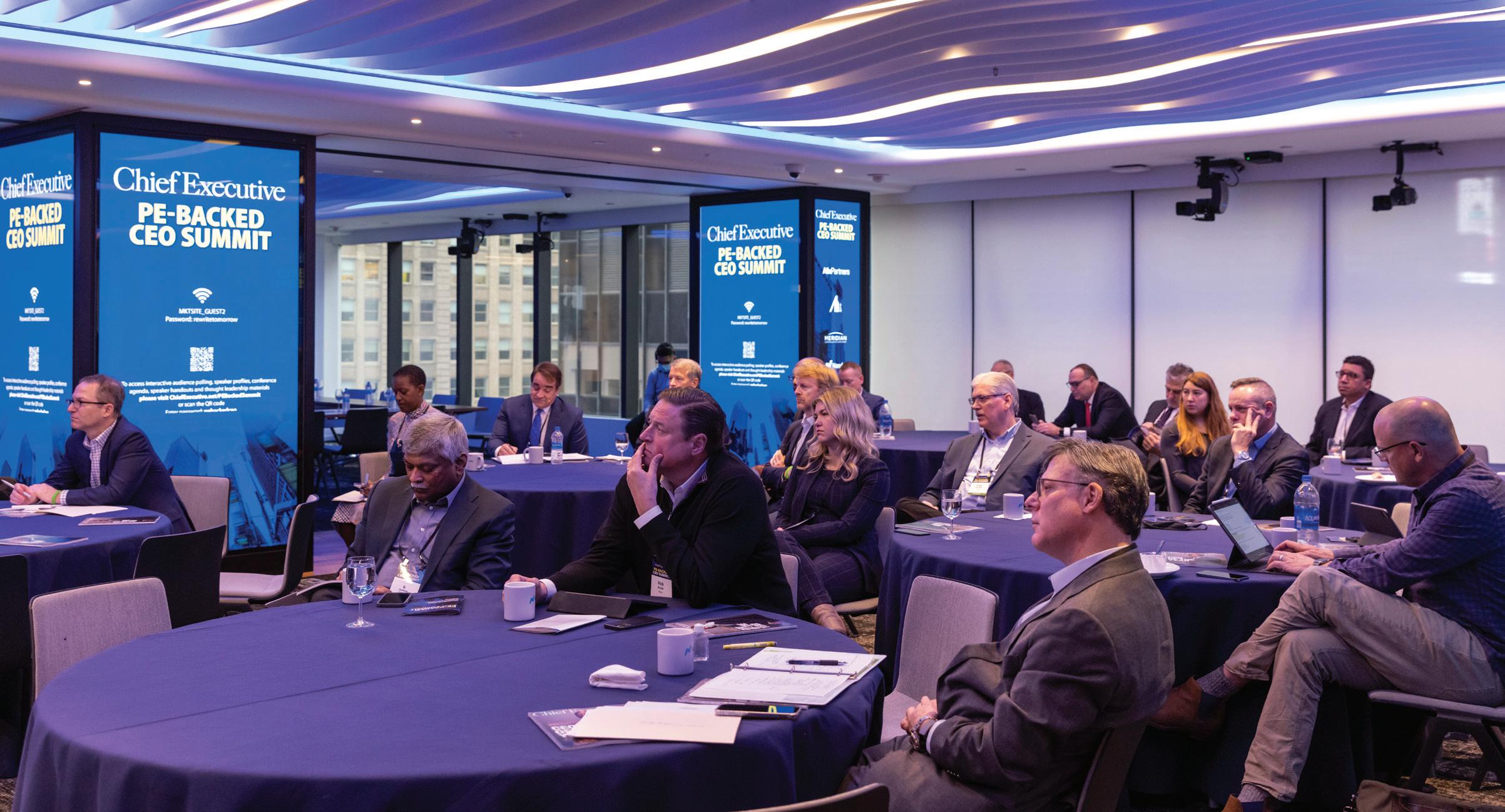
Here’s some of what they said:
THE CONTINUING PE BOOM, a talent crunch at the top, economic stresses and other factors are roiling compensation for CEOs at PE-backed companies. Ryan Harvey, co-managing partner of Meridian Compensation Partners, offered advice for a couple of areas in which the market is changing:
Transition to an IPO: “This is an area that’s gotten a lot of attention in the last couple of years because there’s been such a hot market for IPOs and SPACs. Once a company gets closer to an IPO, they have to think through the governance structure, including stricter compensation-committee rules. “The biggest design issue is the equity plan. The big change as a public company is that it will start granting equity every year for at least some group of employees. So who will participate in the new plan? When do the grants start? What is the design and size?”
Cash is king: “There had been a willingness for [CEOs of PE-backed concerns] to take less cash. But now the pressure is there where firms are having to pay market-level cash compensation just to get talent in the door, in addition to the equity opportunity.”

FRED HASSAN SPENT MOST OF HIS CAREER building tremendous value at publicly held pharmaceutical companies including Schering-Plough, Pharmacia and Wyeth, then took his accumulated wisdom into the PE world as a director of Warburg-Pincus, one of the world’s largest PE firms.
In a wide-ranging interview on stage, he delivered gut-level advice to the CEOs and plain talk on the status and future of private equity:
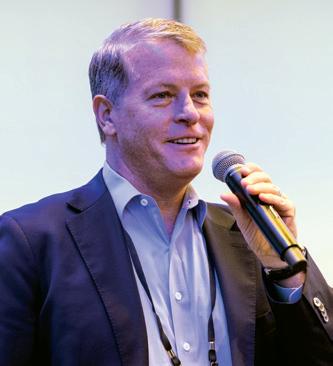
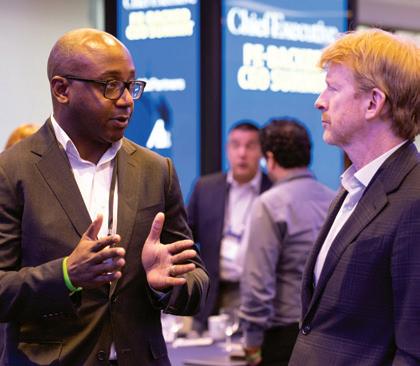
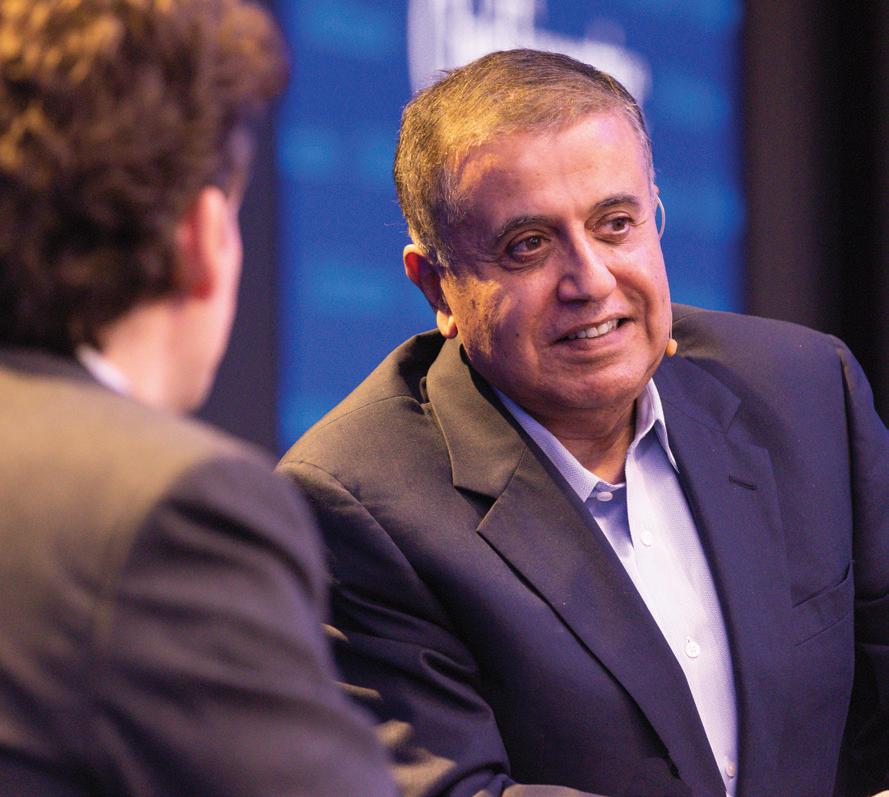
The CEO’s role: “Get to the hearts and minds [of employees]—that’s ‘heart’ with a capital ‘H.’ Show them you’re an authentic leader, even if they don’t report to you.
“As an insider, your ultimate loyalty is to shareholders: You’re their ambassador to get the most value, and they put their trust in you. That’s the basic duty of loyalty you have, which means that any asset is essentially for sale if someone comes in with the right value for it, because that’s what shareholders would want you to do…
“What is it in the PE context that separates truly great from just good CEOs? In private equity, it’s urgency, decision and action. It’s easy to get caught up in big analyses and strategy sessions and brainstorming sessions, but PE CEOs distinguish themselves by having a sense of urgency and passing it around to people around them.”
The expectations game: “CEOs by nature tend to be optimists. [But] PE investors most likely have paid a premium to get the assets, and it’s important to manage that very carefully. Be blunt about what the real number looks like, but [say] that you’re stretching for a certain number. Make them understand that with authenticity and trust so that they believe you.
“But explain why there might be a stretch, why there might even be a downside. The probabilities. And give them the ‘why’ so they trust you more. It’s amazing how much can be unleashed if you do the right things in the first and second year as opposed to short-terming it too much…
“And as you explain to [potential buyers] about the journey, tell them the original dream and all the difficult times you’ve encountered [and] about the ‘eureka’ moments. Explain how this [company] will become an even better asset down the road, in theirs or someone else’s hands. That’s how you get the very elegant multiple you’re looking for.”
The primacy of customers: “How do you keep maximizing value? Have an intense focus on customers, because customer intimacy is the real thing for next-generation CEOs. And remember that customers can change too…
“If you’re a contract-based company, you want customers to become good references for you too. CEOs should take a lot of interest. You want them back, and you want them saying good things to others.
“Relating to CEOs can be a huge help [with customers]. Find ways to be in touch—whatever works.”

The first 100 days: “Certainly, let investors know you’re in charge; calm things down. But don’t create a sense of false expectations. Listen and learn and understand what the problem is. Spent time with people, and not just with direct reports.
“Patterns will start to emerge. Also, survey people: How do they see the world? Can they win? Is it safe to speak up? Simple questions. It’s surprising what you’ll learn. For instance, if people are afraid to speak up, how are you going to win as a company?
“Share the information with those who are watching you, especially the board. When they bring CEOs in, board members often have their own solutions in mind. Many of them are ex-CEOs and think they can solve the problem very quickly. Show them the true picture.”
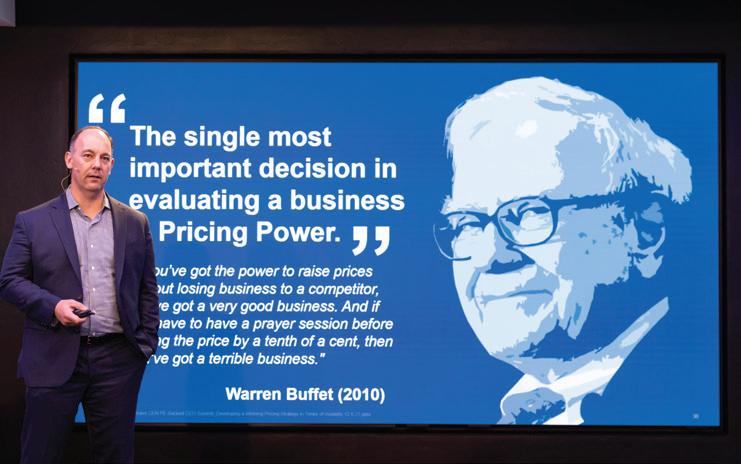
MANY CEOS held the line on prices during the low-inflation environment that prevailed. But in today’s inflationary times, they need to learn—or relearn—how best to boost prices.
Brad Soper, a partner in the consulting firm Simon-Kucher & Partners, shared pointers for today’s new era of pricing:
Get what you deserve: CEOs grew accustomed to throwing in goodies—improved customer service, IP in products and so on—for nothing. “There’s a lot that you and your companies do every day to deliver better value, but when you think about the trade-off, the value capture, the money you keep at the end of the day—is that balance right?”
Harvest what you post: Even when they increase prices, Soper said, “companies aren’t very good at getting” the hikes. Surveys have shown two-thirds “don’t even achieve half of the price increase they went after. They might not have lost volume, but in a world of inflation of four to five
percent, you have to shoot for [price increases] of eight to ten percent if you really need three percent.”
Make pricing a priority: “You can actually get ahead of this. Prepare, communicate price increases and monitor them in the background. Provide incentives to go after them… If it isn’t the topic of regular executive meetings, and a standalone topic, you’re not focusing on the right things.”
Try these tactics: Target certain “customer groups and product categories” first. Start “inserting annual price escalators, or adjust prices in new contracts.” And “create a shiny new object, sunset the old one and force migration to the new one.”
MANNA PRO MAKES FOOD AND treats for animals ranging from dogs and cats to backyard chickens, and its sales exploded during the pandemic under the ownership of PE giant Carlyle Group, which purchased Manna Pro in turn from PE leader Morgan Stanley Capital Partners in late 2020.
John Howe, CEO of the St. Louis-based outfit with about $70 million in annual EBITDA, explained his seven-pronged program for success:
Root your culture in values: Also, “connect those values to the company’s greater mission and vision,” he said. “And connect those tasks you’re doing every day in a way that’s consistent.” Manna Pro’s culture, Howe said, “is the primary reason PE firms want to partner with us.”
Emphasize urgency and value creation: “Time is of the essence in a PE-backed environment. You need to constantly prioritize and push hard to make big opportunities happen as soon as possible. Make it part of your culture.”
Align PE and the company: “What’s good for the PE group must also be good for employees in the company. At the beginning of the relationship, codify [alignment] in various agreements.”
Make more people owners: Expanding stock options “can be very effective to drive alignment and enterprisewide thinking,” Howe said. “It gets people focused on the goal at hand.”
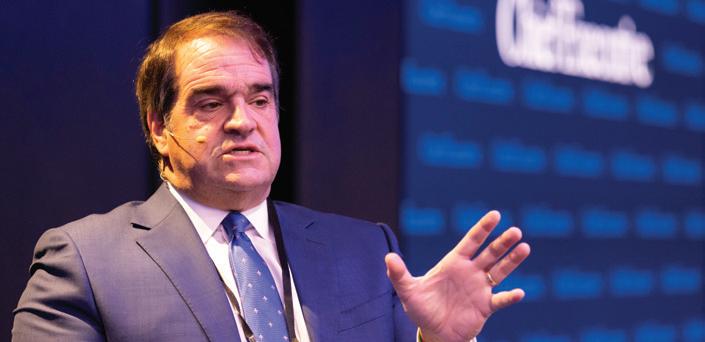
Collaborate on the vision: Get employees on the same page with management about “how the company gets from where they are to an aspirational vision of three to five years from now,” he said. “There should be clarity around these initiatives.”
Encourage owners to embrace the culture: “Demystify” PE owners and employees to one another. “Maybe the PE team even can be a culture carrier in its own right and with the same words that the leadership team tries to communicate,” Howe said.
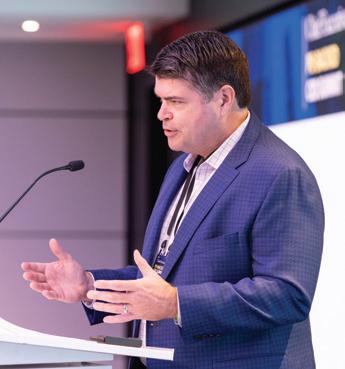
TED BILILIES, chief talent officer of AlixPartners, urged PE CEOs to keep talent at the top of their management agenda. “Growth is No. 1 for you, but talent is No. 2, No. 3 and No. 4,’ he said. “To grow, you need talent.” His advice: Prioritize culture: “I remember when PE was just financial transactions; then operational improvements; now, it’s how we harness the human capital to create value, and that becomes the value-creation lever…
“It’s on the CEO’s shoulders that you need to connect what the employee does and how they connect to a greater purpose and mission. [Because] connecting a job or a business to a higher mission is now table stakes…”
Appeal to younger generations: Millennials and Gen Z members comprise 46 percent of the U.S. working population, and “they’re not going to respond to traditional leadership styles,” Bililies said. “They want an emphasis on diversity and inclusiveness. They want to know that CEOs and leaders are paying attention to ESG issues.”
Consider a style shift: “As organizations become flatter, and the command-and-control CEO is yesterday’s news, they need to be able to persuade and make their case with a growing number of stakeholder groups. And do that with an abundance of feedback.”







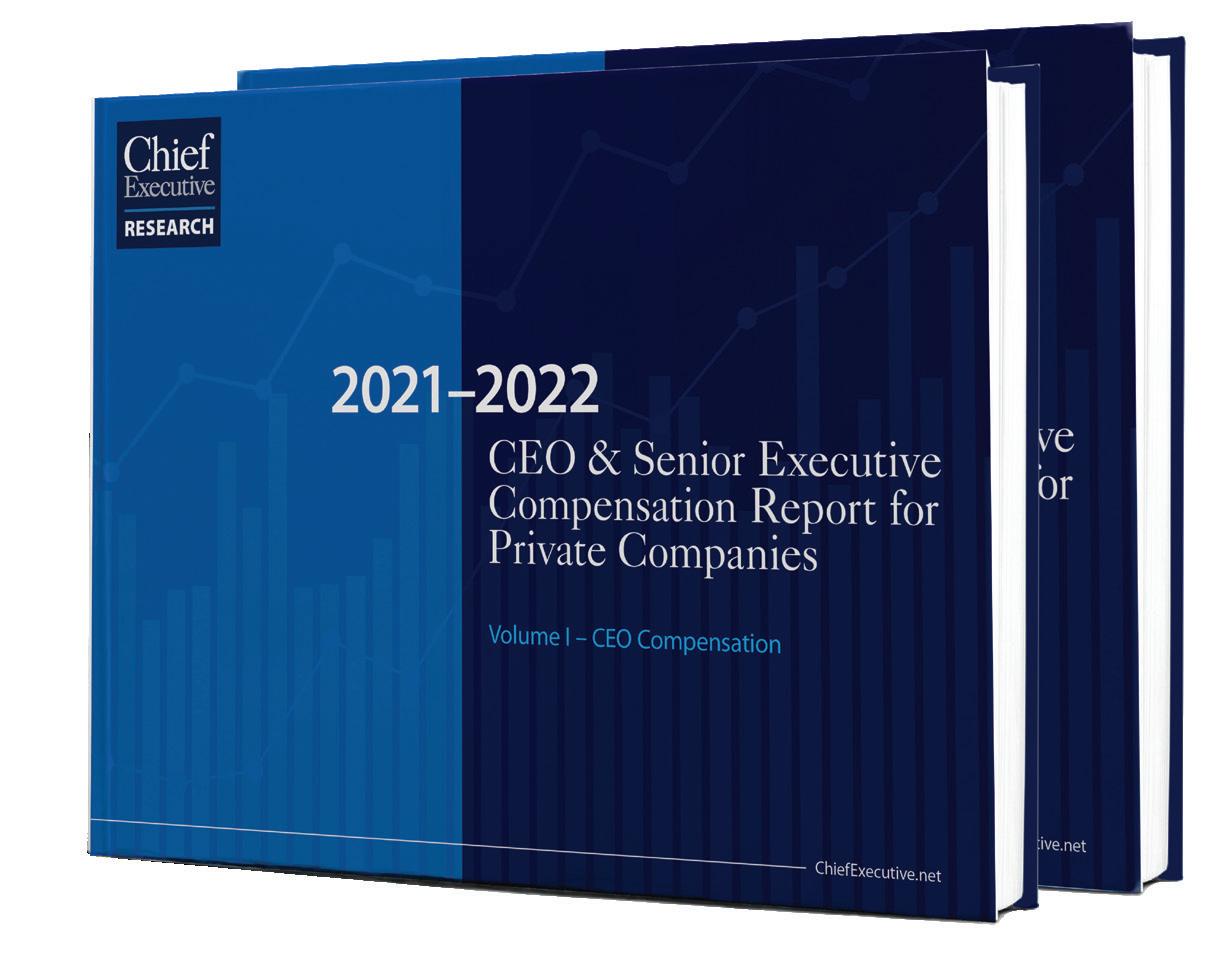
WHETHER IT’S AS SIMPLE AS a new kind of winglet or as complex as a safer parachute system, today’s private aircraft offer exciting features that are coming along at the same time that there are more passengers to appreciate them than ever before.

Charter-booking apps have already proliferated to the point where they’re practically commodities. Other upgrades, such as Starlink (Elon Musk’s satellite-based, high-speed internet service), are still years away from routine service on business jets, while new types of aircraft such as eVTOLs (electric vertical takeoff-and-landing) are just now starting to appear on tarmacs. Plus, there are plenty of new technologies and even entire planes that are lighting the afterburners of people in the industry right now.

Here’s what players in business aviation are highlighting these days:
Size matters: One trend produced by the evolution of business aviation during the pandemic was greater demand for longer private trips and bigger and better aircraft for making those journeys, across America or overseas. Gulfstream, for example, has introduced the $100 million G800, its longest-range aircraft yet, with the capabil-
ity to travel 8,000 nautical miles without refueling. It seats up to 19 passengers in four living areas, or three living areas with crew compartments, and deliveries are set to commence next year.
But some industry veterans wonder if customers for such aircraft may be frustrated by the lack of an improvement in cabin dimensions of the same magnitude as the range boost. “It’s not going to be that comfortable, but there is the primary convenience of not having to stop anywhere and just be able to go where you want to go,” says Ken Qualls, a veteran Gulfstream pilot and president of industry search firm Flight Management Solutions. “At that price, we might see people just paying another $100 million and buying an airliner.”
Unprecedented connectivity: The enthusiasm about 5G cellular networks on the ground is being matched by anticipation that the high-speed new technology will revolutionize airborne communications as well, with aircraft-interference technical issues expected to be cleared up soon. Already, the industry can boast connectivity levels that in some cases rival those in commercial airliners.
TOP: Tamarack’s Active Winglets cut noise pollution and boost fuel efficiency, says CEO Jacob Klinginsmith.
Innovations are making private aviation easier to access, more efficient, faster and more comfortable. What’s not to love?
DALE BUSS
“Now you can view movies and short TV shows and get texts and emails and use your phone on private planes,” says Chuck Suma, COO of Million Air, a fixed-base operator with more than 30 locations. “The tech is at the point now where you can’t tell whether or not someone is on an airplane, making the airplane more of a business tool. And if it’s personal travel, families can integrate whatever apps they have for use on the plane, like Hulu or Apple TV.”
Need for speed: While the pandemic produced a step-change increase in demand for, and participation in, private aviation, a greater urgency for fast travel came along with the new customers. That is producing more demand for seats on the quickest aircraft, even if they’re older and not as fuel-efficient as some fresh models, meaning a new lease on life for small Beechcraft and mid-size Citation X jets, now both made by Textron Aviation. It’s unclear whether higher jet-fuel prices in the wake of the war in Ukraine will affect this trend.
“Post-pandemic, we’re seeing a lot more businesses fly their executives private than previously,” says Chris Bull, CEO of SpeedBird, an air-charter service based in Orlando. “There’s an element of urgency to minimize their time out of the office and to reduce non-useful work time, and they can pick up 45 minutes or an hour per trip. You can hold a series of meetings in Illinois and be back in Florida for lunch.”
Smooth sailing: Private jets are less susceptible to the turbulence that commercial jet fliers experience, but it still happens. That’s why many in the industry love the Praetor 600, the only aircraft in its category with anti-turbulence reduction built into its fly-by-wire technology. The Embraer-made jet dynamically smooths out the ride, making turbulence much less noticeable.
“This system is extremely reliable compared to traditional flight controls,” says Joseph Salata, senior vice president of operations for Flexjet, a provider of fractional jet shares and other flying arrangements. “The redundancy in the system includes multiple backup components to power the flight con-
trols, which is seamlessly adopted by pilots.”
Giving planes not only smoother flights but also other advantages are a new generation of winglets—those perpendicular surfaces on the tips of wings that have been around for a century. Tamarack Aerospace introduced what it calls Active Winglets, which extend an airplane wing and feature a small surface that can move aerodynamically, providing what the company says are double-digit-percentage improvements in fuel efficiency as well as more stability. Active Winglets also cut noise pollution by up to 15 percent, the company says.
At a cost of about $230,000 for instal-
lation on a Cessna CitationJet M2, for instance, “we have 150 business jets with our product on already, across eight models, installed as retrofits,” says Jacob Klinginsmith, Tamarack’s president.
Safety enhancements: Cirrus Aircraft introduced new versions of its SF50 Vision Jet and G2, but even the original models approved for flight several years ago offer a reassuring focus on safety. In the event of engine failure, the Cirrus Airframe Protection System can be activated with a handle located between passenger oxygen masks.
And while these are single-engine, single-pilot birds, if the pilot is incapacitated or unable to land the aircraft, a feature called Safe Return converts the Vision Jet into an autonomous air vehicle. Garmin’s Autoland system kicks in and uses all
Companies like Constant Aviation say jet owners are looking for interiors that reflect today’s design trends.



NICHOLAS AIR Founder and CEO NJ Correnti coupled Southern charm with discipline and drive to build one of the nation’s largest charter operations.
TIME FLIES WHEN YOU’RE HAVING FUN, or so they say. At NICHOLAS AIR, business revolves around those very two things—time and flying. As the national private aviation company’s founder and CEO, NJ Correnti’s mission has always been to enable customers to gain back valuable hours in their days, be that to attend a child’s soccer game or to get into town for the next business deal. It is a complex and ever-changing environment, complete with regulatory changes and shifting market factors, but the constant that Correnti has never shied from is having quality people by his side.
The end result? A customer base that is undeniably passionate about the brand and the quality of the personal relationships they have with the team. Headquartered in Oxford, Mississippi, NICHOLAS AIR blends elements of Southern hospitality with pure business acumen to create a program designed for what Correnti calls “the most refined set of private flyers.” This was no accident. During 25 years as an investor and business owner across the aviation, industrial, logistics and media industries, Correnti meticulously applied experience and knowledge gleaned from his father, the late John Correnti, to lead his brands to success.
Without question, a fierce storm constantly churns in this man’s mind. Calm and composed and often unassuming, Correnti remains outwardly calculated and poised. Yet, he is constantly measuring how to make the most of today’s opportunities while simultaneously thinking about those that lie ahead.
Correnti can be labeled many things: a Mississippi man, a family man, a Christian, the founder and CEO of NICHOLAS AIR and a serial entrepreneur. While those labels are accomplishments on their own, they speak mostly to what he does, while “who he is” and “why he does it” are far more interesting.
Although born in Utah, Correnti presents as Southern: the drawl, the boots and the way his gaze lifts at the prospect of dogs on point in the South Georgia woods. It’s that last bit that brought that raging storm to a temporary halt when he and some great friends and clients gathered recently at an idyllic hunting camp along Georgia’s Flint River, known as Riverview Plantation. Even with his iPhone never far from reach, it was a welcome respite from the controlled winter holiday chaos that comes with involvement in several businesses (jets, steel, silicon, real estate and media), a heavy travel schedule, board meetings, family events and even the happy babble of a five-month-old back home.
Friends had traveled from all over to be a part of this experience, drawn to Riverview for a soul-lifting break from their busy lives—lives that were not easy to escape due to work, prior commitments or family responsibilities at home. During the break, more than a few quails were harvested, but the trip would be most remembered for the laughs, the stories told into the late hours of the night and the lasting friendships created.
For Correnti, the appeal of Riverview is partly nostalgic. Everyone has places in this world that strike a certain emotional chord. Without a doubt, Riverview does that for Correnti, as not only one of God’s brilliant works of art, but also a place where he shot many a bird with his father, who was a leader in the American steel industry.
A simple online search can reveal a day’s worth of reading on John Correnti, much of which boils down to a few simple truths: He was a visionary and a pioneer, who cared deeply about those under his direction, motivated everyone around him and refused to be outworked. Above all, this “man of steel” was passionate about relationships and treating his people well, whether they were the the janitor or the general manager of a Correnti-run steel mill.
That philosophy became a pillar of NJ Correnti’s life. With a front-row seat to how his father ran his life and business, Correnti soaked up that knowledge, massaged it into his own style and created a business that will not only provide for his family but also take care of many generations down the line. What’s more, Correnti’s children have a sterling role model in their father, a man bent on practicing the principles he learned from his own: Work hard, be firm but fair, be good to people, praise the Lord and when you shake a man’s hand and look him in the eye, live up to your word. All are concepts that Correnti seeks to foster in everyone around him, ensuring that the Correnti family legacy lives on.
With all the factors that go into running multimillion-dollar businesses in often-volatile industries, there are days where stress runs high, acknowledges Correnti, who shrugs off the challenging times as part of the journey. “Of course there are many nights of lost sleep, but my motivation comes from providing for my family, being known as the best at what we do and being a great example for my children,” he says, noting that his faith sees him through times of doubt. “God is number one, and carrying myself and our businesses in a godly manner means maintaining the faith that He will get you through it in the end. The way you greet someone, the way you look after your family and friends, they are all key components to a good Christian life. For my family, that’s very important.
“For my business, it is as well,” he adds. “We employ people who work hard, carry a great moral compass and share the same value set for the way we do business in the South.” Correnti oversees a team dedicated to ensuring that every detail is taken care of for their clients, no matter how big or small. While NICHOLAS AIR’s customer base stretches from the Atlantic to the Pacific, the team members extend Southern hospitality in every interaction. Treating each exchange as if they were talking to a member of their own family creates a sense of home for them.
Correnti also surrounds himself with people who share his passion and vision, and who challenge each other for the betterment of the customer. “I spend a great deal of time on the road, and what I am most proud of is how well random acquaintances who don’t know me at all speak about our people,” he says. “My father taught me long ago that if you surround yourself with great people, you get great results, and that’s exactly what we’ve seen at NICHOLAS AIR. I go to the office each day thankful for the employees we have, the reputation that they built for our brand, and I’m incredibly proud of what they have done to make our business shine. Our members take the time to tell others about their service and refer them. As a business owner, I can’t think of a better compliment than to hear customers share their stories of what great people we have and tell their friends to follow suit.”
Dedication to service excellence, both inside and outside of the organization, is at the root of that success. On a daily basis, Correnti reinforces to his team the value that the customer brings to his companies outside of just the transactional nature of purchases and revenue. At a personal level, he encourages his team to ask customers what they want and then guides the business toward incorporating those desires. It’s an approach that stands out in a world that views supply chain and staffing challenges as scapegoats that justify delivering a lesser product. Correnti sees it differently: “The quality of the product can never erode, no matter the obstacles in front of you,” he says. “You make a commitment to your customer and to your people that you will deliver the best product you can to the market, and you simply cannot waver from it.”
Decades of hard work forged by family traditions and teachings have rewarded Correnti with not only material success but also the ability to make a positive impact on the lives of those around him, be it family or the hundreds of employees under his wing. It’s a greater responsibility that he bears to ensure that the family name his father built across the South stays synonymous with strong ethics, Christian values and a pride for the relationships you build. Complacency is not an option at NICHOLAS AIR—and never will be. There is an evolution that comes with each day, each new opportunity and each ring of the phone. It’s that evolution that creates the storm, and in the mind of NJ Correnti, that storm will always rage on.
The quality of the product can never erode, no matter the obstacles in front of you.”
NJ Correnti shares insights on his business philosophy, his influences and his approach to getting the most from his team, as well as his perspective on ensuring that NICHOLAS AIR’s sterling reputation continues on for years to come.
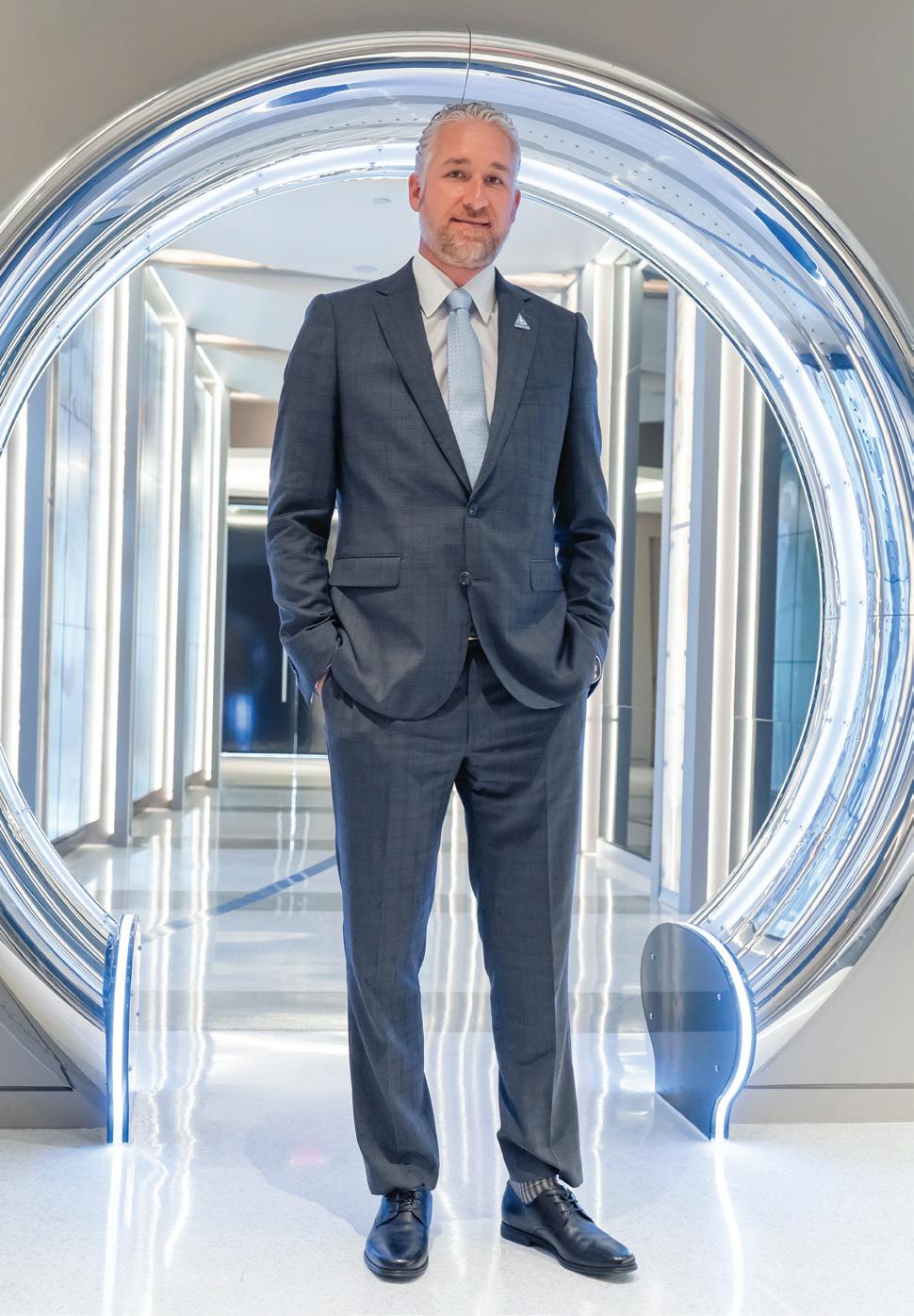
You’ve built businesses with a track record for both sustainable growth and successful exits—two goals that often elude CEOs. What is the secret to that track record? It’s the old saying “no risk, no reward,” but when taking on new risk, you want to ensure you surround yourself with a good team to navigate those uncertain times. Anyone can create a vision. The key is having the proper team to execute it. Surrounding yourself with people smarter than you is what makes your vision a reality and not an illusion. There is a distinct difference between companies who succeed and those who don’t. In my experience, you must balance the need to be responsible with the need to be opportunistic. This is precisely the place where a great team at your side proves instrumental. The exchange of ideas and the varied skill sets allow for each person to help shape the way a vision becomes reality.
NICHOLAS AIR has grown to arguably be one of the most respected private aviation companies in the world. What do you feel has been the biggest catalyst to the sustained growth of that brand?
Customer service. Customer service. Customer service. Take care of your customers, and they will take care of you. Your service culture is an extension of the promises you make to your customers when they come into your program or your company. Being able to back up those commitments each day, while simultaneously letting your customers know that their feedback is welcome, received and instrumental in the service culture of your brand. The reputation that our team at NICHOLAS AIR has earned over the course of our history is a direct result of the amount of work we put into creating personalized relationships, backed by a quality level that I believe is unmatched in the space. It means that with every experience, our customers can actually touch and feel our commitment to excellence.
Your father, a luminary in the American industrial landscape, was known for his ability to blend the needs of the people with the needs of the business. What did you learn from John Correnti that you draw on as a business leader?
Those lessons influence me every day. My entire organization is unique compared to other companies in the avia-
tion sector. From our compensation packages to our lean workforce, I adopted many of the philosophies that my father used in manufacturing. Hire one worker to do the job of two and incentivize them very well, while providing them with the best tools to do the job. This philosophy becomes more challenging every day with the millennial generation. However, it still yields hard-working men and women who take ownership and pride in their work.
How much do you pull from your industrial learnings and apply to the ultra-luxury world of private jets? Aviation is very different from the industrial sector. It is arguably the most complex and regulated industry there is. I ask myself all the time, “Why be in such a challenging industry full of red tape?” I guess it’s because I like a challenge. It’s always gratifying when you can bring the missing piece to solve the puzzle. Regardless of what line of business you’re in, your customers demand quality, they demand integrity, and they demand results. While aviation and industrial sectors are wildly different in many respects, they are also both process-oriented and require the utmost attention to detail in the name of safety and in the name of preserving the quality of the product.
How actively engaged are you in the day-to-day operations of NICHOLAS AIR?
It’s important for any CEO to be involved at all levels. It doesn’t matter how big or small the company. You need to know what your people are doing and how the processes work, and let them know you’re holding them accountable. I am very old school. My senior-level team and I wear coats and ties to work, and we expect everyone to show up on time and be ready to combat the challenges the day holds. Perhaps more important than that, our team walks in the door each day knowing that senior leadership will be right there by their side, battling the challenges with them. Many senior executives draw a hard line between “working on the business” and “working in the business,” but our leadership team does both. Throughout each day, I see our top executives working with their teams to mentor, inspire and be a supporting wing for whatever topic is at hand.
The dominant theme in business right now that everyone seems to be struggling with is talent. How have you dealt with that in your businesses? Today, your typical employee wants “quality of life” over pay and opportunity. However, they don’t know what that means. Having a great-paying job that challenges you daily equates to quality of life. I mean, how can you have quality of life without a paycheck? How can you support your family? Work provides you with a means to quality of life, and challenges provide you with growth opportunities.
Your companies have been predominantly based in the South. Is there a natural draw to this region for you? Why would I want to be in a New York skyscraper paying 10 times the amount for office space when I can do all of the same in the South at a fraction of the cost? Together with a great pool of hard-working men and women to pull from, it has proven to not only be a recipe for success but also a recipe for corporate responsibility. The South is one of the best, if not the best, places to do business, and over the next several decades I believe you will see more and more business making that transition. Actually, when I look around at our company, the majority of our workforce has moved here from the larger cities, the Northeast, the Midwest and other major metro areas.
You created your own VC firm, Corr Ventures, and dipped into the world of big media and marketing through Piper Ranch Media. What was the catalyst for seeking those opportunitiess?
Investing, starting and operating businesses is fun. It’s a challenge, and if I am not challenged, I am not growing, and if I am not growing, I don’t have a purpose. Through Corr Ventures, we remain on the cutting edge and retain the ability to get involved in businesses that are both tangential to our companies and show great opportunity. Through our media brand, we work with many brands who look to our templates for corporate strategy and branding and look to replicate the type of success they’ve seen from our companies. Strategically partnering with entrepreneurs and other brands reinforces our commitment to growing business here in the South for all while giving our partner companies the platform they need to achieve the hypergrowth they seek.
Your primary focus is clearly on the private aviation world though—have you felt a major shift in that business over the past 36 months?

We’re seeing unprecedented demand. Unfortunately, the supply chain issues our government has fabricated makes managing that growth difficult. In my opinion, the decisions made around Covid created more damage than the virus itself to American business, and I truly believe that in any such scenario, the solution should never be worse than the problem. Despite the challenges brought on by the pandemic, we never pivoted or changed course. One benefit of our team at NICHOLAS AIR is the amount of experience we have in the room. With over 125 years of aviation experience, we gathered early on and kept our conviction to stay the course during a time when our major competitors hit the pause button and retreated. We kept forging ahead, we kept with our planning, we kept with our analysis of the industry intact, and we saw great stability and growth as a result.
Your company has gone through, and come out of, some significantly low periods in global economics. How did you navigate those crises?
Adapt and overcome. I have always refused to let what is happening around me define me. The same goes for my business. Growing with responsibility means that we never overreached prior to those key events, which meant that during those challenging times, we never felt over-leveraged. The economics have to work before, during and after in order to avoid the impacts of world events, but it takes a great deal of analysis to ensure you remain insulated. I believe that the way we’ve grown our companies has allowed us to never live beyond our means and ride out some of those troughs in global economics.
“I have always refused to let what is happening around me define me.”
available resources to find the nearest suitable airport to land safely. “Safety always has to come first in this business, and these are innovative and exciting features to address that,” says Joey Smith, aviation lawyer with Cassel Salpeter.
Overall, the safety technology “and situational awareness being made available to pilots today is unbelievable,” Suma says. Bottomless information is now accessible by business-jet pilots, including weather maps, windshear-prediction algorithms and information on alternative airports. All of this is being accomplished in new models and retrofits of older planes while also saving dozens of pounds per swap as old computer servers are replaced with lightweight new ones. “Think of taking a very large iPad and sticking it on your instrument panel to run your avionics,” Suma says. “That’s how planes are being flown now.”
HGTV in the air: The growing ranks of business-plane owners are demonstrating a zeal for decorating and redecorating the inside—and sometimes the outside—of their planes. “Everybody’s got their own personalities and decision-making processes, so it makes for a very interactive experience,” says Kevin Dillon, president of Constant Aviation, a maintenance, repair and operations outfit based in Cleveland.
Both corporate and individual plane owners display many of the same interior-design preferences in the air as on the ground, such as a preference for grays, beiges and neutral tones. “Then you get people who are a little more design-centric and want a Pottery Barn tufted couch,” Dillon says. “There’s nothing really that can’t be done.”
Constructing “sustainable” traveling spaces is important to more customers, too. Aircraft makers are adapting, including Bombardier, which “now is going way down the food chain to make sure all of its products carry environmental-product declarations,” says Doug Gollan, founder and editor of the Private Jet Card Comparisons buying guide.
Hardier materials: The interiors of the finest business jets have long sported
exquisite finishing materials like those in the most expensive automobiles, such as cherrywood and walnut veneers. But the rise of charter services hasn’t been good for plane interiors, because passengers tend to treat rental jets like they do rental cars, meaning more frequent repairs to furniture and fixtures—often time-consuming to complete.
Enter outfits such as flyExclusive, a large private-jet operator in Kinston, North Carolina, that does its own refurbishments and has turned to highly durable, matte-finish materials for tables and trays that are extremely difficult to scratch. “They’re like something out of a condo in Miami,” Gollan says. “They’re more or less indestructible.” And flyExclusive can swap in a fresh set of fixtures in a matter of hours rather than days.
Better booking apps: Programs that book seats on private aircraft have proliferated like an in-the-clouds hybrid of Uber and Airbnb. However, gaps in the system that continue to prevent the creation of a “perfect market” for renting private flight space like the one that now exists for car-sharing. New York-based FlyBLACK is one of the latest generation of flight-booking apps that intends to eliminate the remaining white space. The startup on-demand charter company invested more than $250,000 to develop a software platform that charters empty legs and seats on private aircraft trekking the most-frequented routes in the United States.
“This is an incredible opportunity, because two-thirds of private jets are empty at any given moment because they are repositioning,” says CEO Sami Belbase. “And on the most popular routes, you have the most empty legs. Some of them get sold manually, but that’s not scalable. We have created an entire business model around these empty legs by harnessing and consolidating them and putting them in a centralized platform.” CE
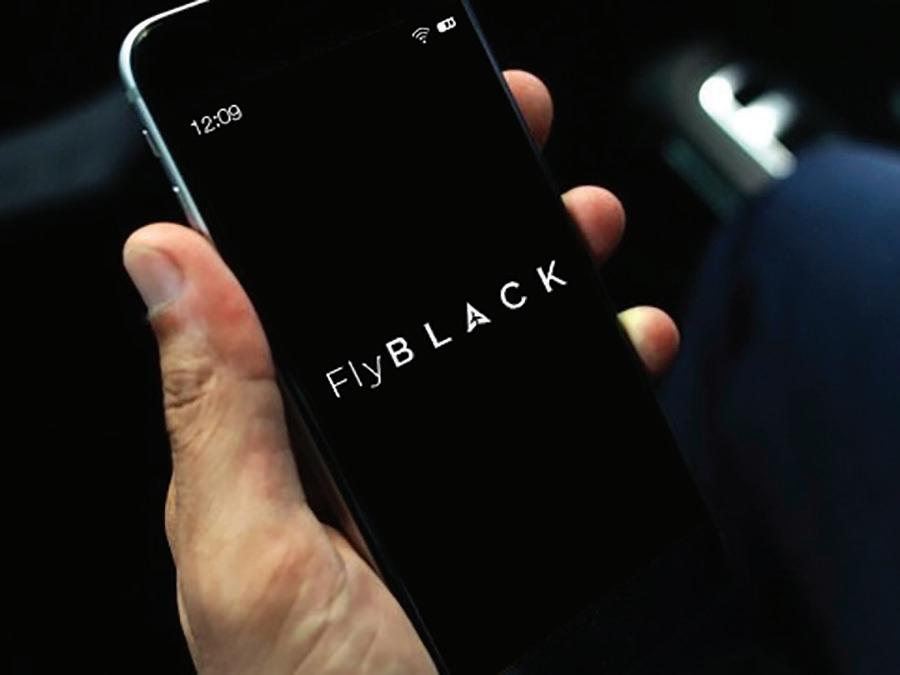
CEO Vladimir Gendelman’s employees in Ukraine were shelled and shot at, and witnessed unimaginable horrors. Here’s what he did about it.
TOLD TO DAN BIGMANWE HAVE SEVEN EMPLOYEES IN Ukraine. In March, four of them were in Kharkiv [near the Russian border]. One was able to leave early on. Three stayed behind through the bombing, the devastation. We messaged and talked, mostly on WhatsApp but also on Slack, Skype and Facebook Messenger. As I talked to them, I heard rockets coming down, destruction going on. They were there with their families and kids and wives in apartment buildings. There were no bomb shelters.
When the sirens sounded, they and their families would go in the hallway and lay on the floor because that’s the room with no windows, which is important in case of shattered glass. They’d look out the window afterward and see debris and dead people on the street.
All three have now been able to leave Kharkiv. One crossed the border to Moldova and is now in Romania. Others are in the country, just farther west than Kharkiv.
Throughout, we checked in at least once a day with everybody, sent messages, talked, listened. We started with reassurance to alleviate any financial stress: “You’re still a valued employee. I will pay you through the whole thing, even though you’re not working, for as long as it takes.” So, at least they don’t have to worry about money. On top of that, I told them, “If you need money, let me know, and I’ll send it right away.” That was number one.
Number two, we consulted with an ex-U.S. Army colonel, who gave us a generic strategy of what happens in a war and about the areas that would be potentially dangerous. With that information, we were able to plug [our employees’] addresses in and instruct our guys on what to do. For example, one was in Dnipro [about 270 miles southeast of Kyiv], right by the river and close to a bridge with railroads going over it. From the Russian Army perspective, it was a strategically important place to capture.
So, I told him, “You have to get out.” He
tried to tell me that he was totally fine, but I said, “No, you have to go,” so he did. A few days later, he wrote, “Hey, you were right, there was a diversion to blow up the bridge, but luckily it didn’t work.” If he’d stayed, he would’ve been in the middle of all of that.
What I learned from this experience is that if you stay quiet, people automatically assume the worst: You don’t care. It’s very important to get in front of it, be proactive, come up with some kind of a plan, guide those people. Because loyalty works both ways, just like everything else in life.
They talk about how, when starting a company, you don’t need to know all the answers, you just need to know your next step. And the moment you get to that step, you’ll see the next one and then the next one.
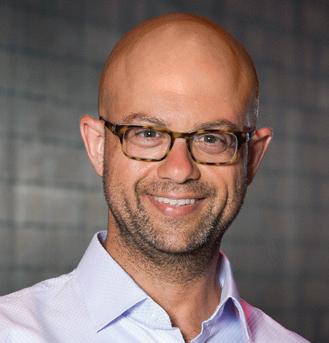
The same thing happens in a crisis like this. You just start doing stuff. In the beginning, all you can do is talk about it. But then people start coming to you, and you naturally start to connect people who can help each other, get people what they need. It becomes organic growth, just like it does with business.
I am a member of the Entrepreneurs’ Organization. We’re working with its chapters in Poland and Germany. We get lists of what people need in Ukraine—medical supplies, personal hygiene products, clothing, mattresses, night vision, drones, helmets and so on. We raise money here and send it to our contacts there. They buy the supplies and get them to the border. Then brave volunteers take them wherever they’re supposed to go, Kharkiv or Kiev or Vinnytsia or Kherson or other cities. That’s how we’re supplying those things.
It’s also important to take note of President Zelenskyy. We’ve seen leaders who fled war and instructed from a distance. Zelenskyy is there. He’s constantly on camera. Because of his leadership, the whole country is standing against invasion, fighting Russians and not giving up. That’s a huge, huge lesson for everybody.
It may seem like just a flight, but it is far more than that. Each journey is the culmination of careful planning, flawless execution, and an unbridled passion to provide the best in world-class customer service. It is in each friendly handshake with the industry’s best pilots and it is in the calm that takes over as you settle into your seat aboard a perfectly appointed aircraft, all Owned and Operated by NICHOLAS AIR.


Our commitment to provide the ultimate in private aviation experiences stretches back 25 years and yet each day, our team works diligently to refine every detail. From the personalized attention to our commitment to providing the highest quality aircraft to the Most Refined Set of Private Flyers, the NICHOLAS AIR team is solely focused on one mission--- yours.
From shorter commutes to better business incentives, Ohio sets you up for success in all areas of your life. Ohio was ranked the #1 most affordable state in 20201 and ranked #3 in housing affordability2 If you’re used to big city life, that’s the difference between having your whole office in a closet and having a whole closet just for your shoes.
